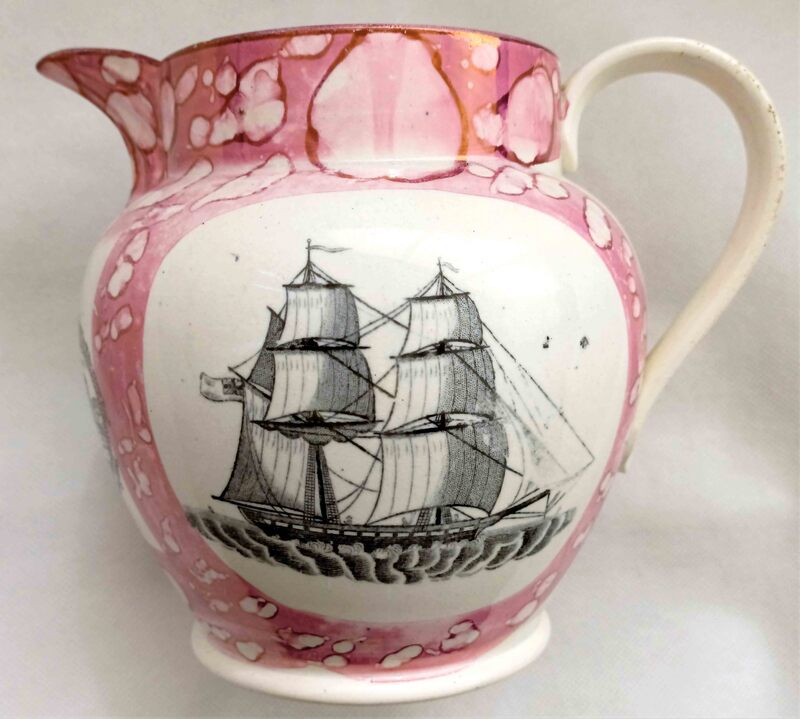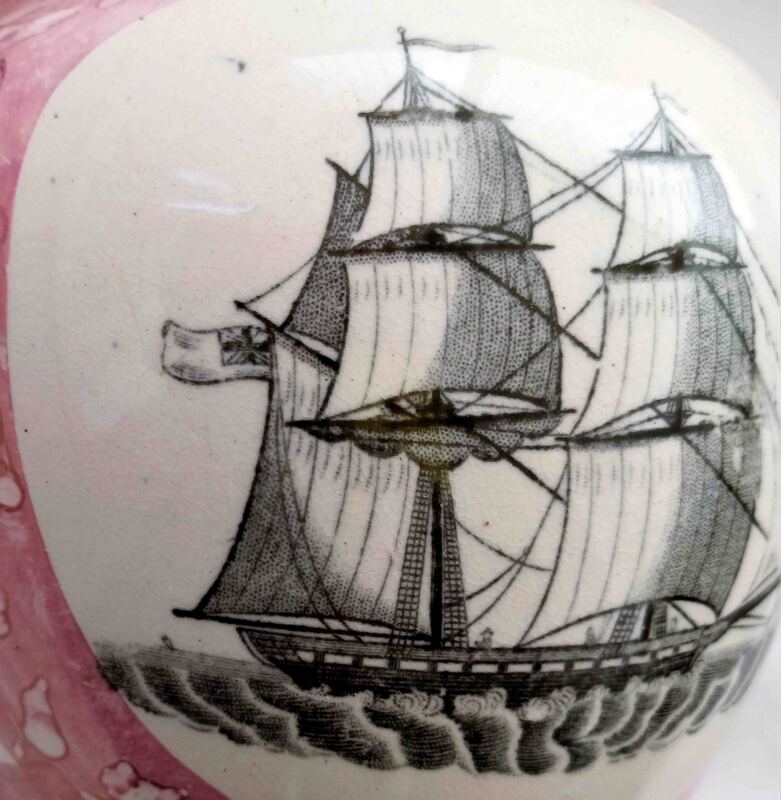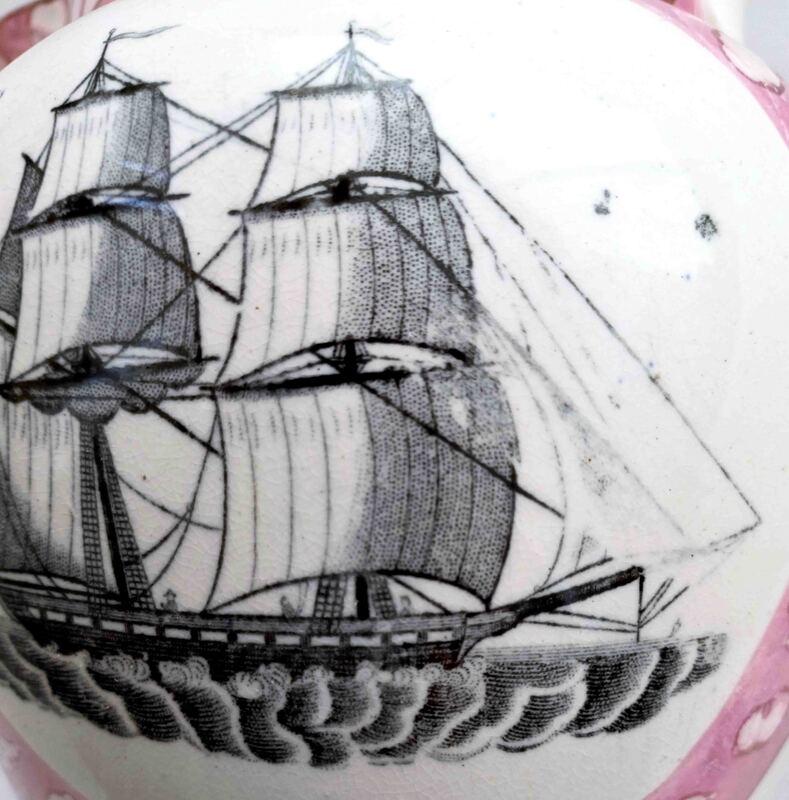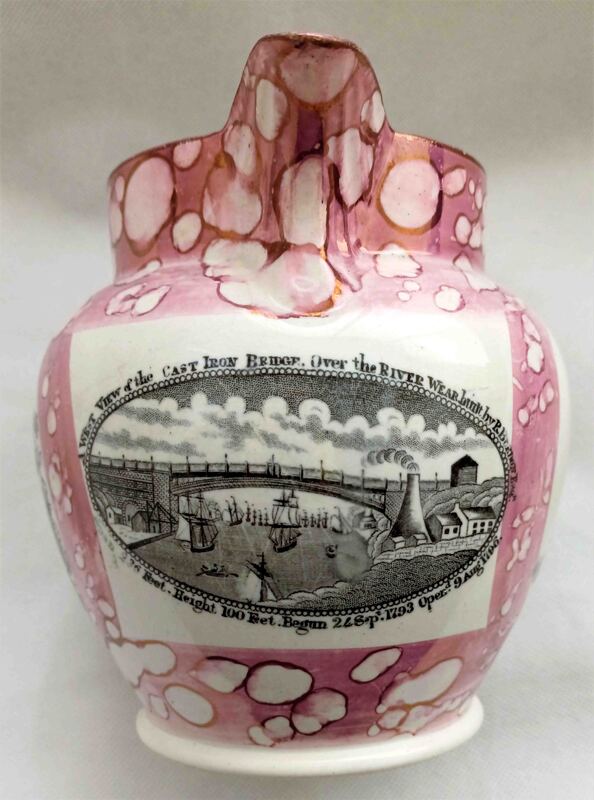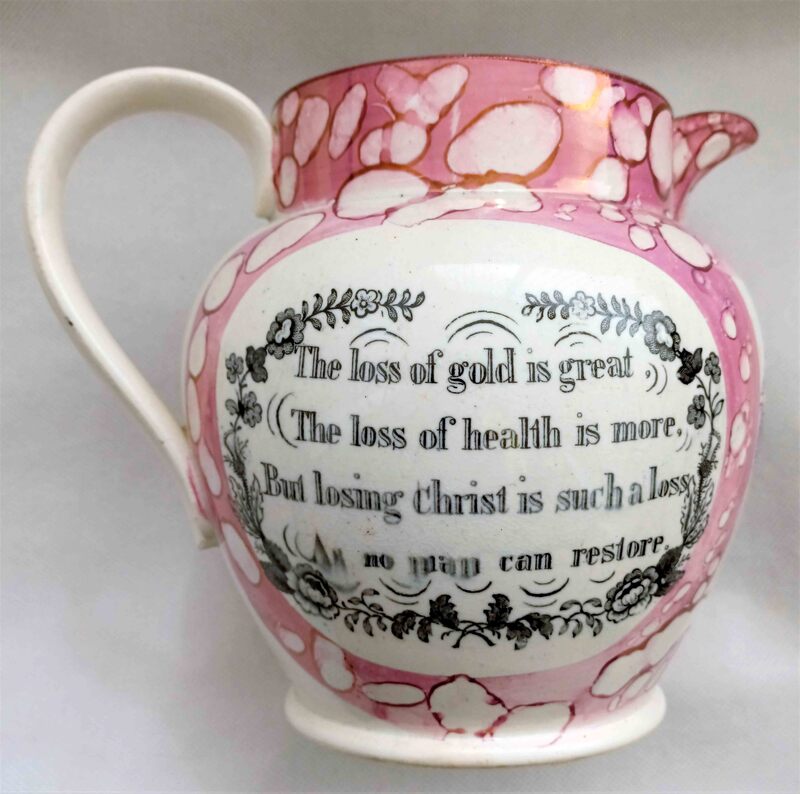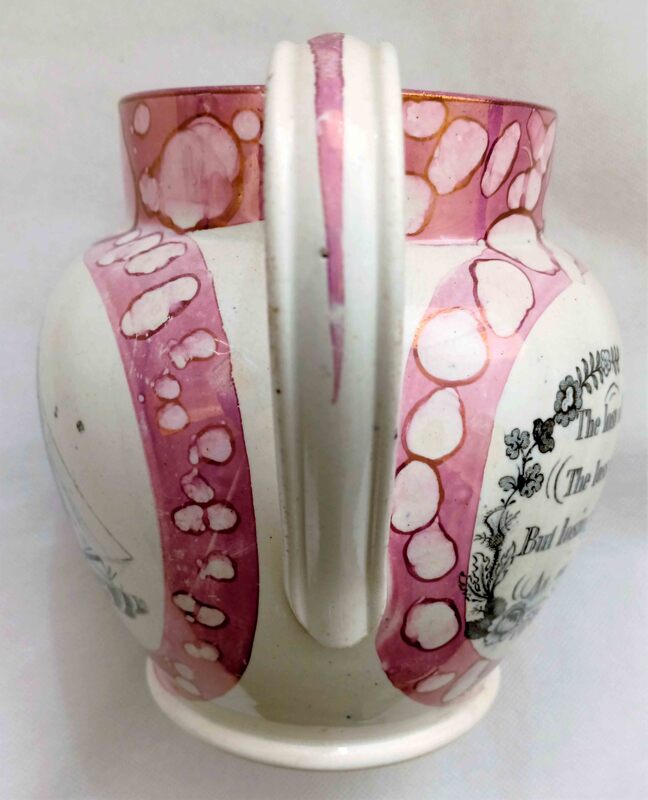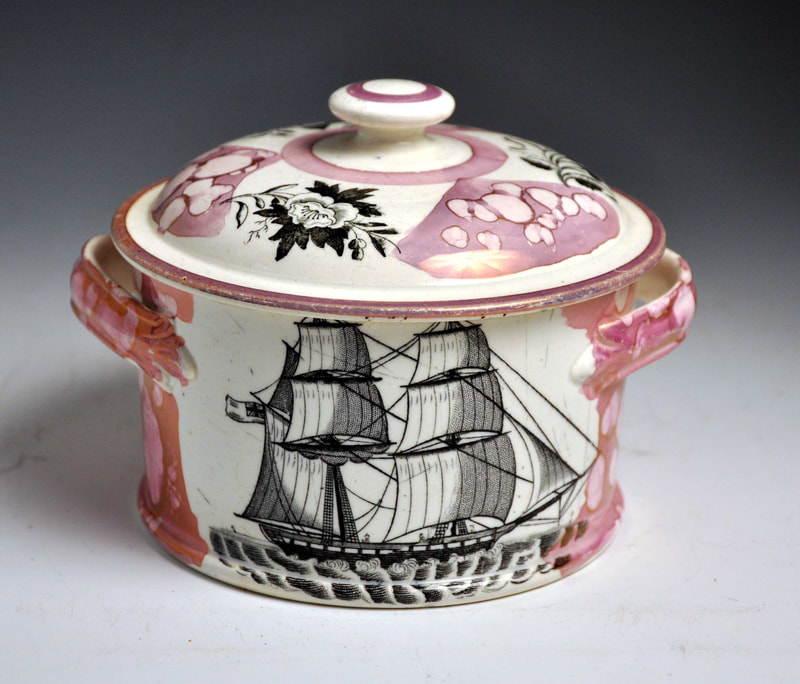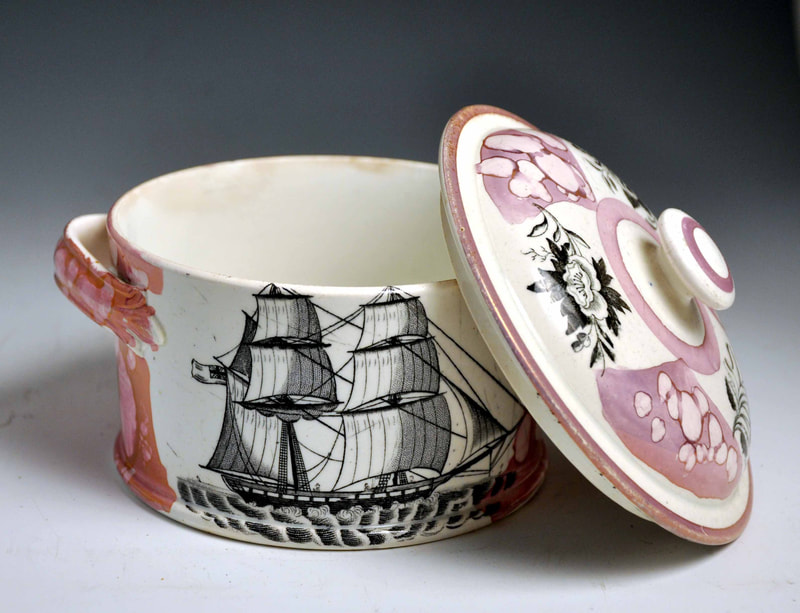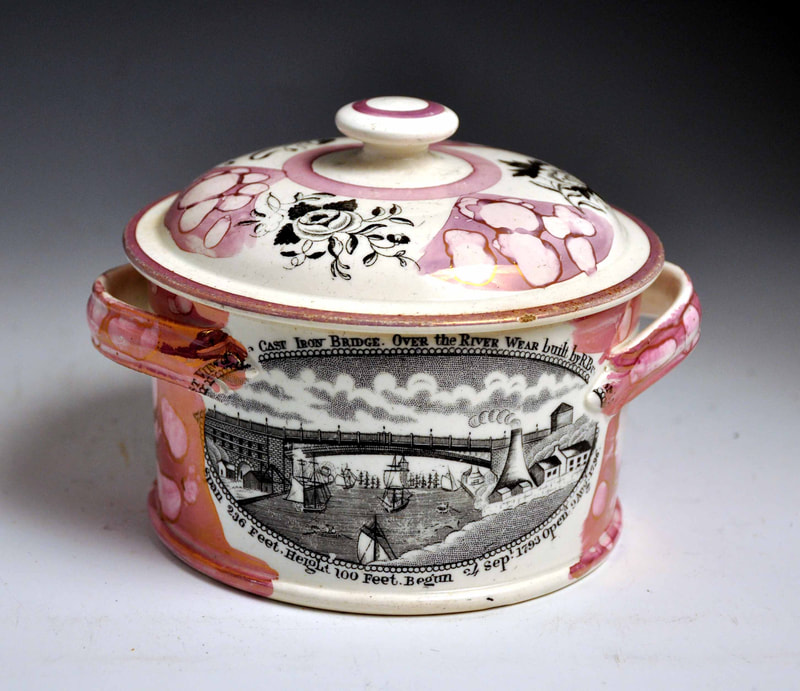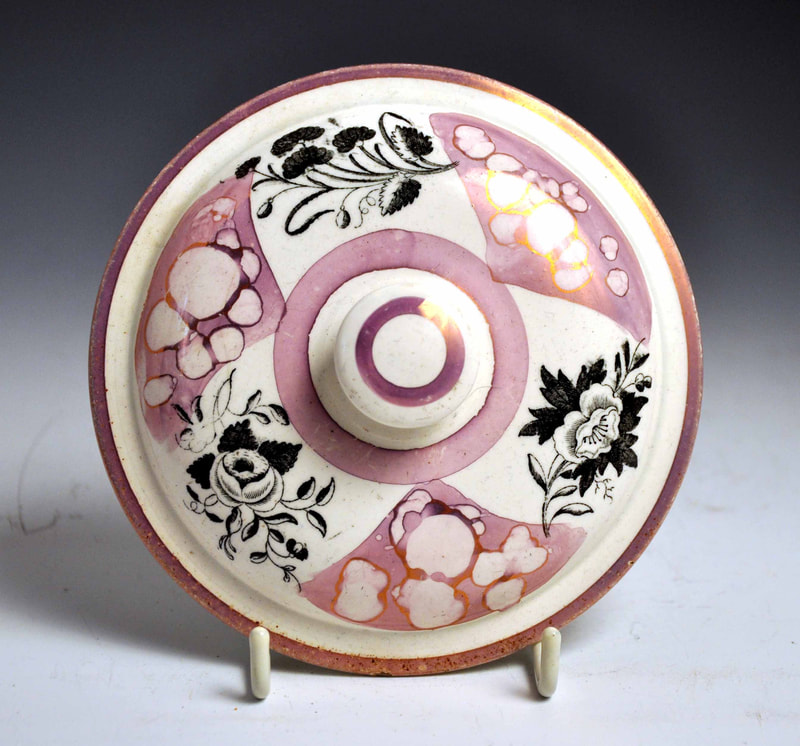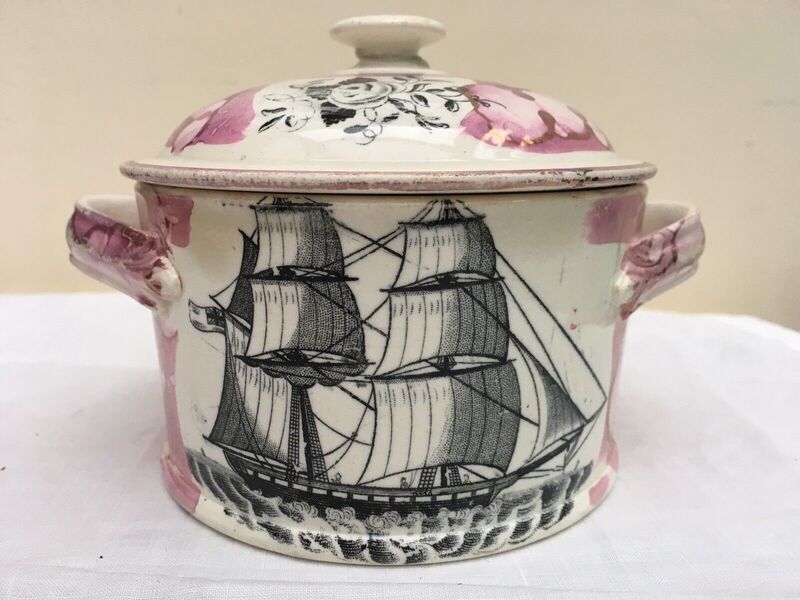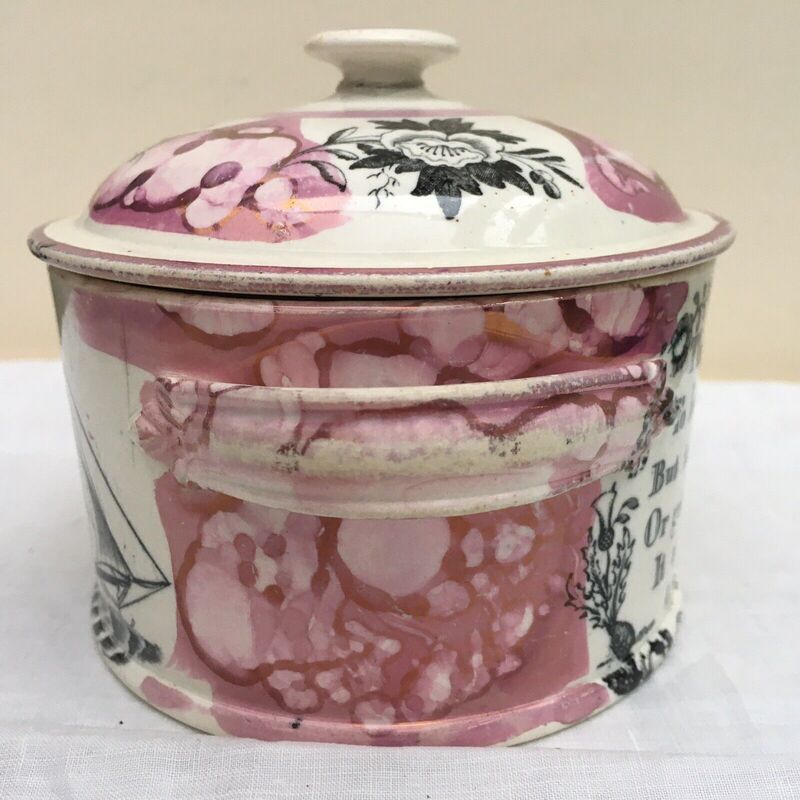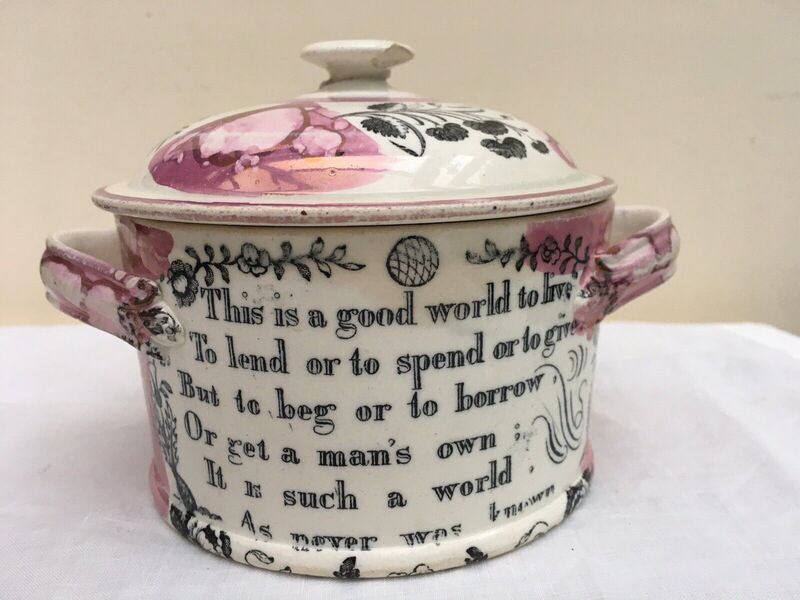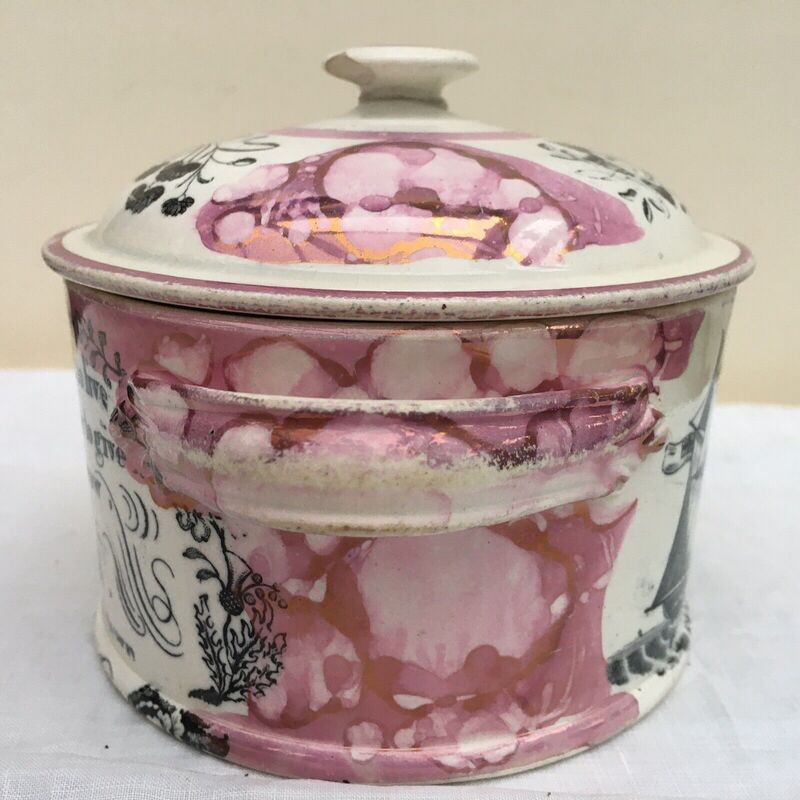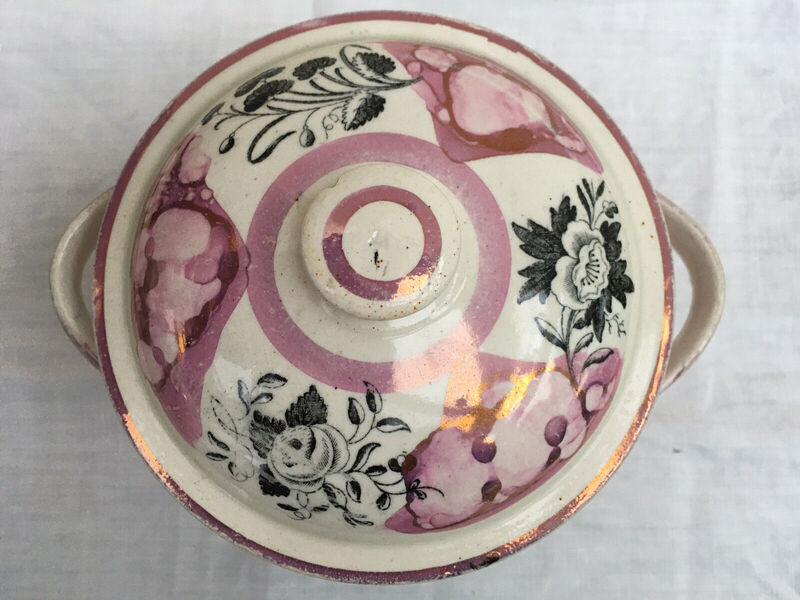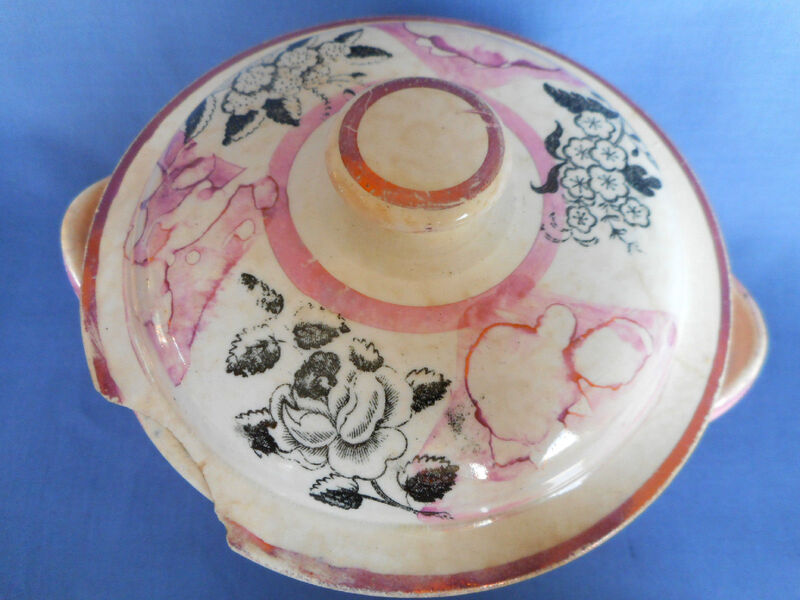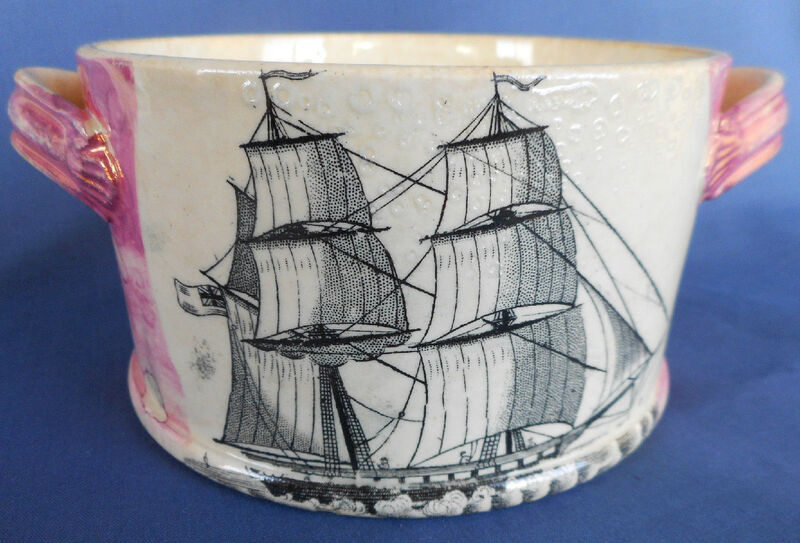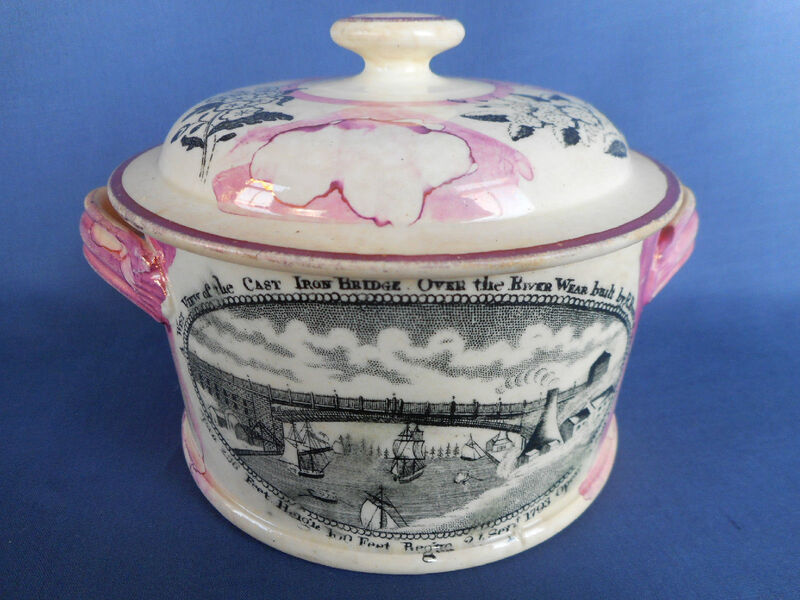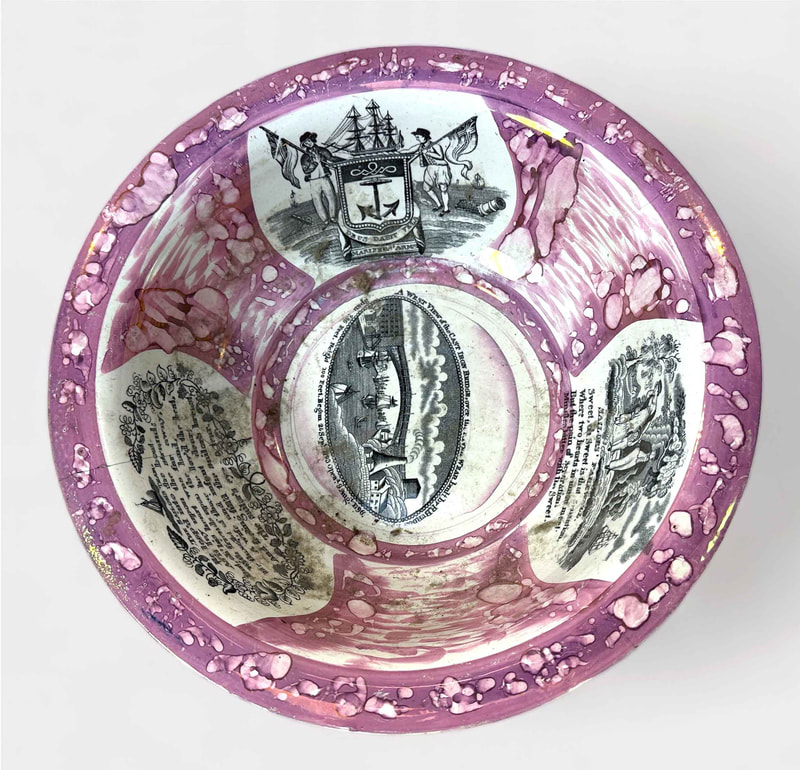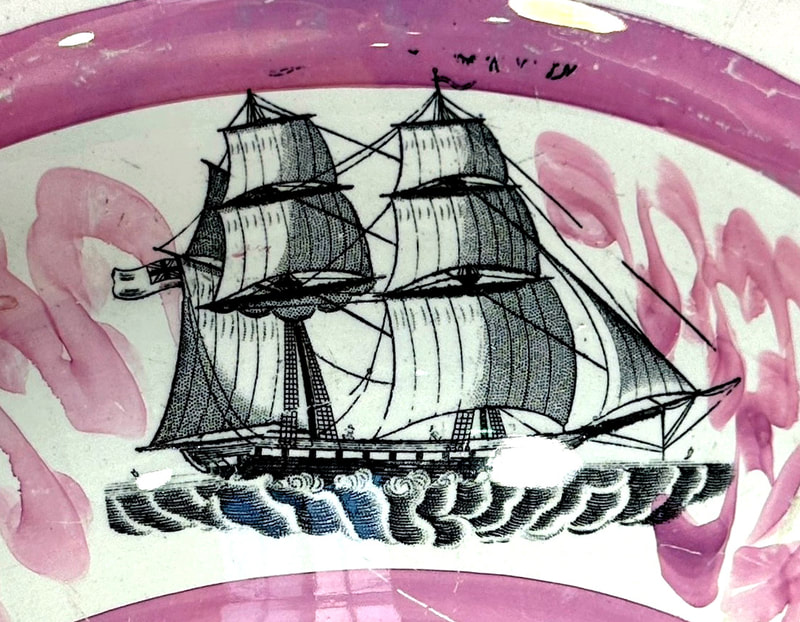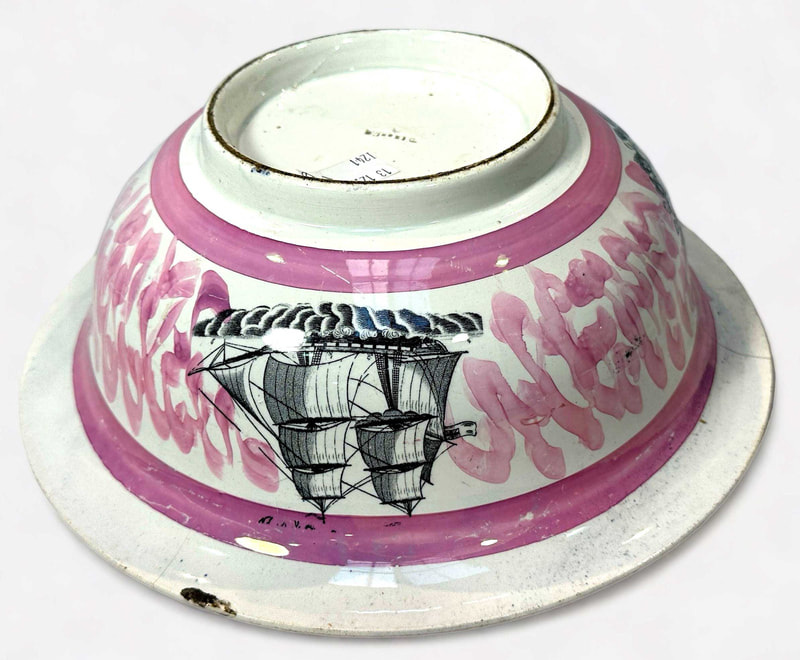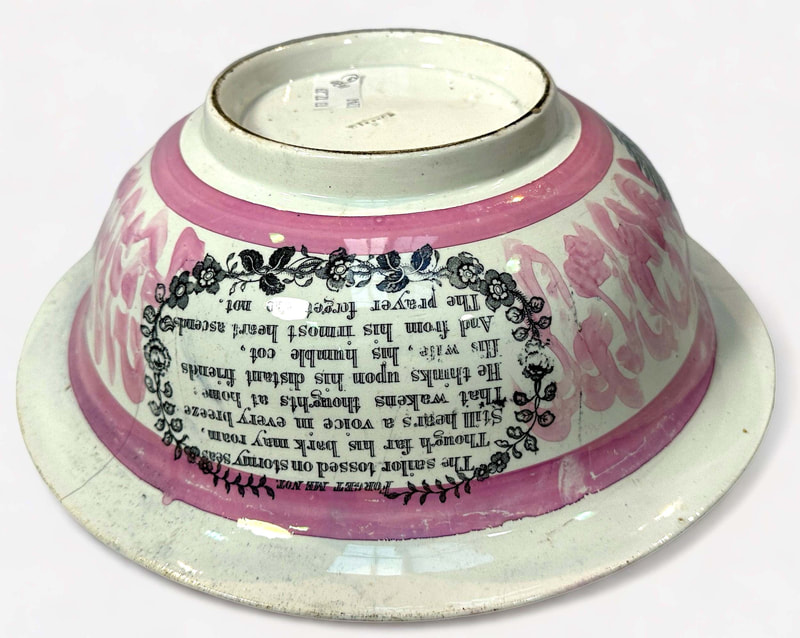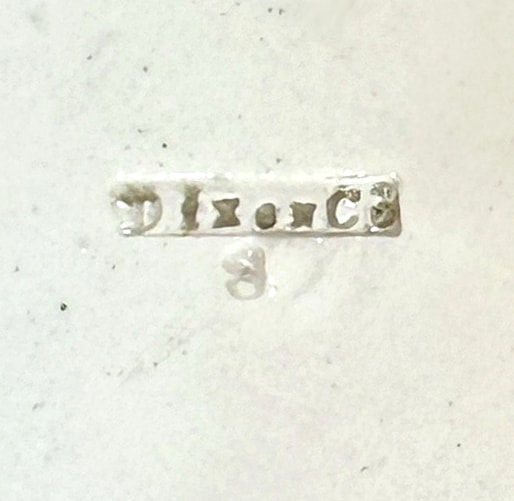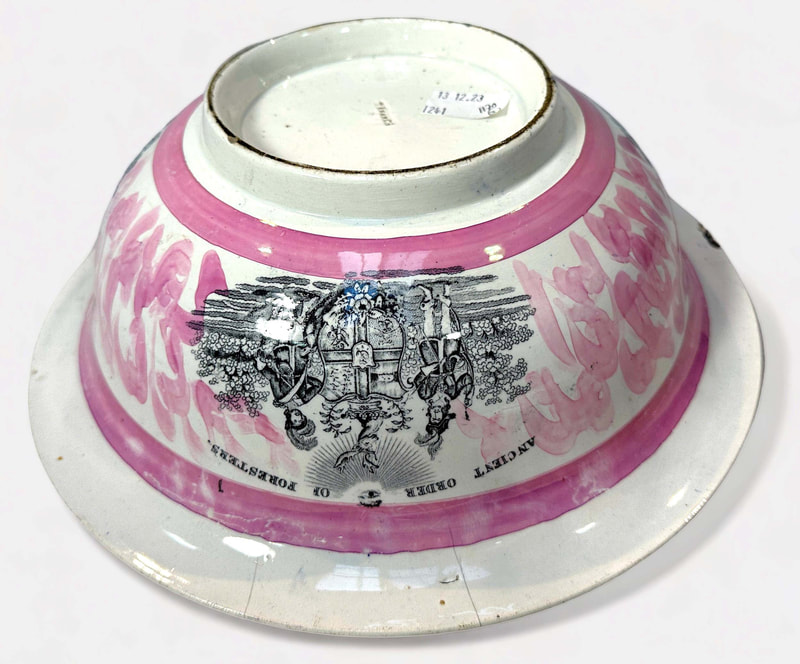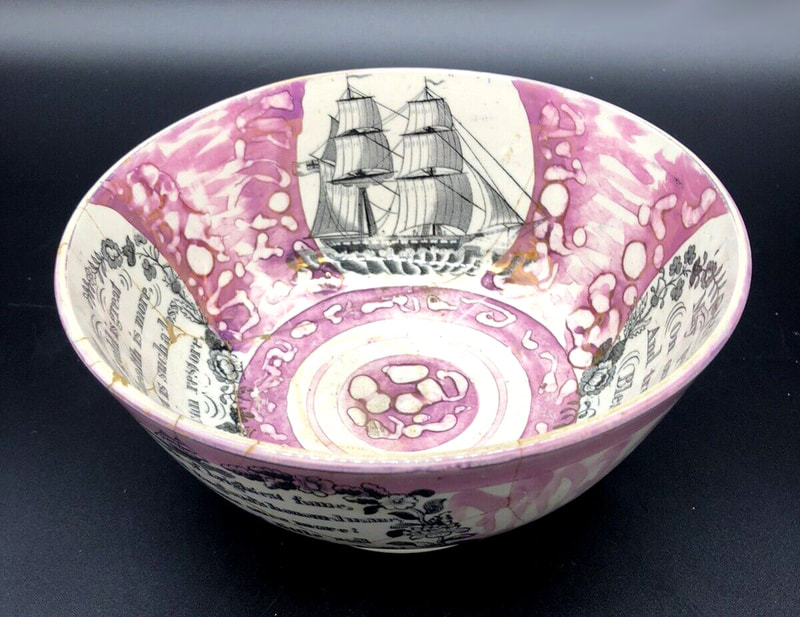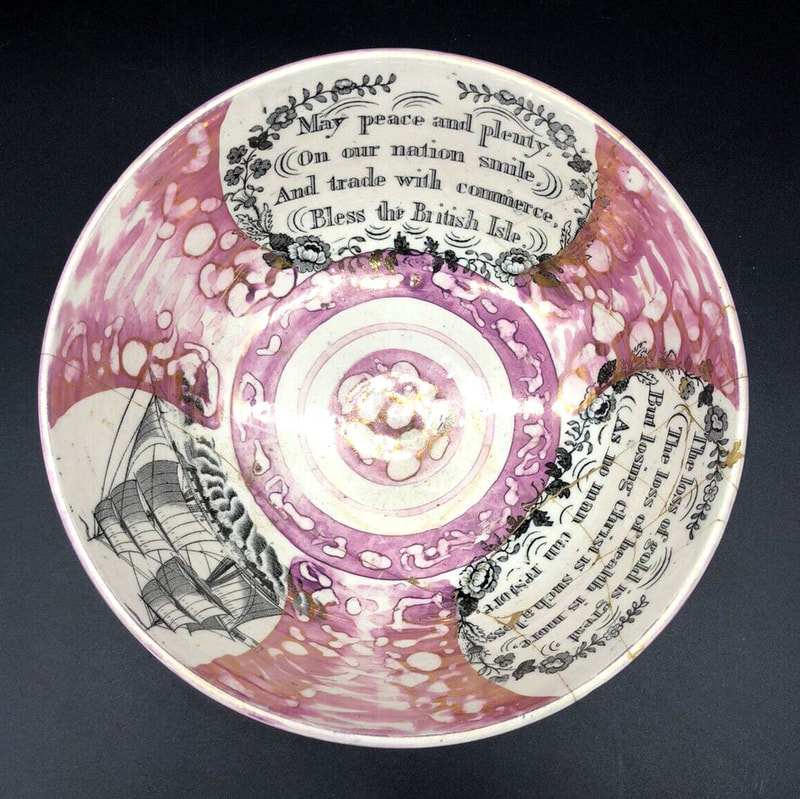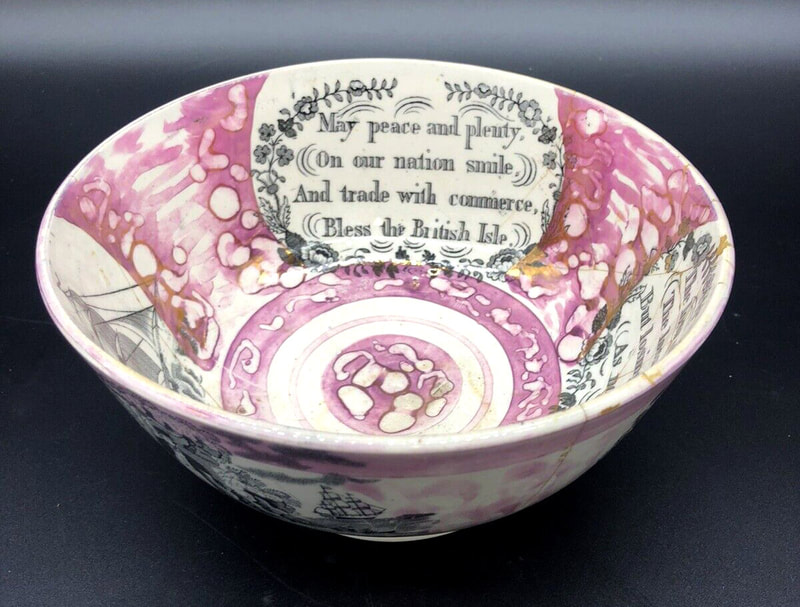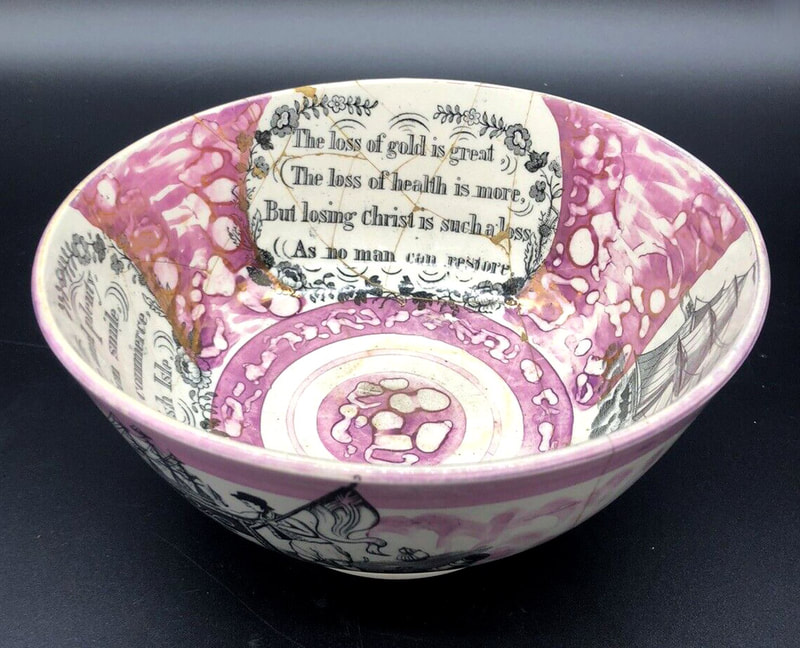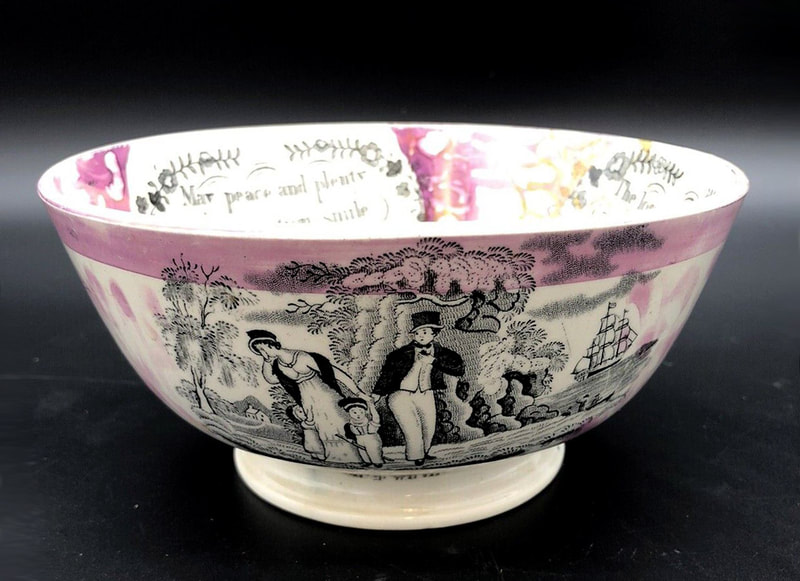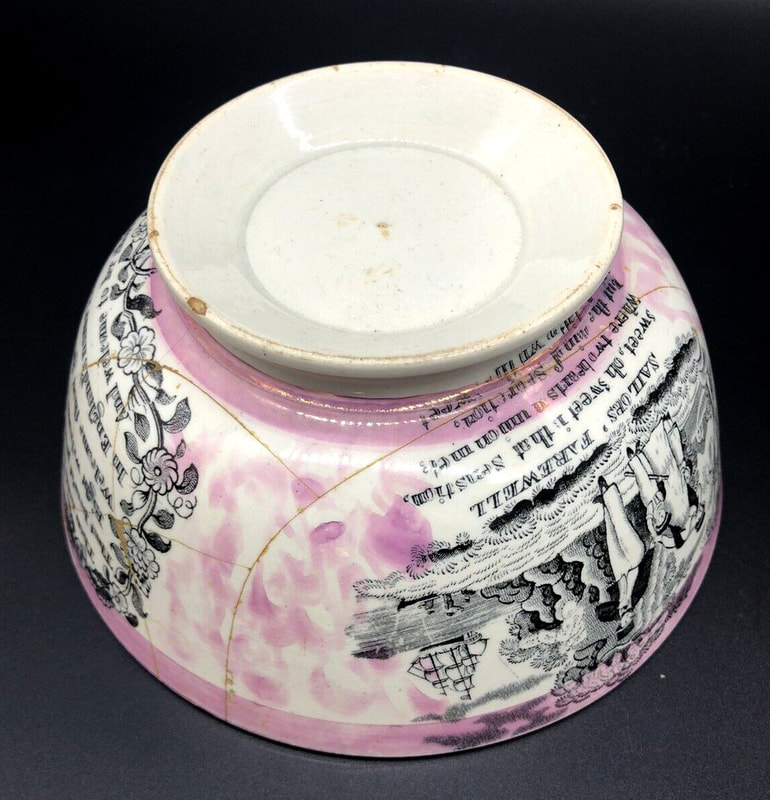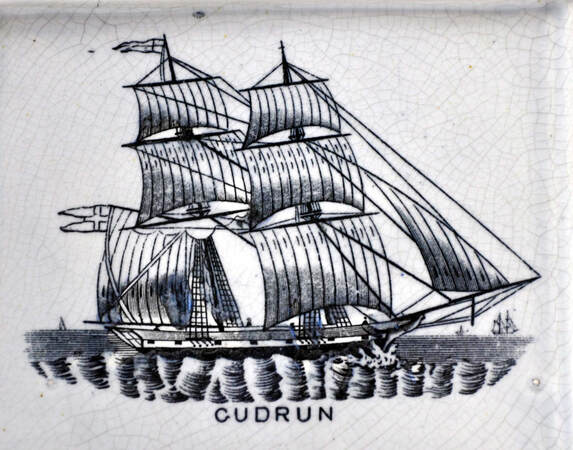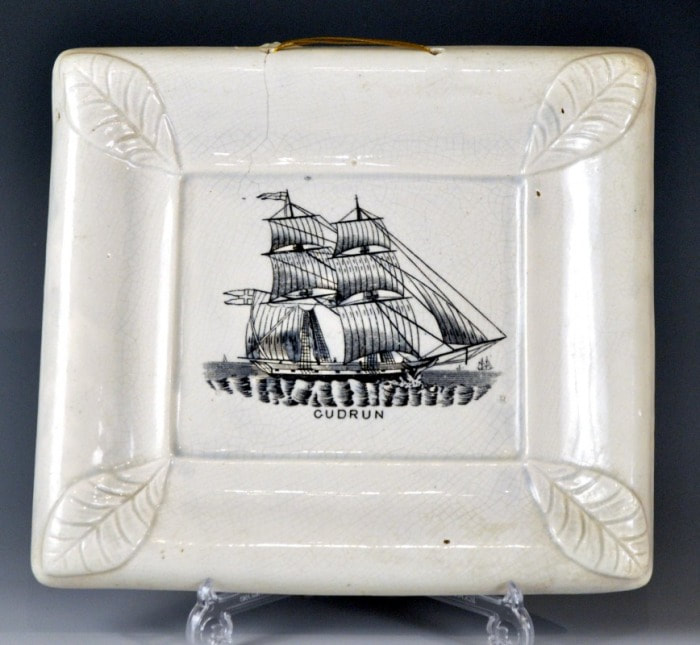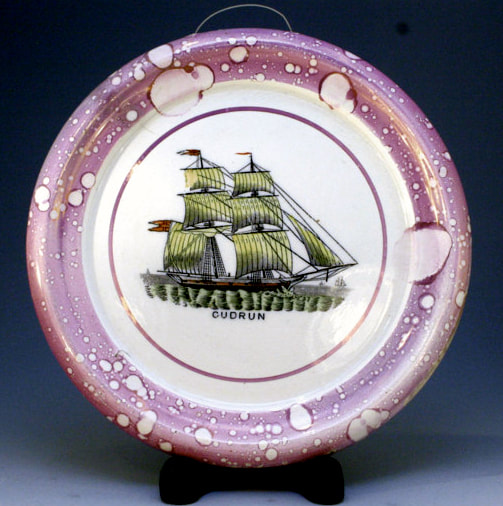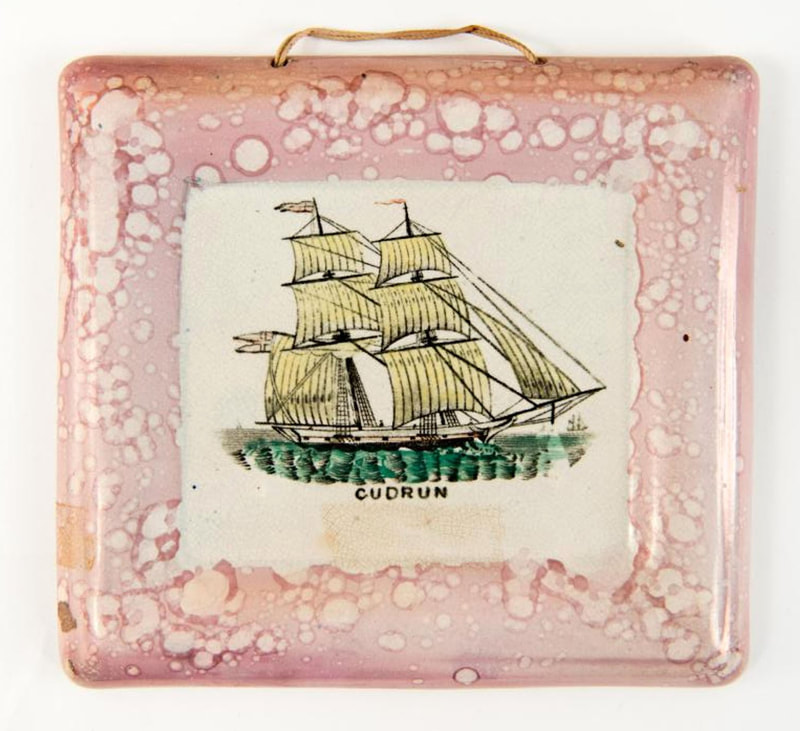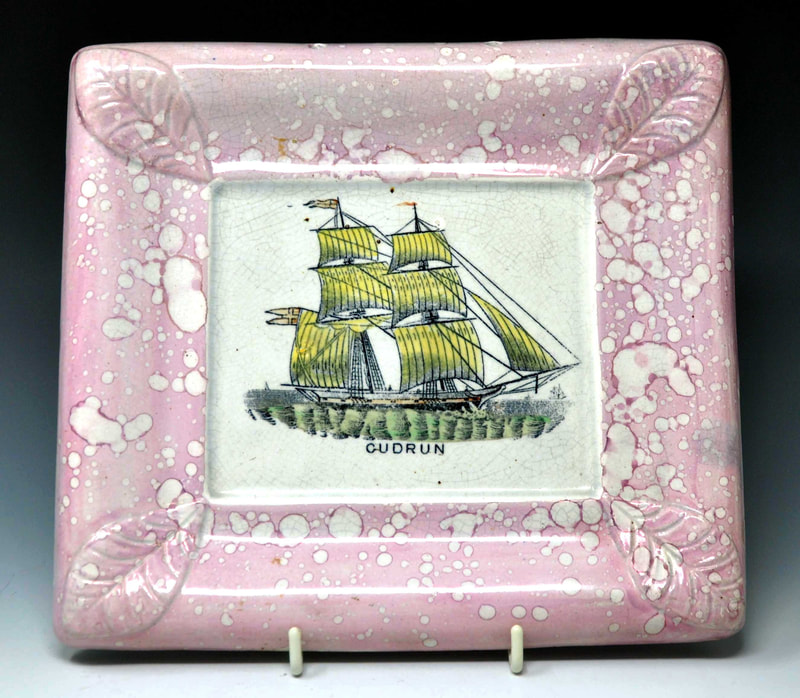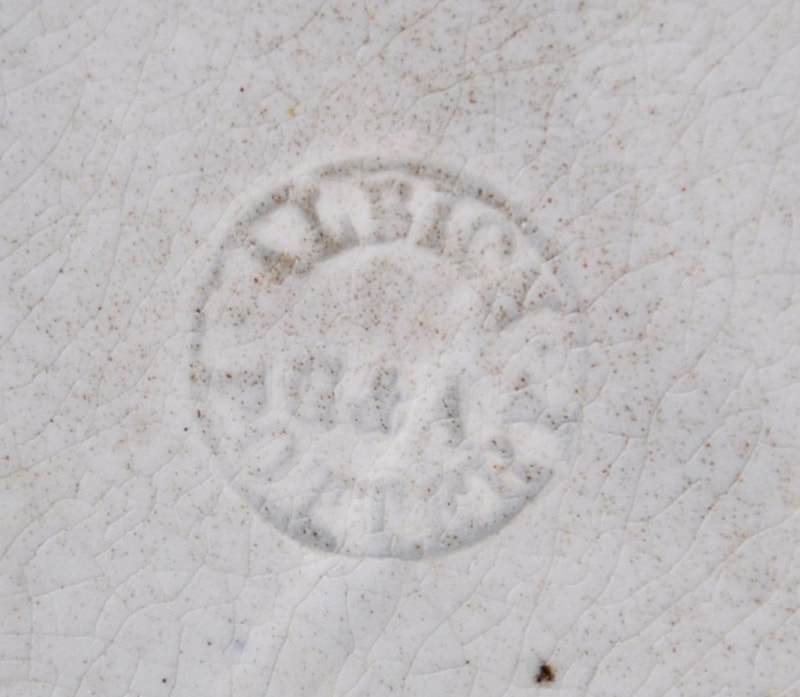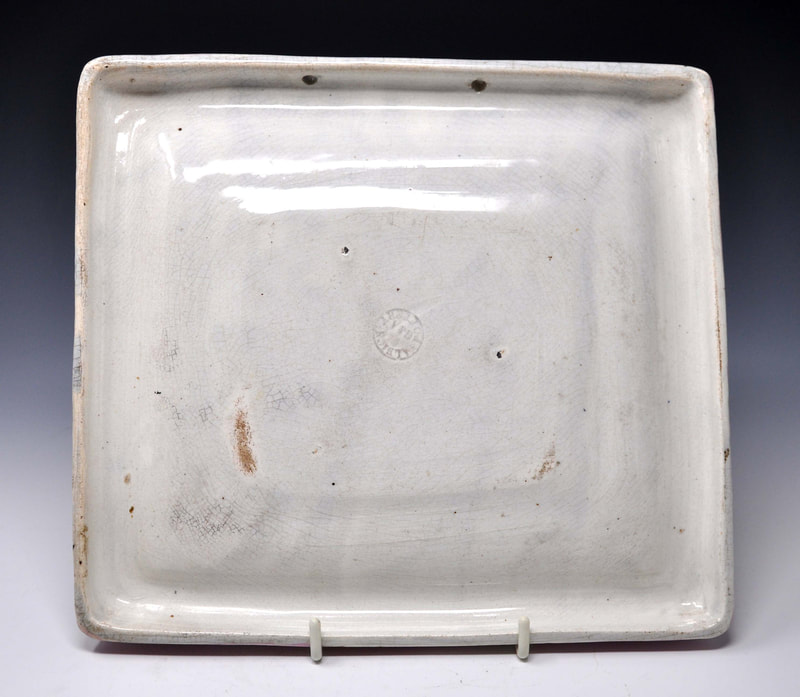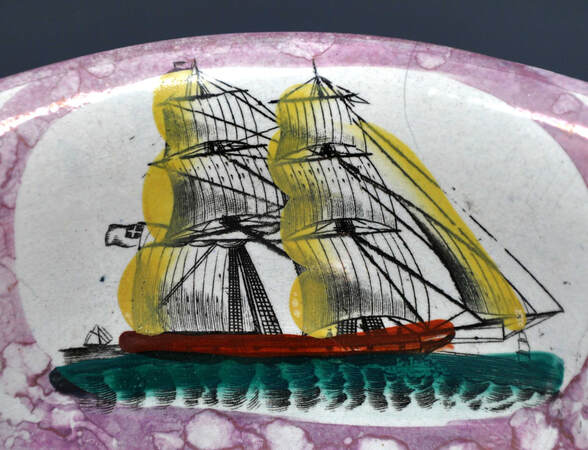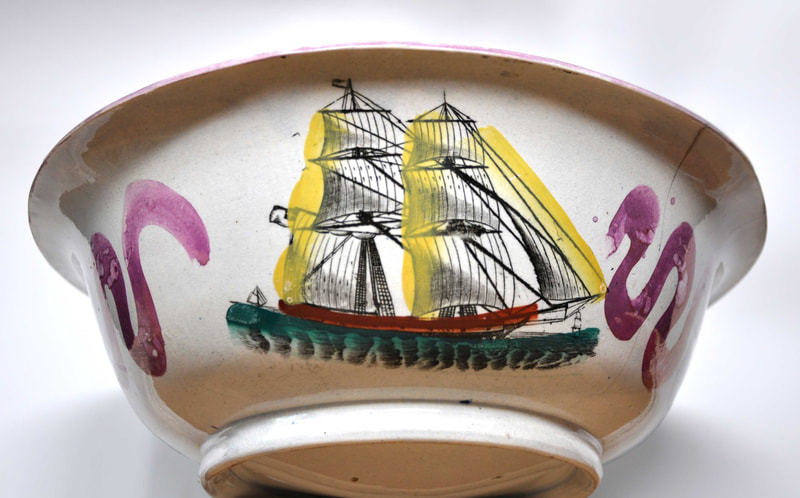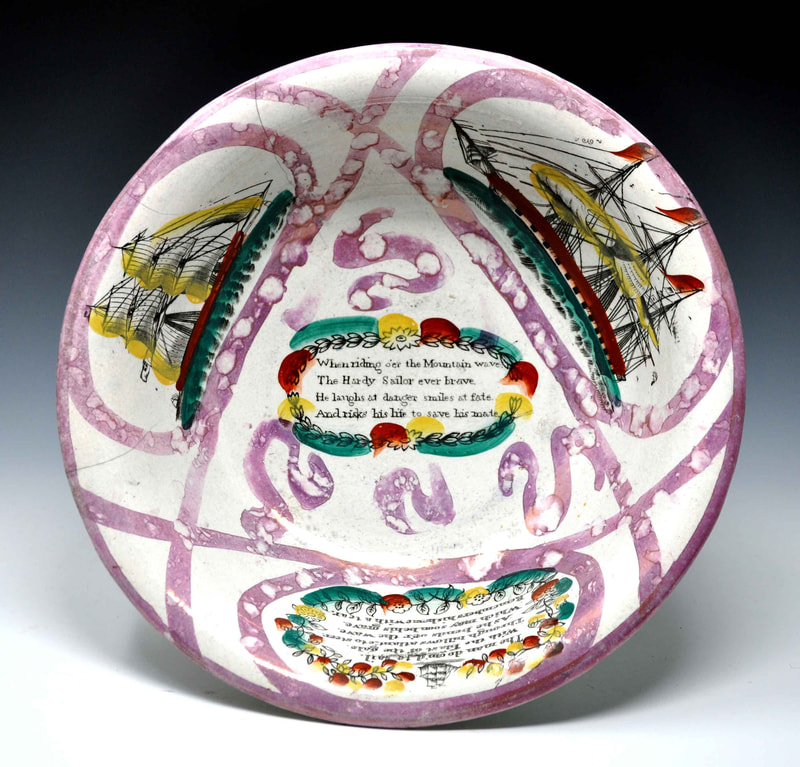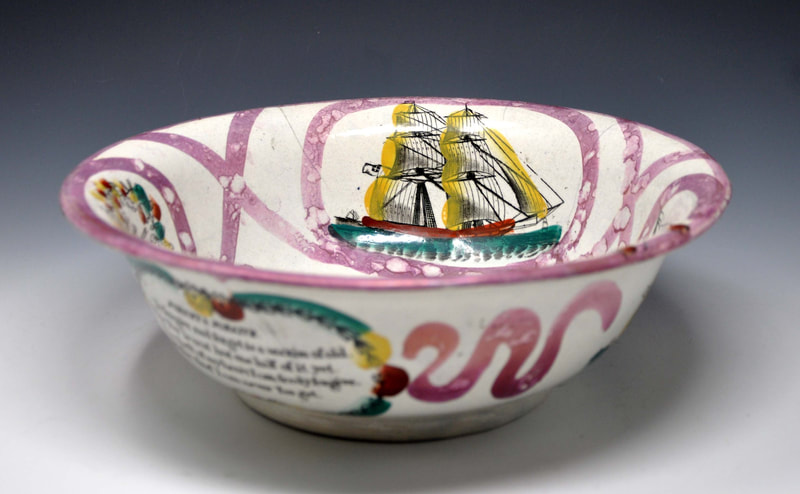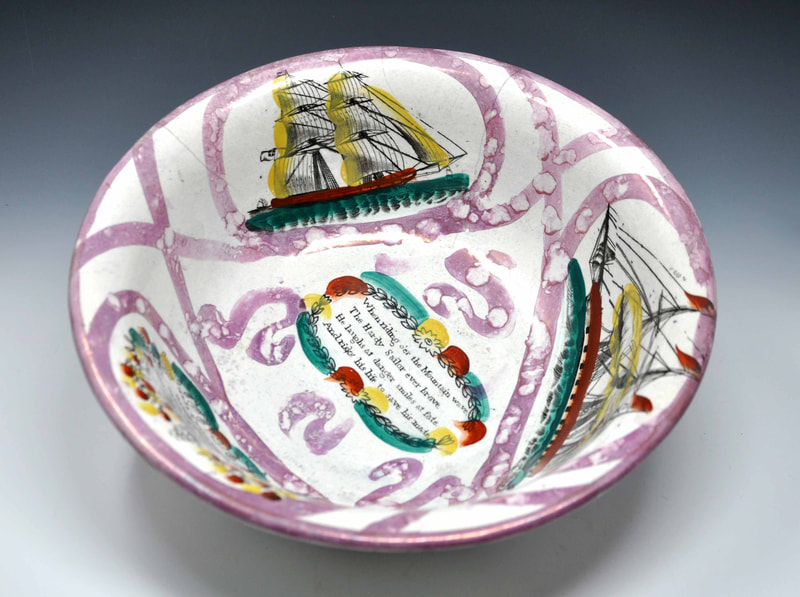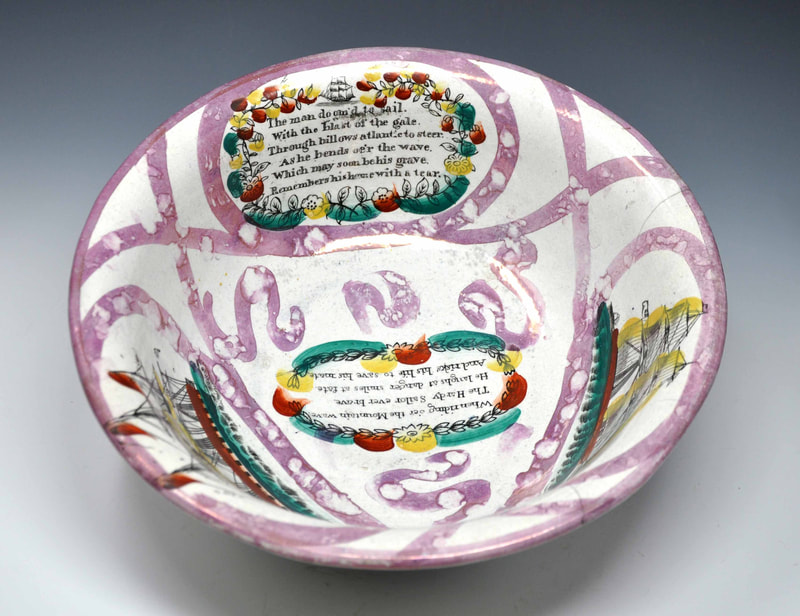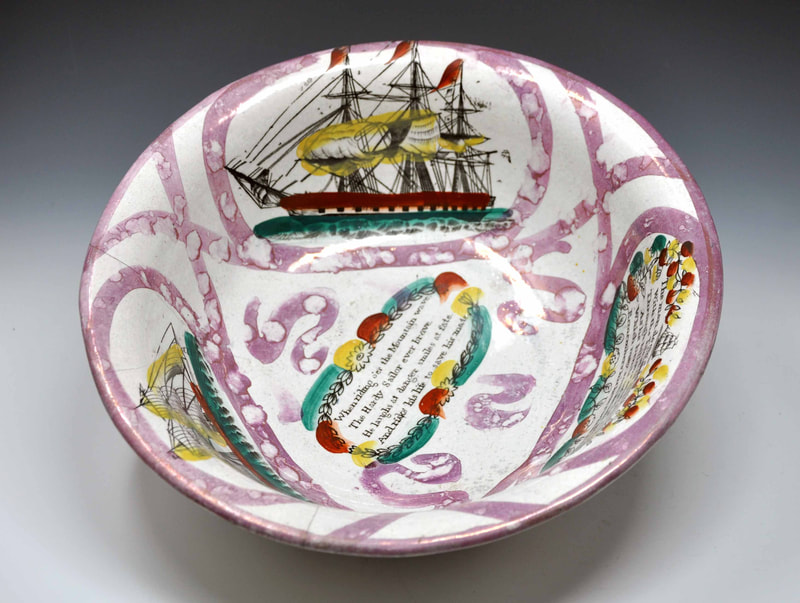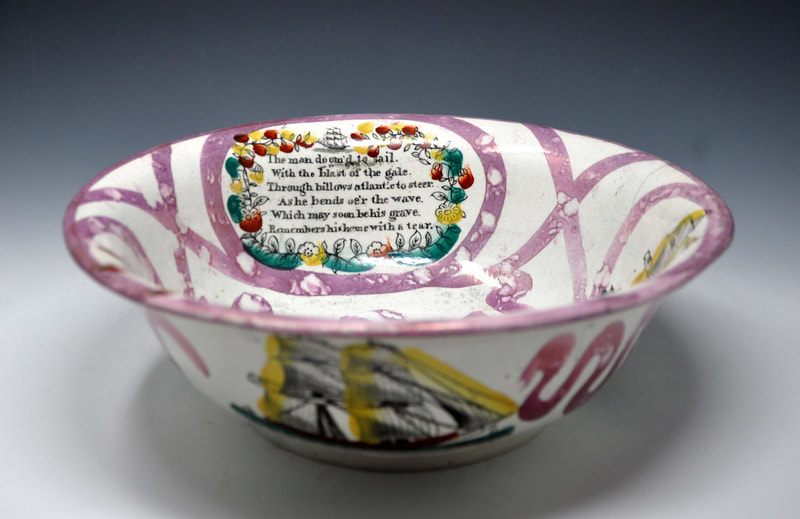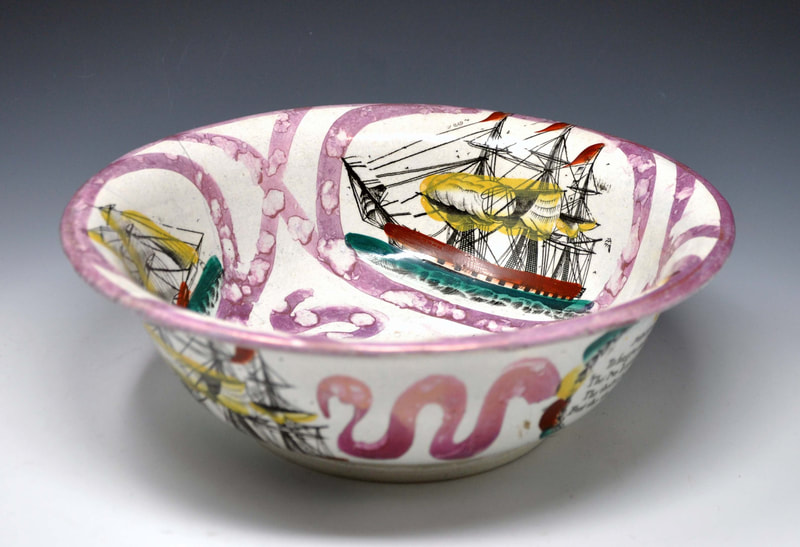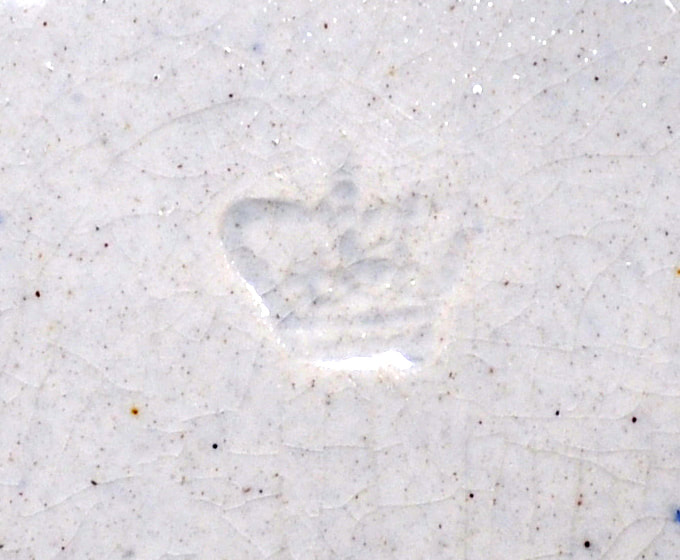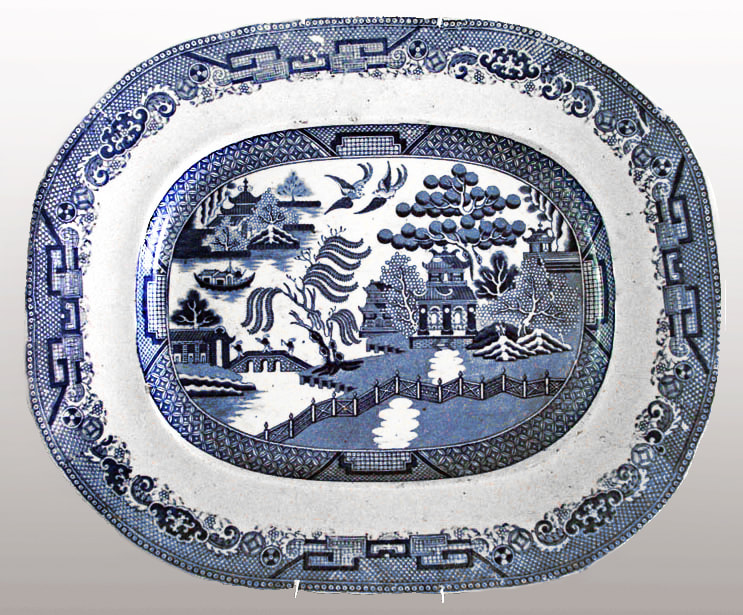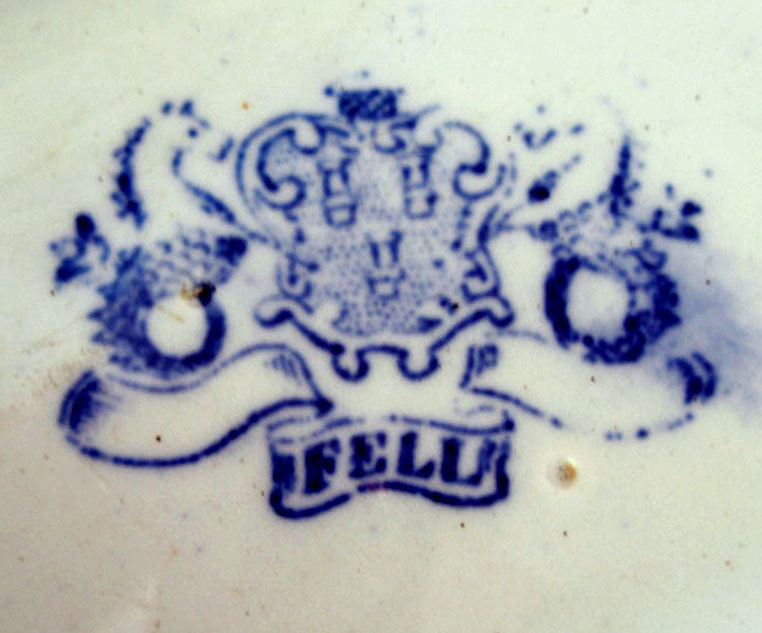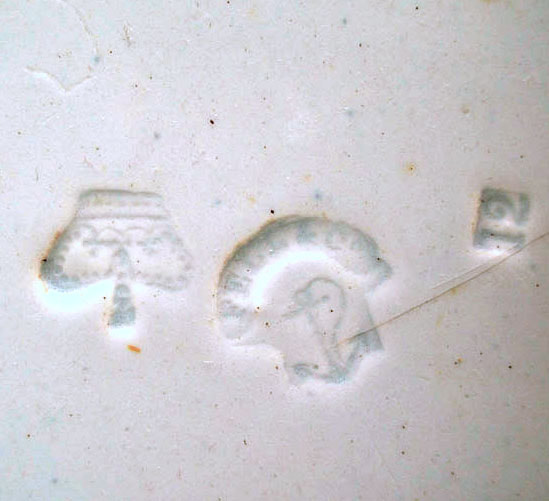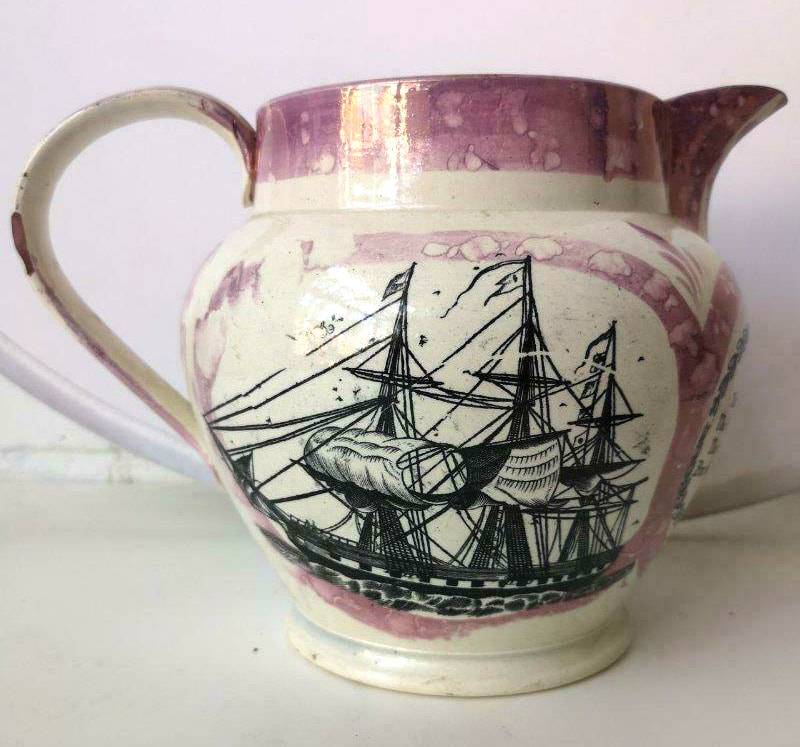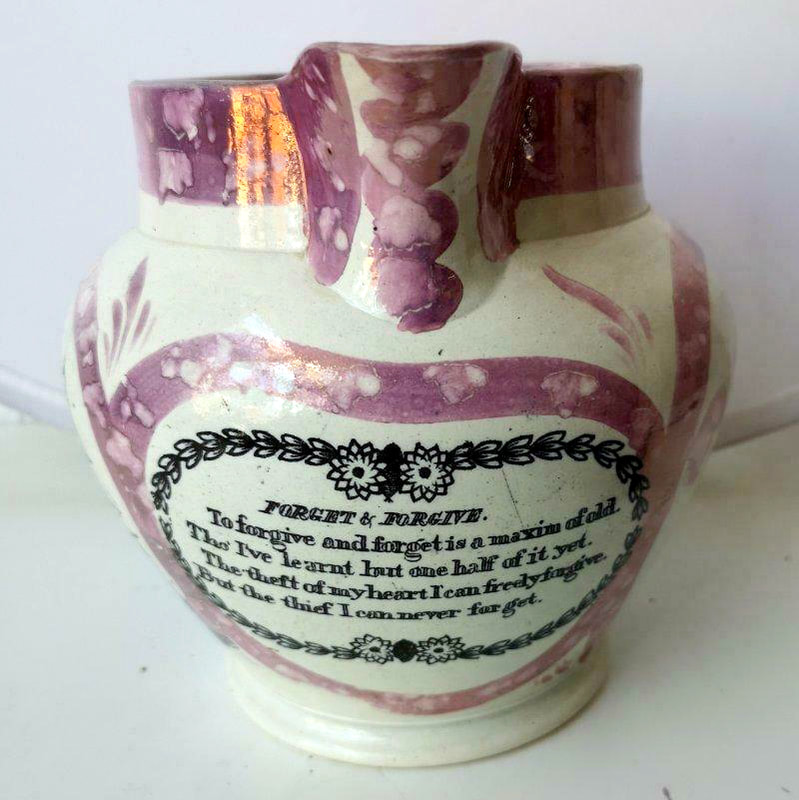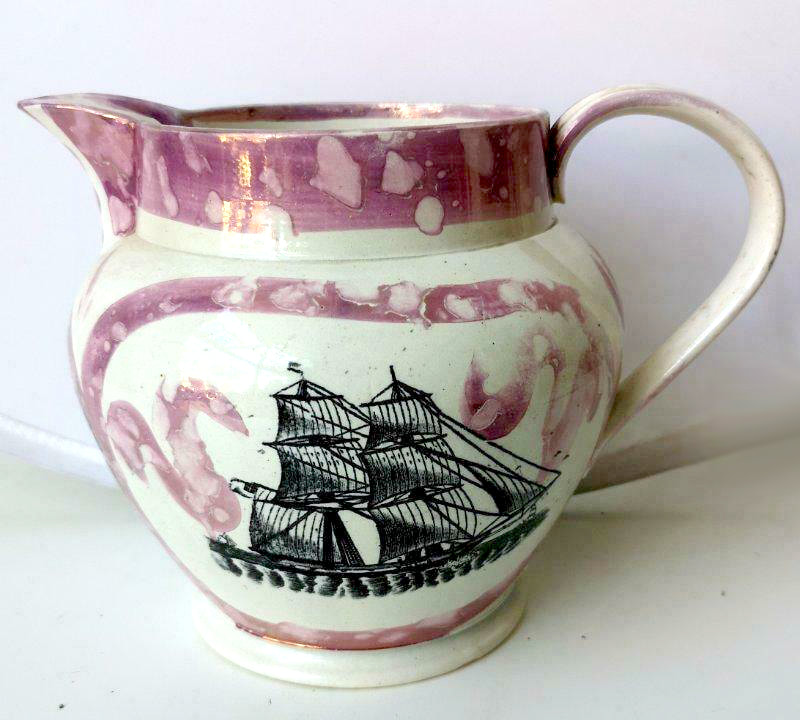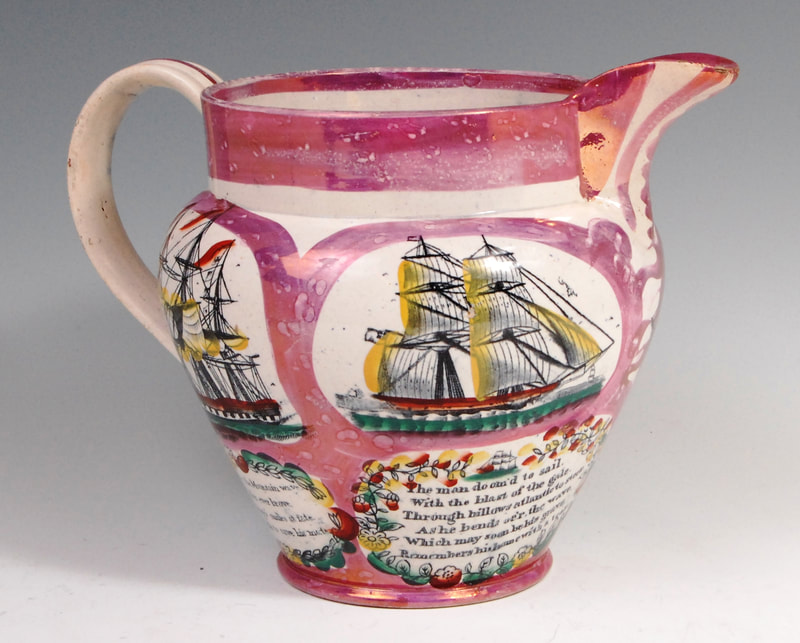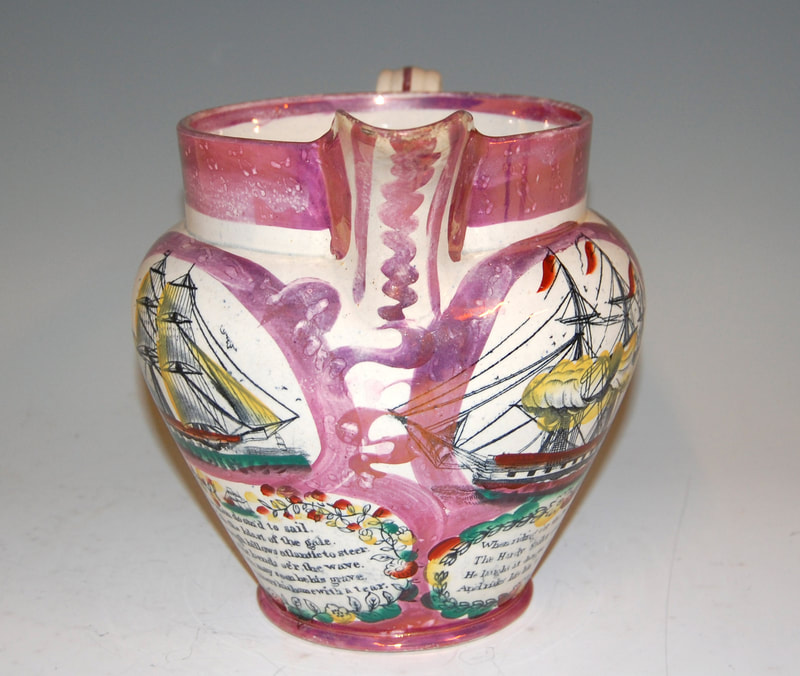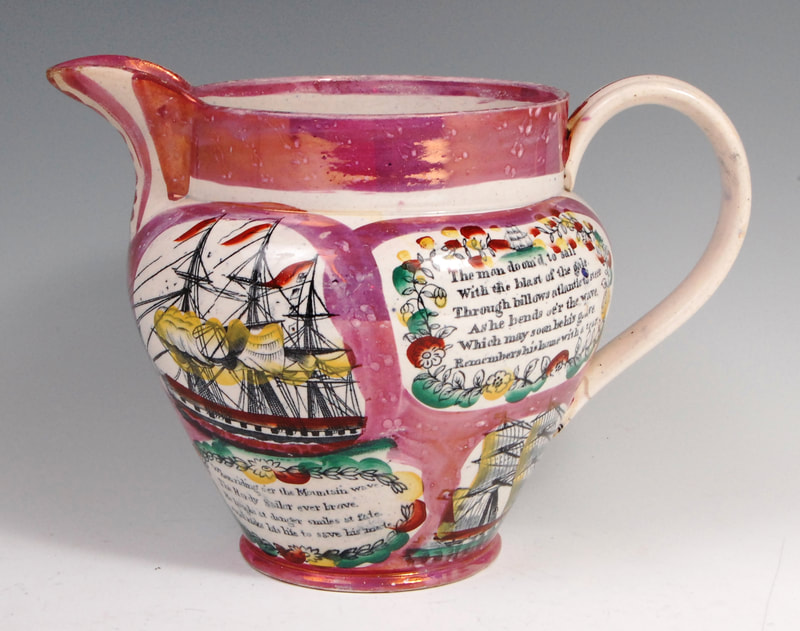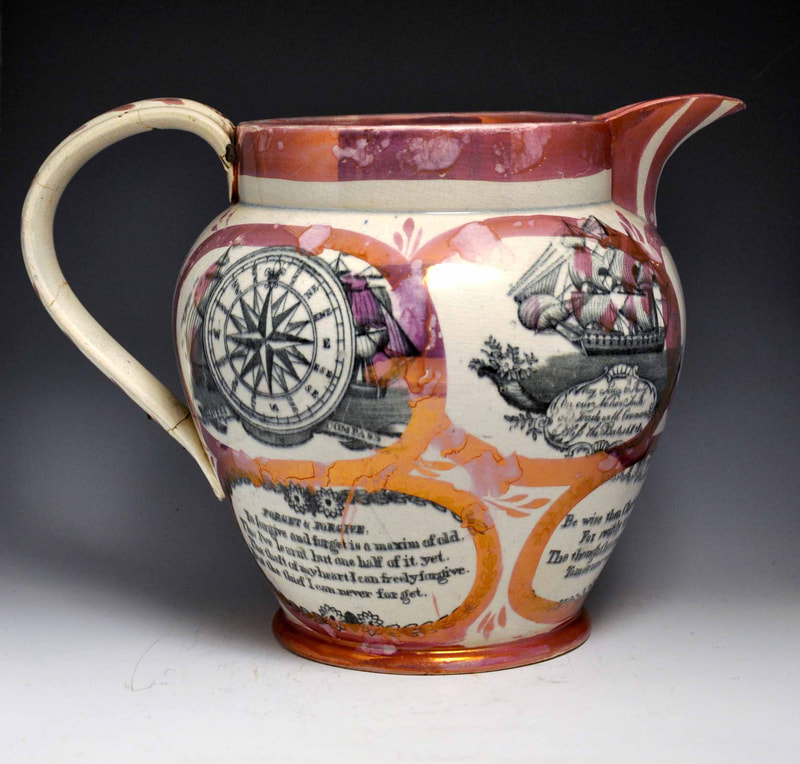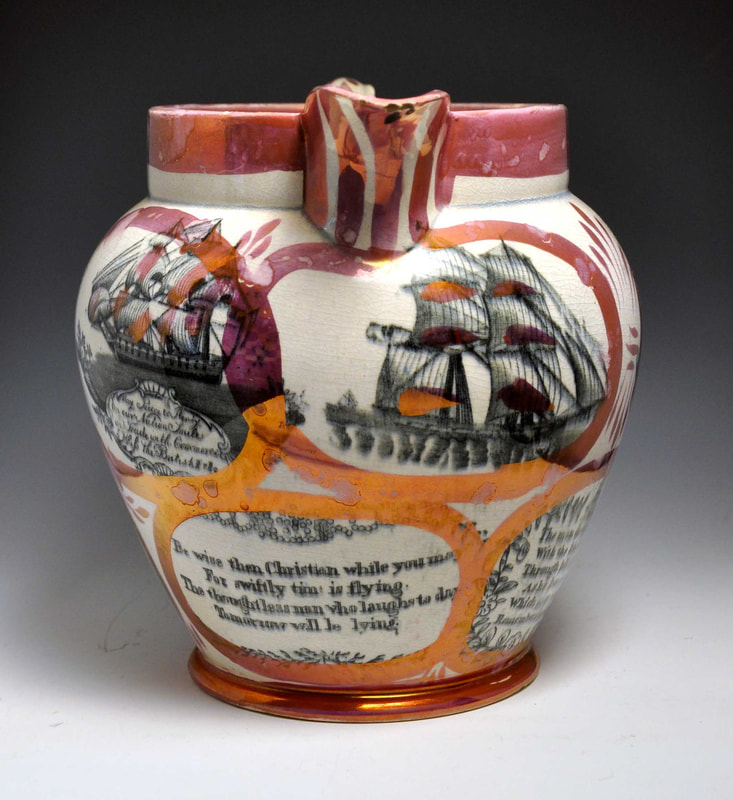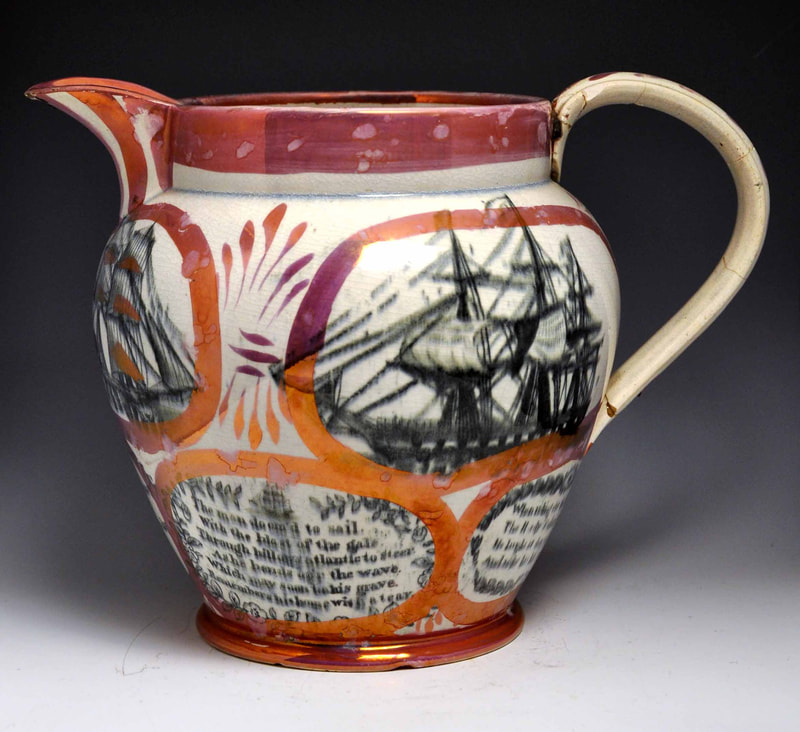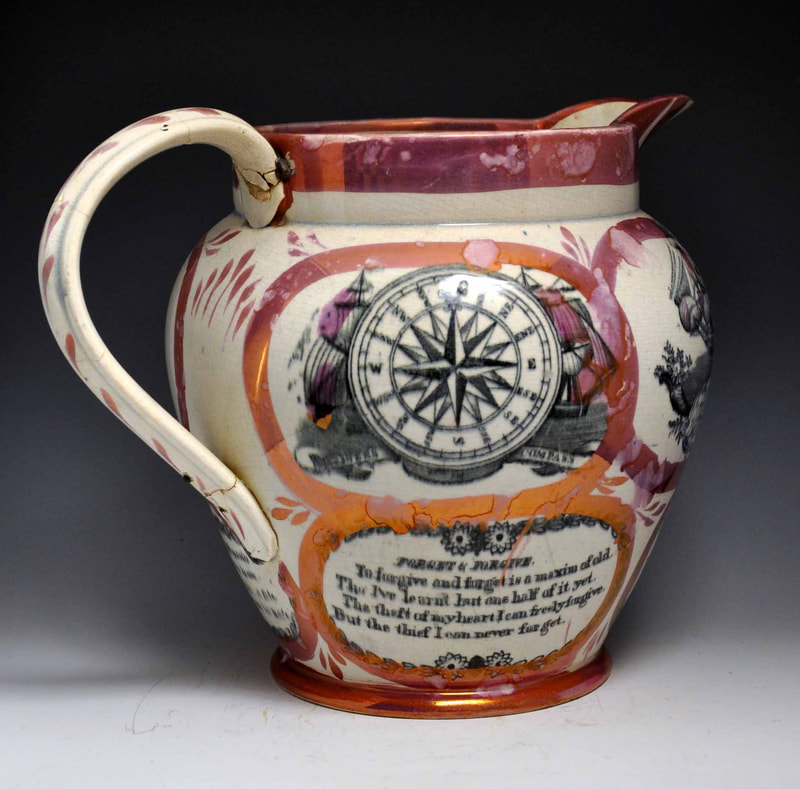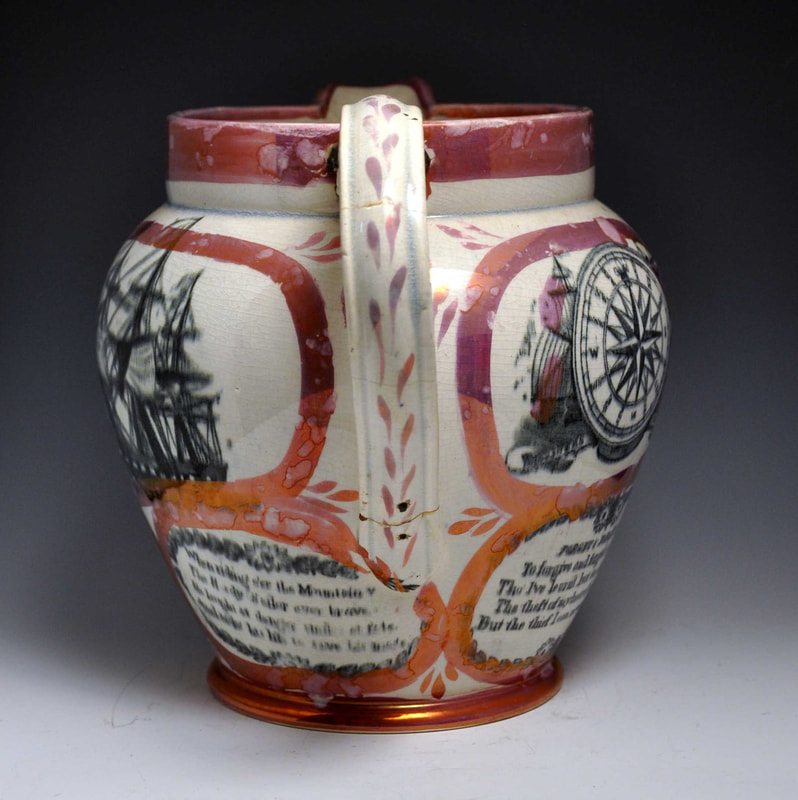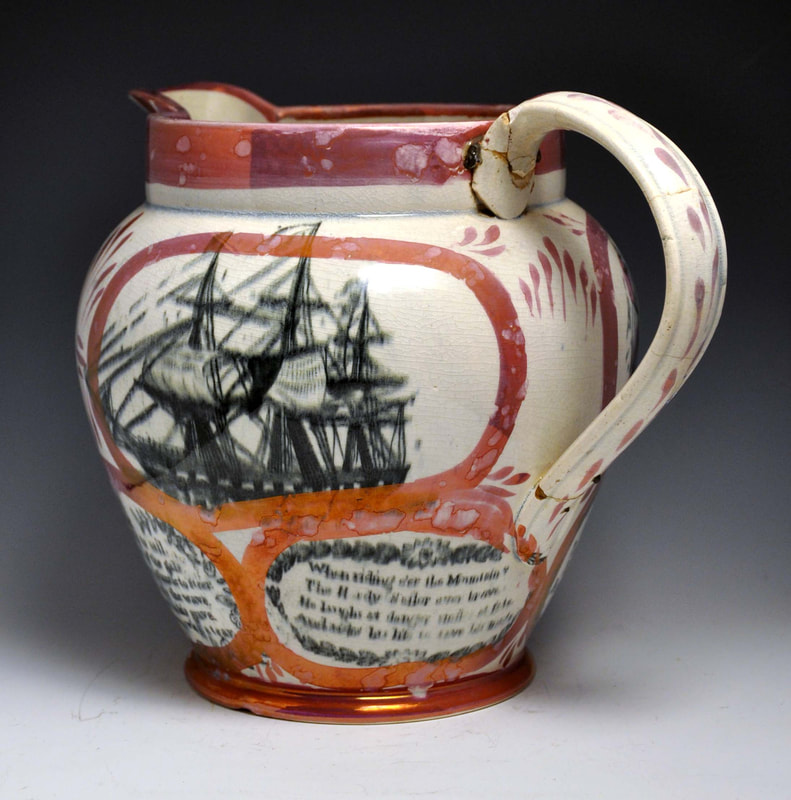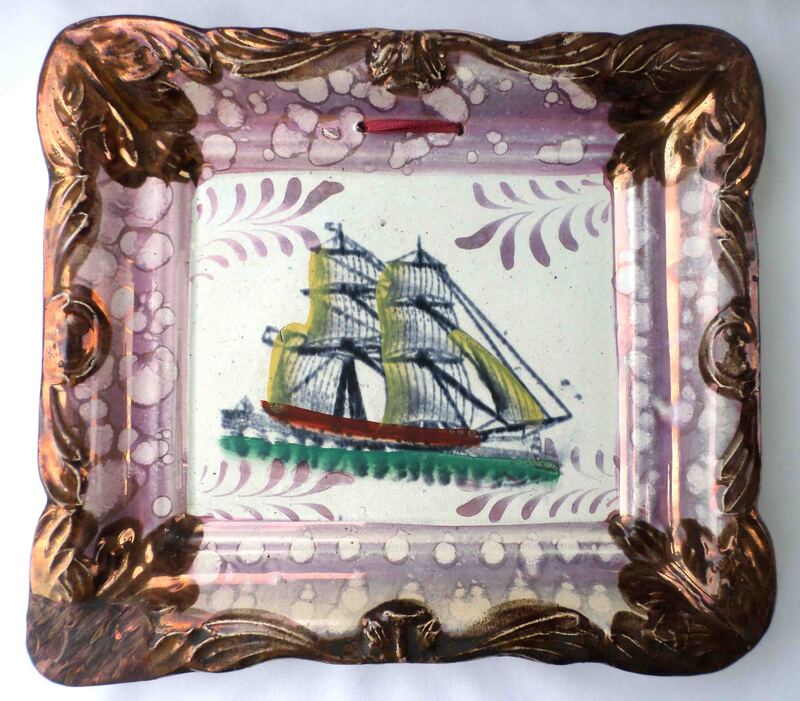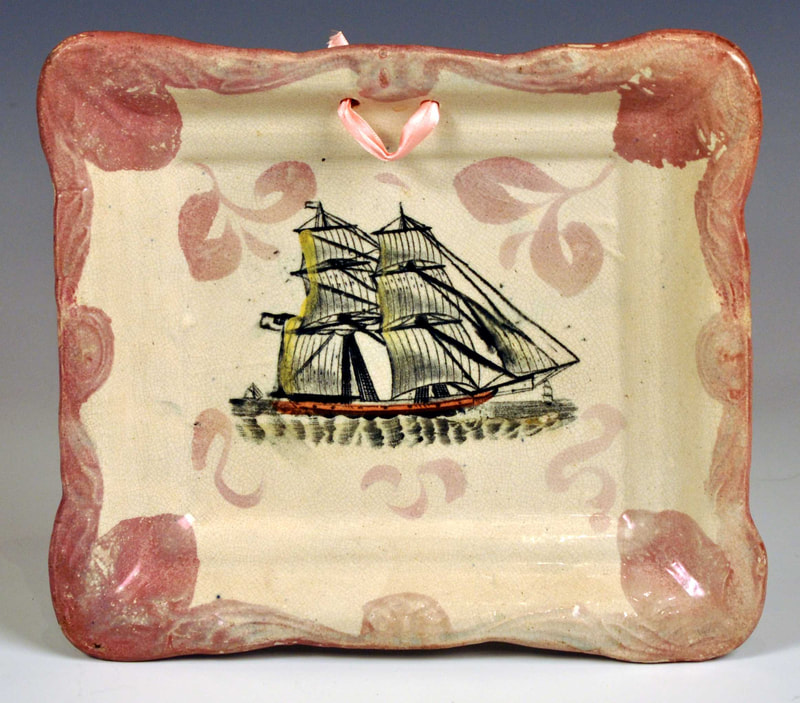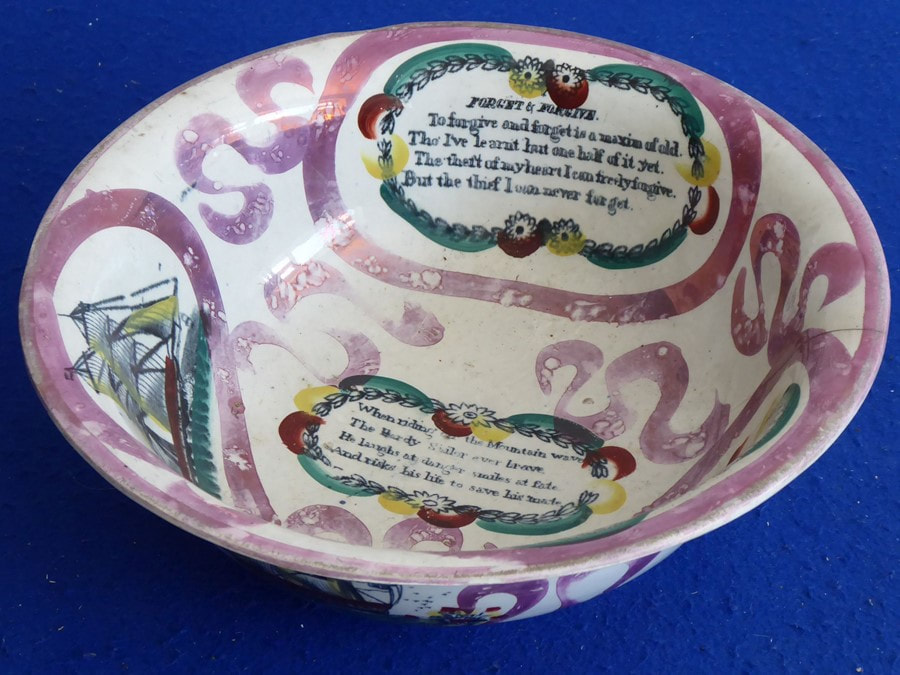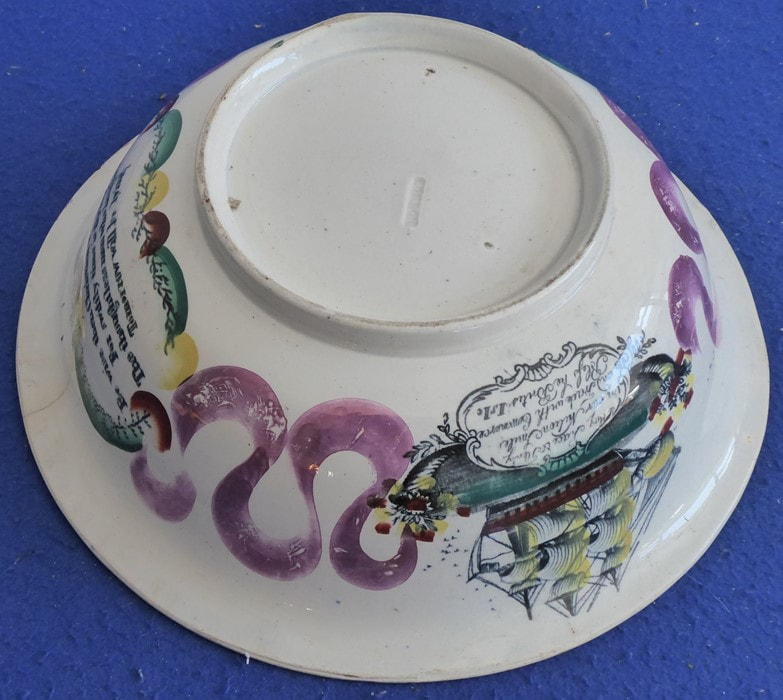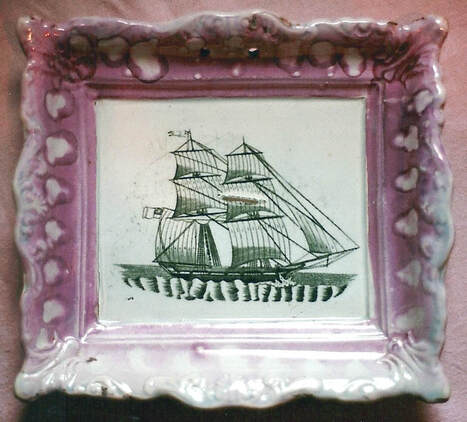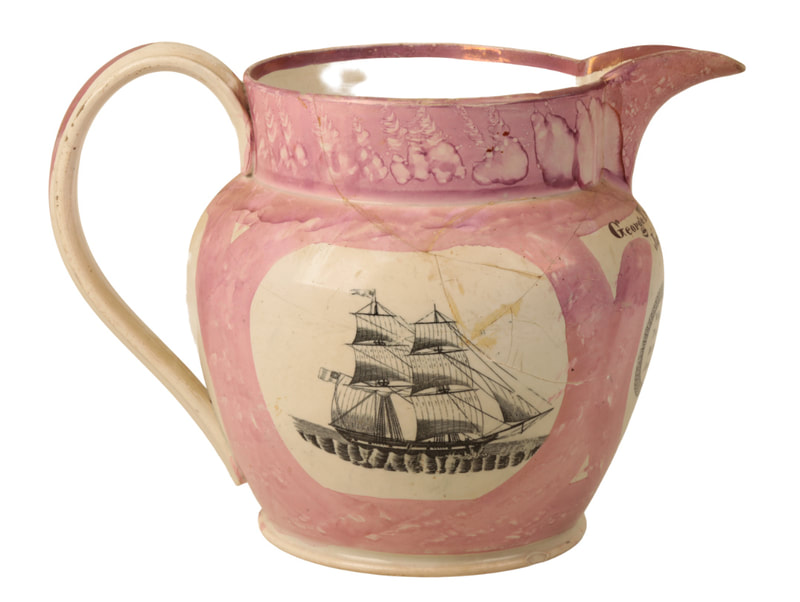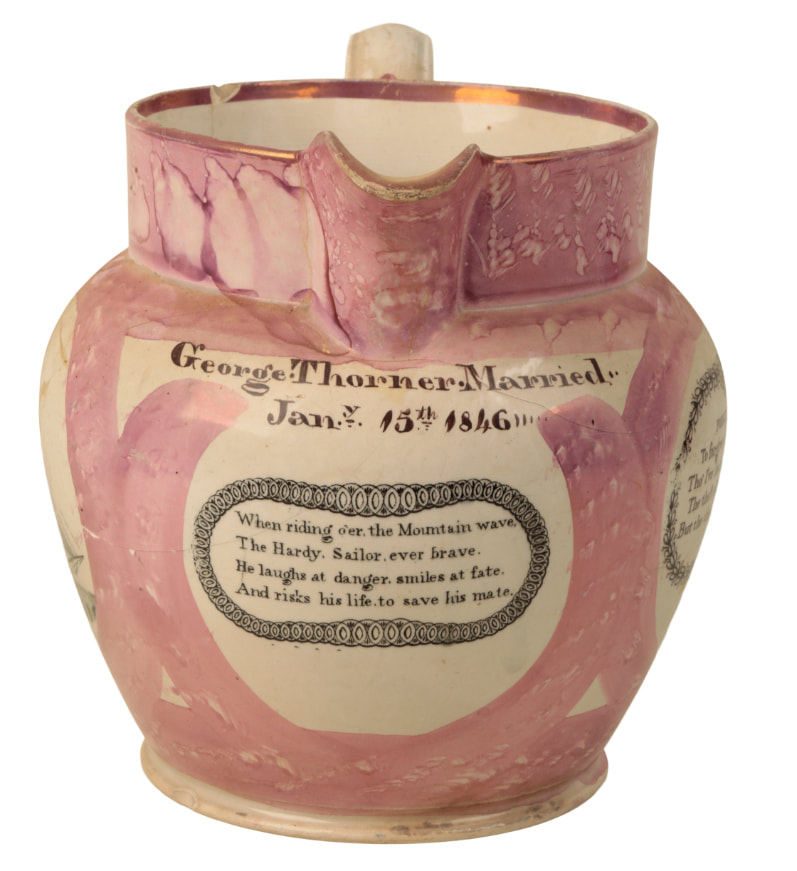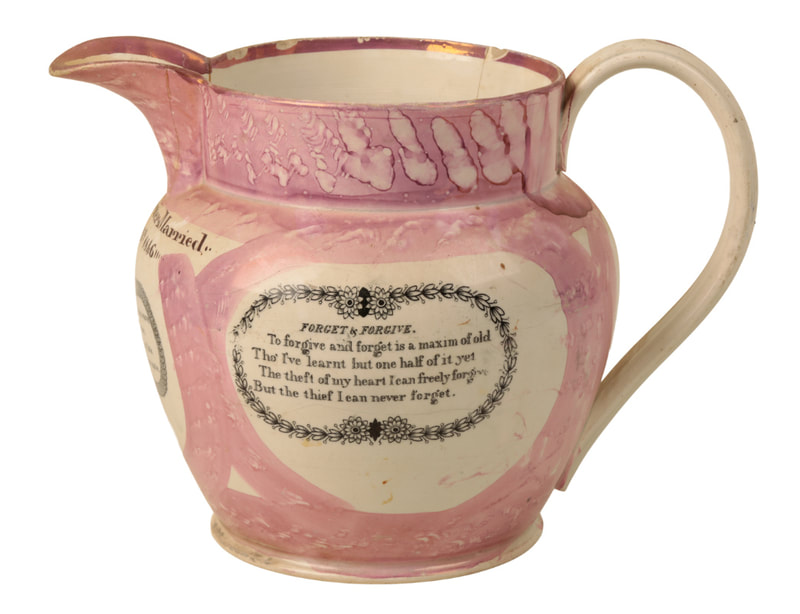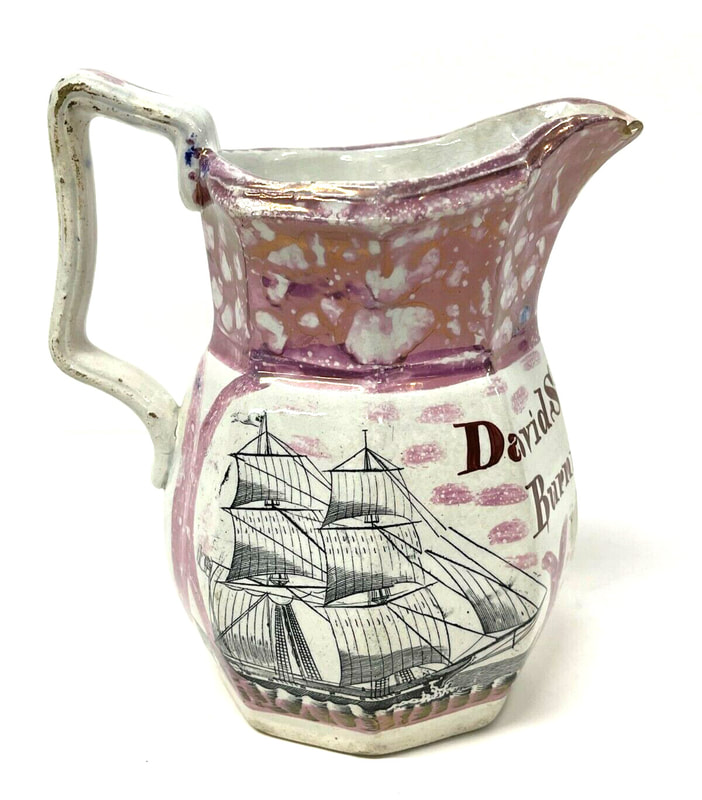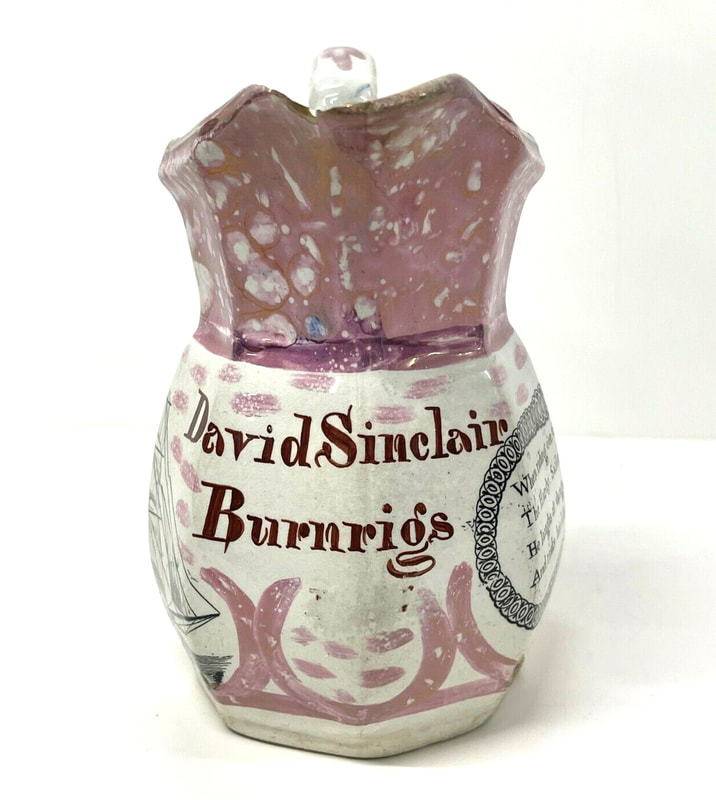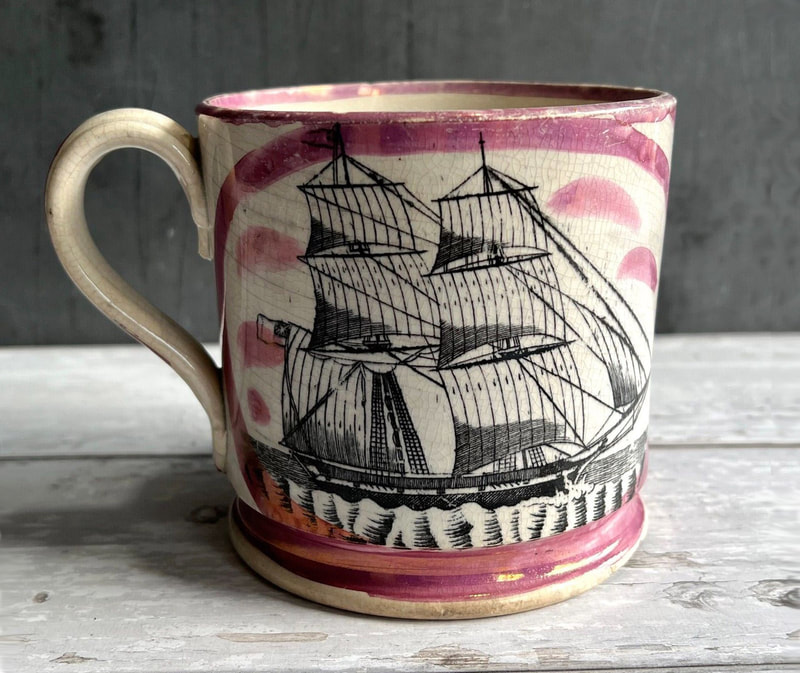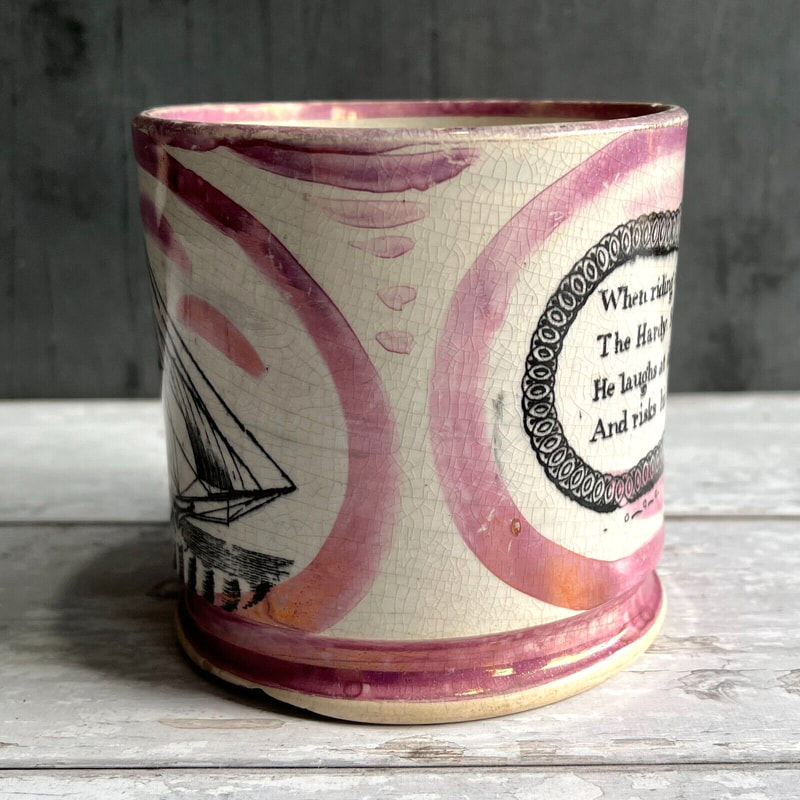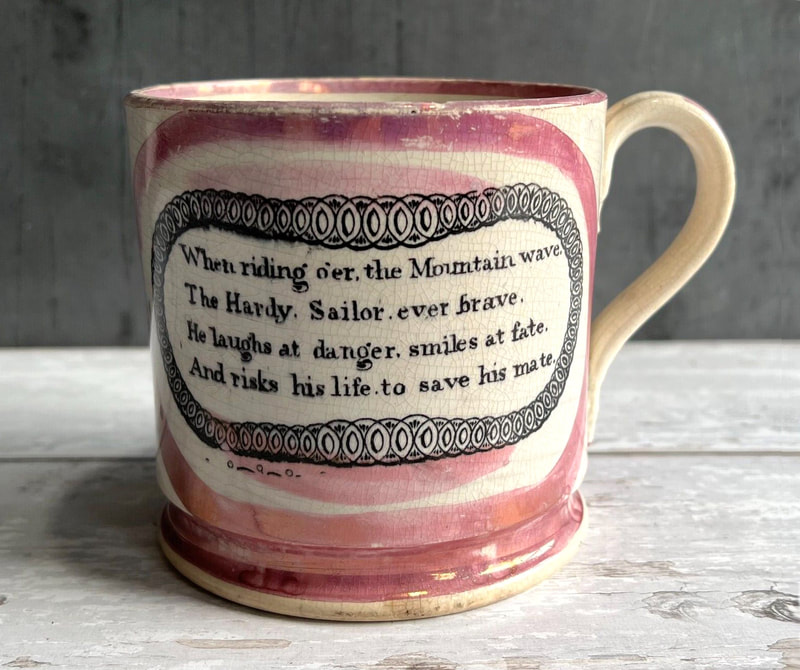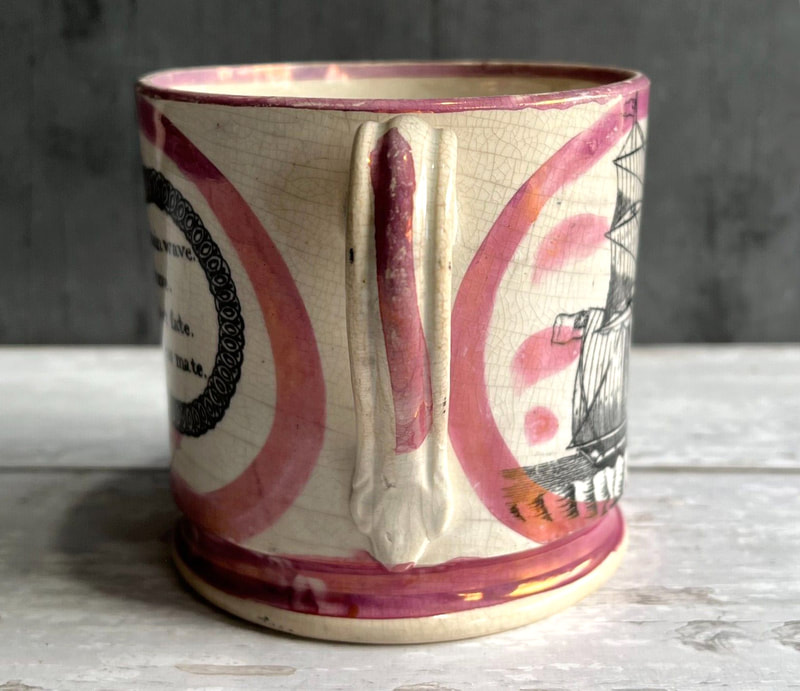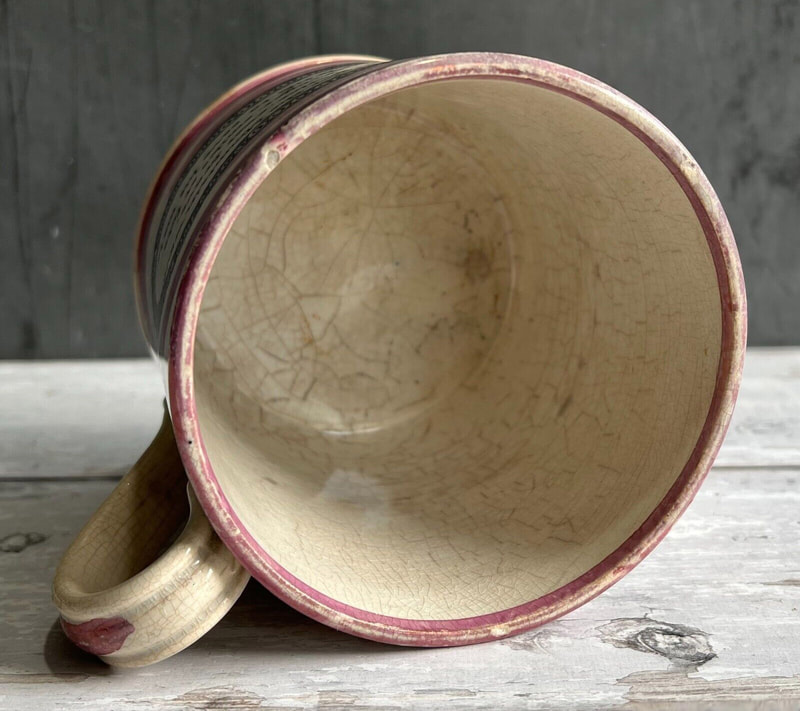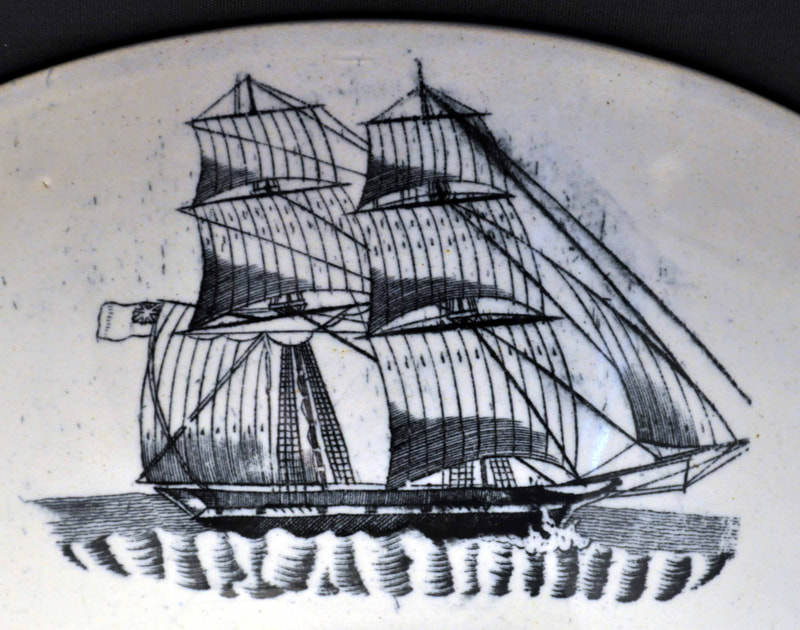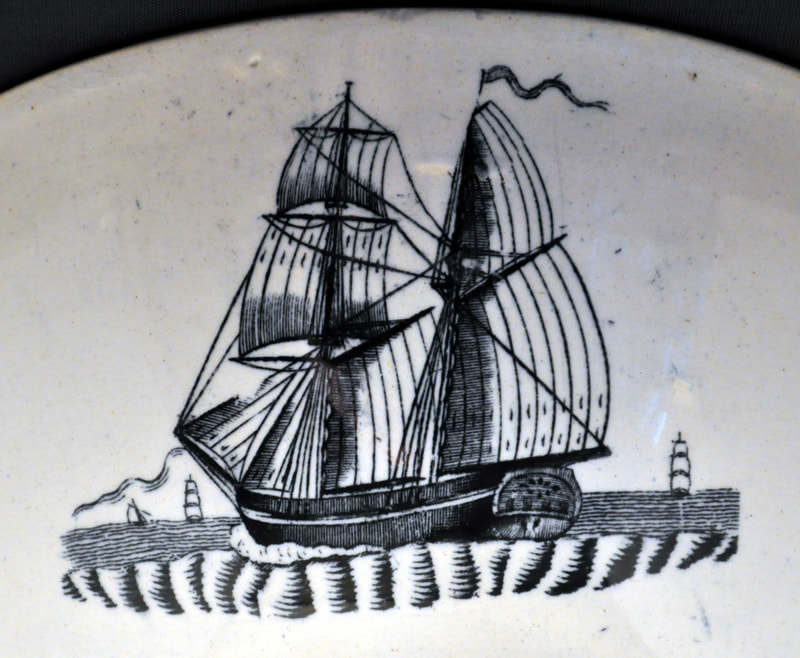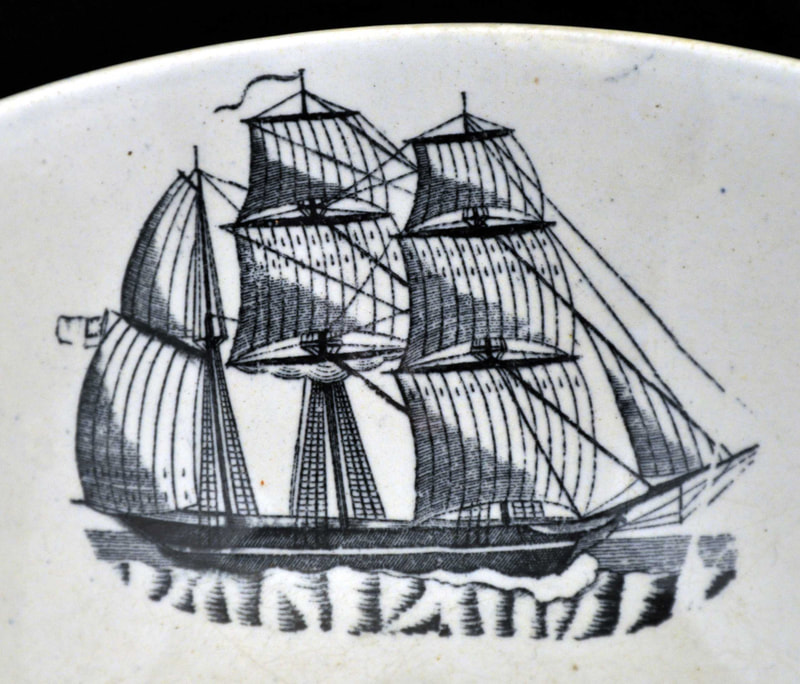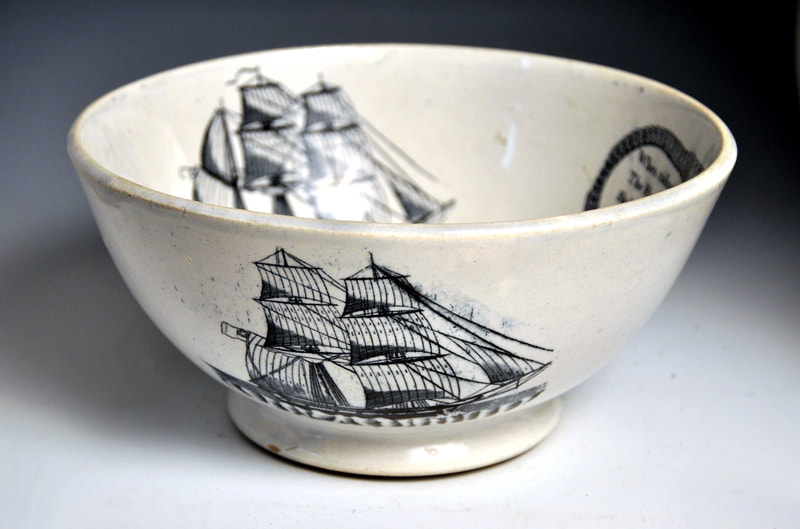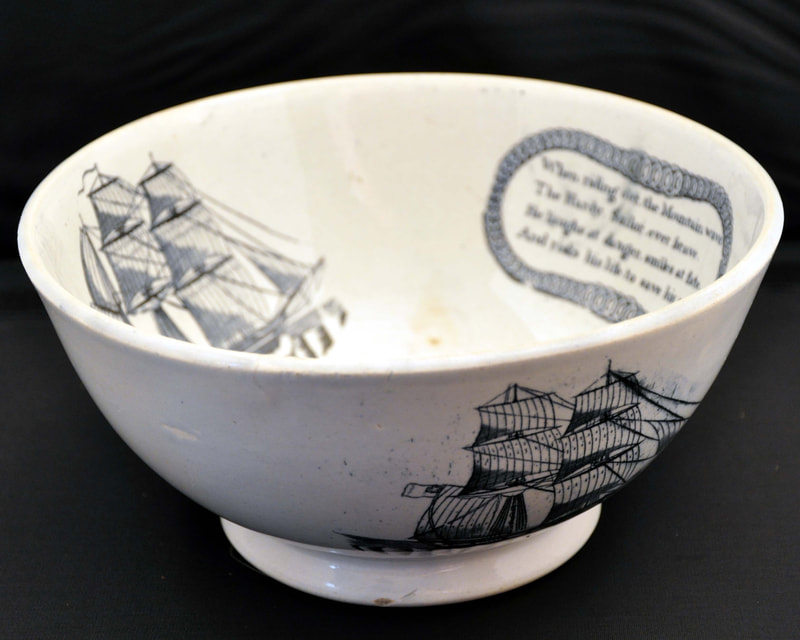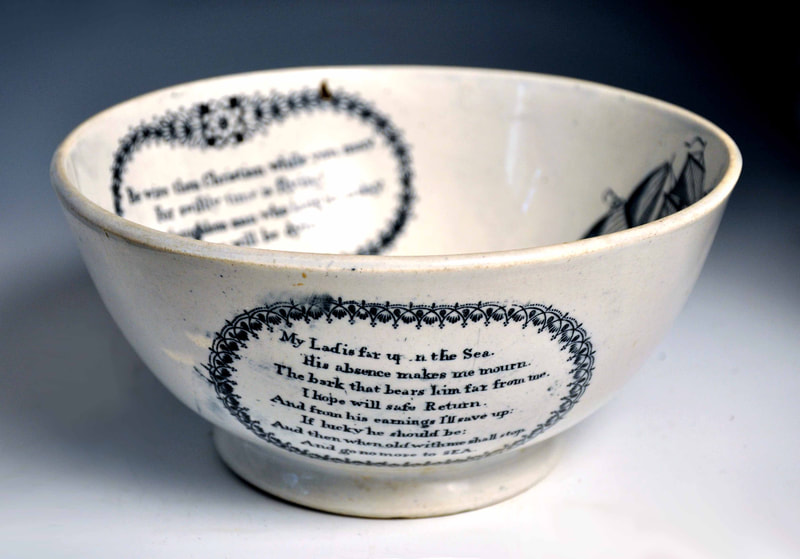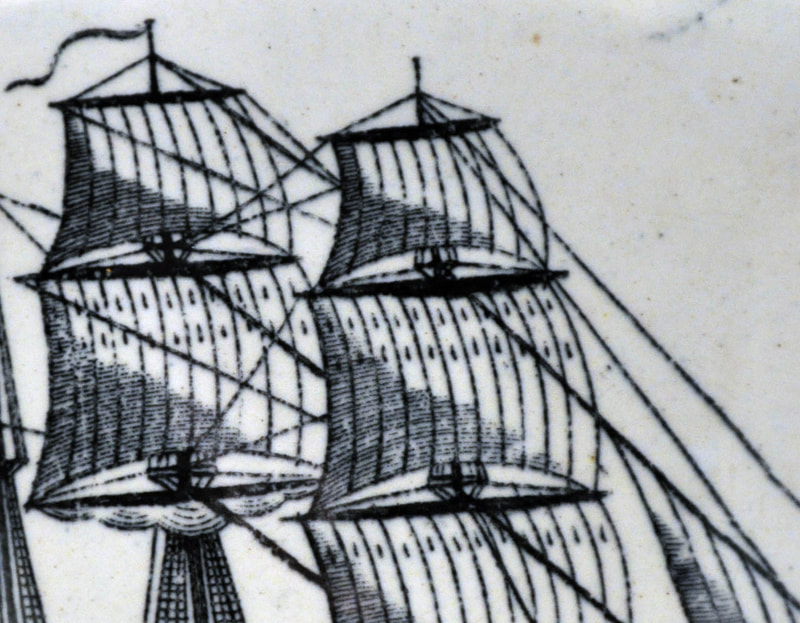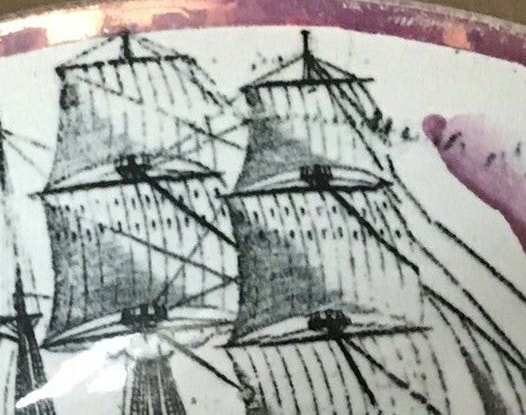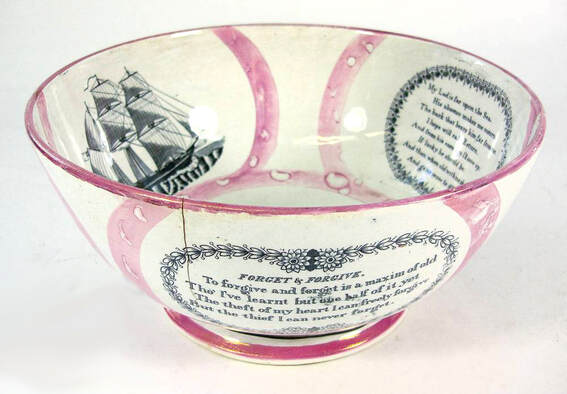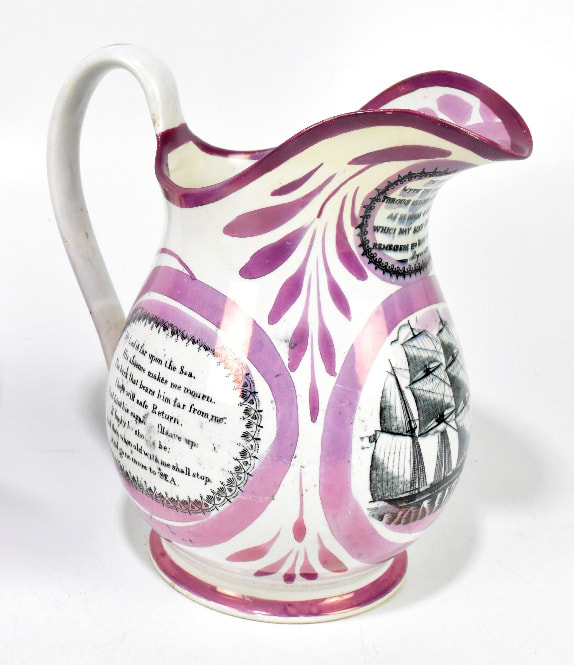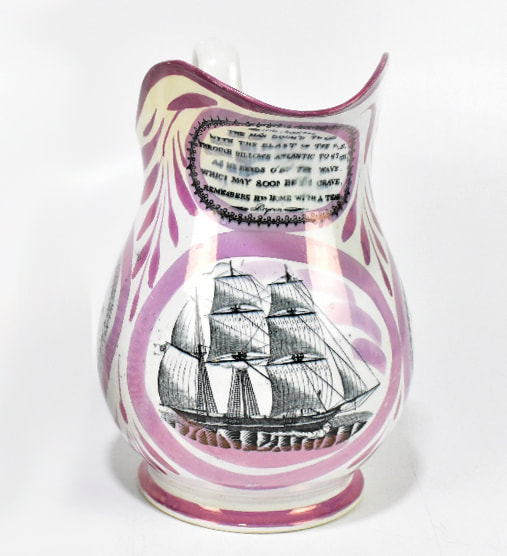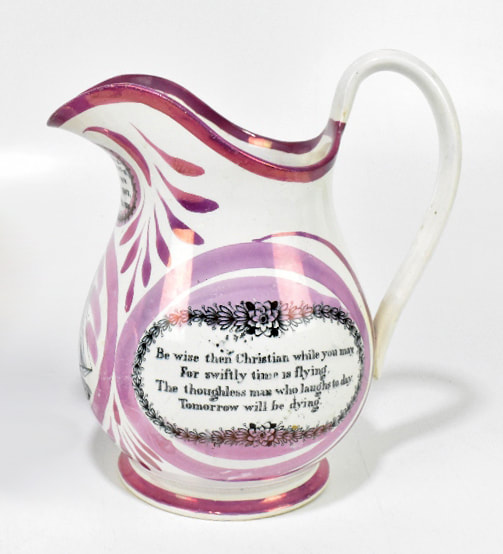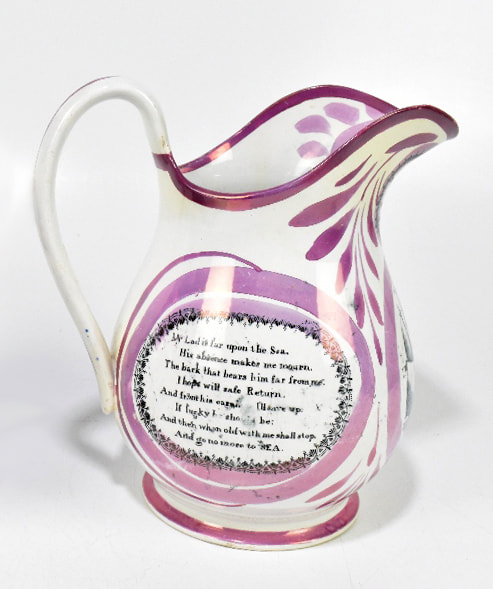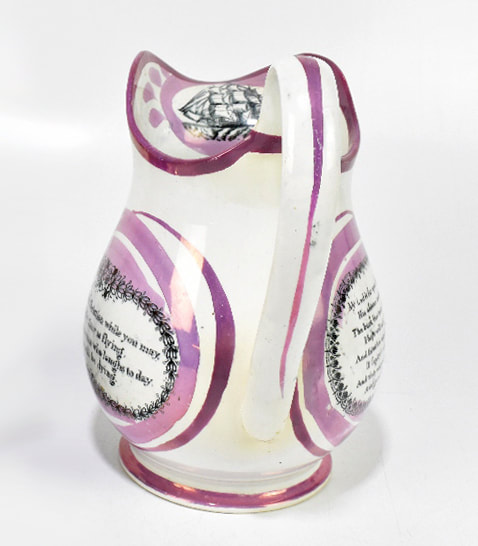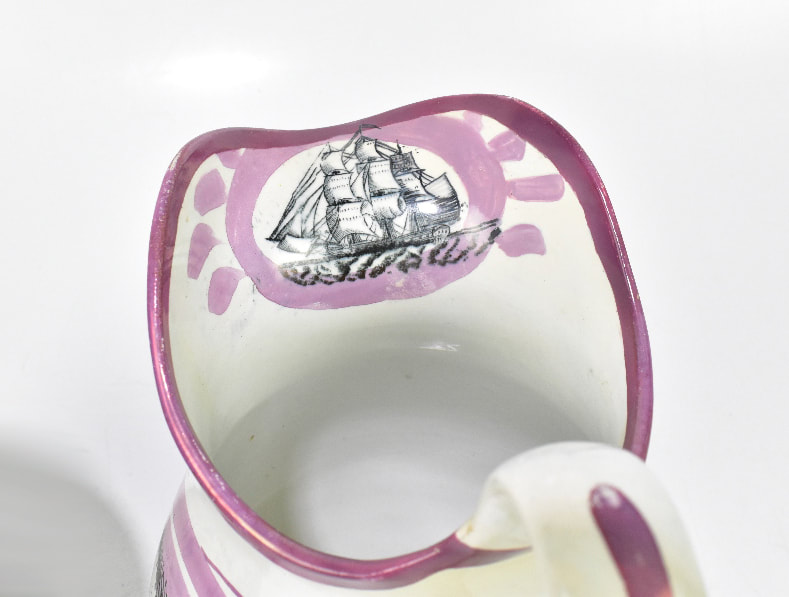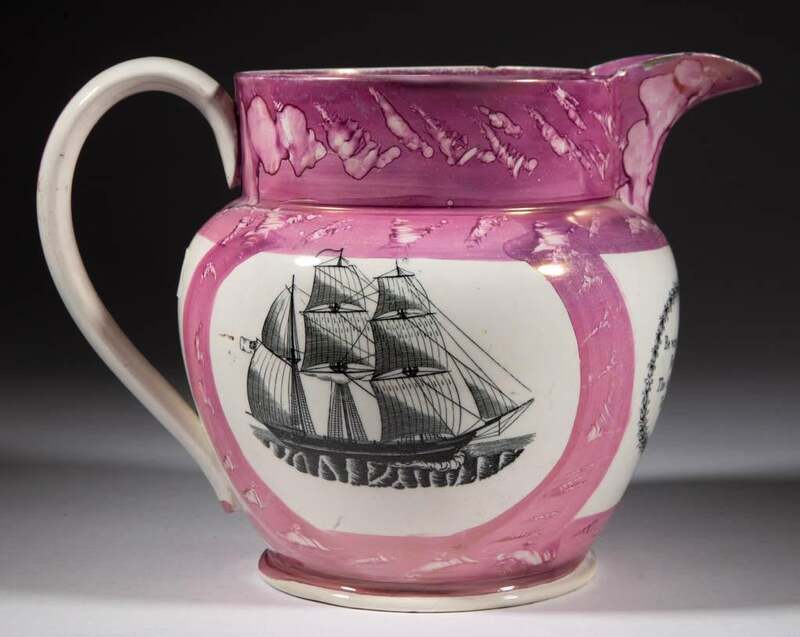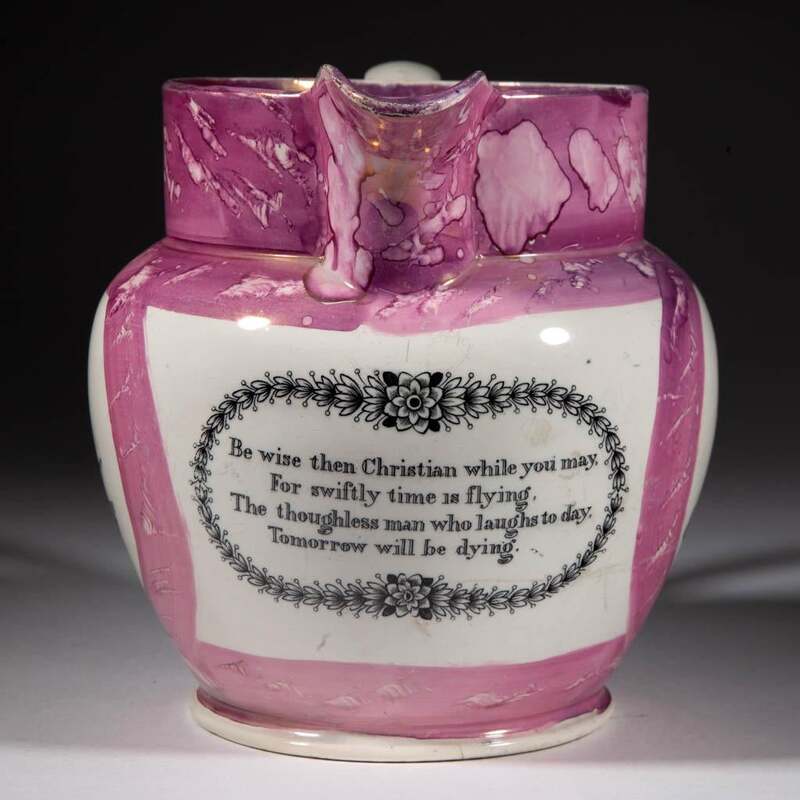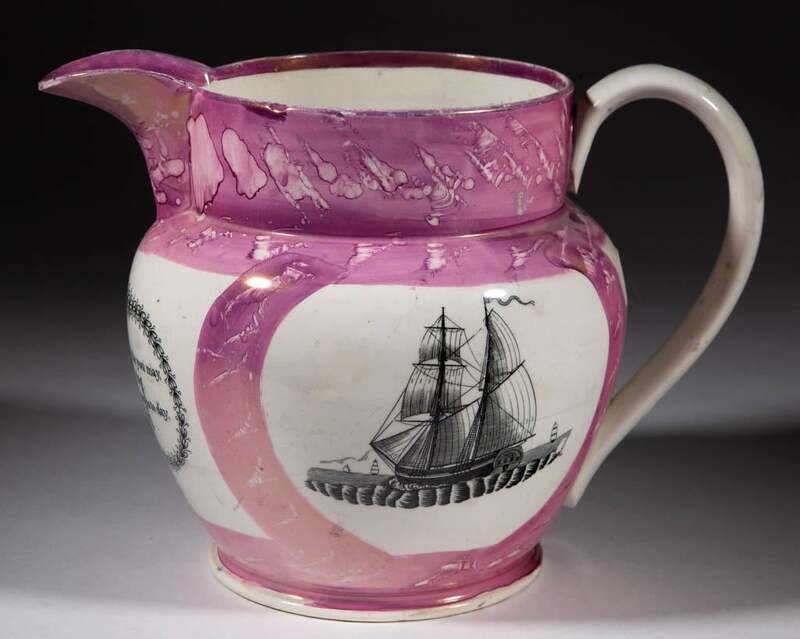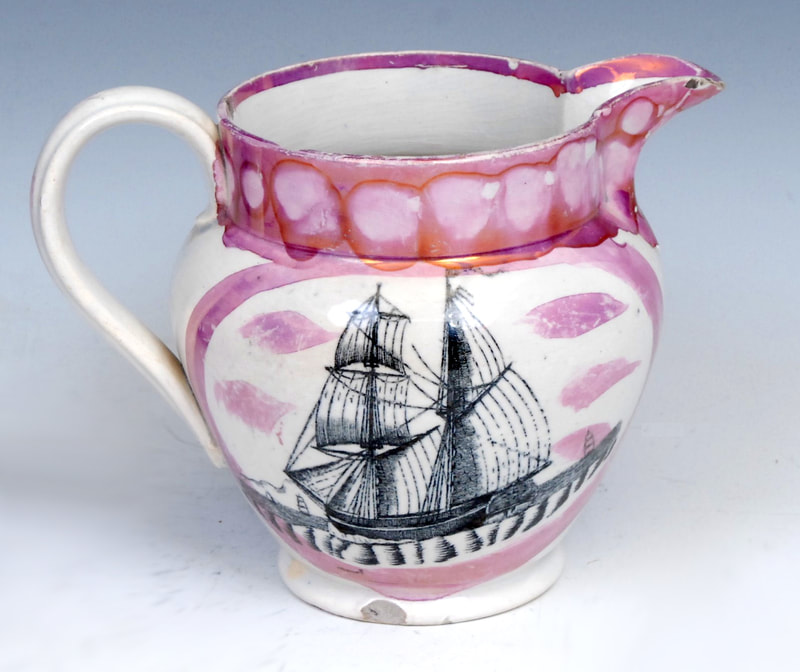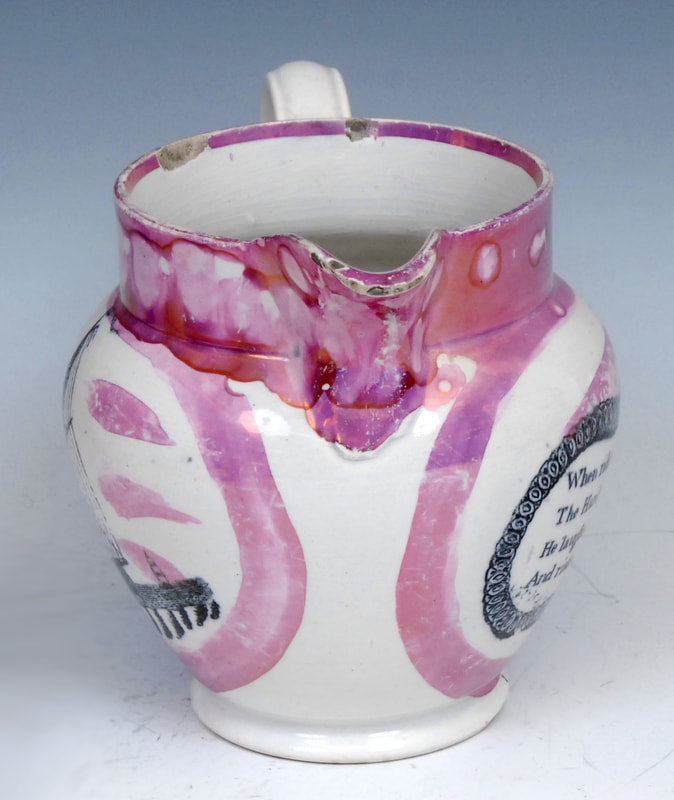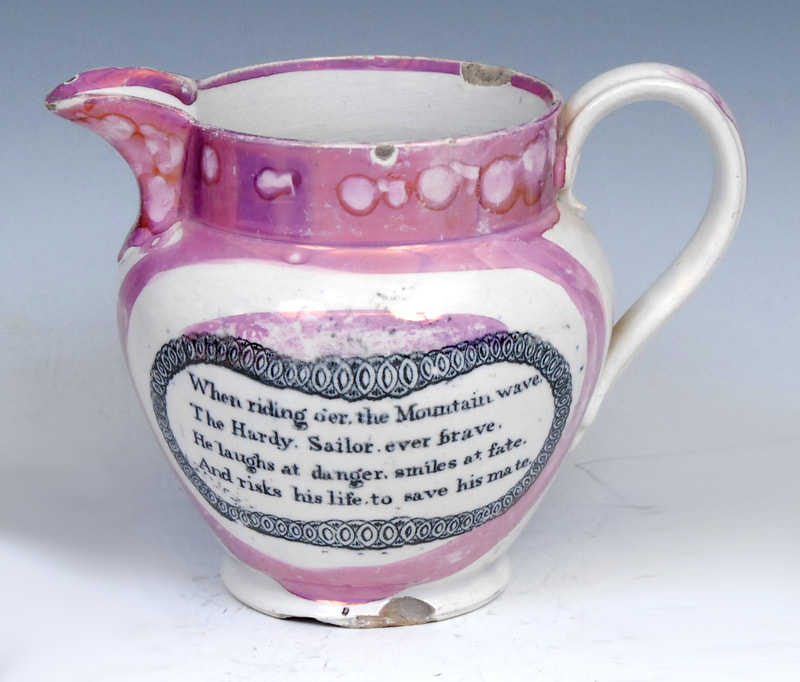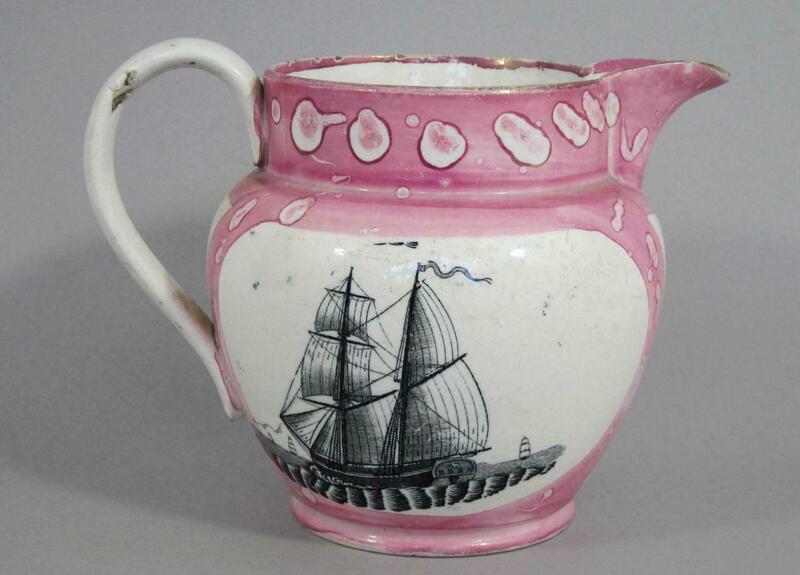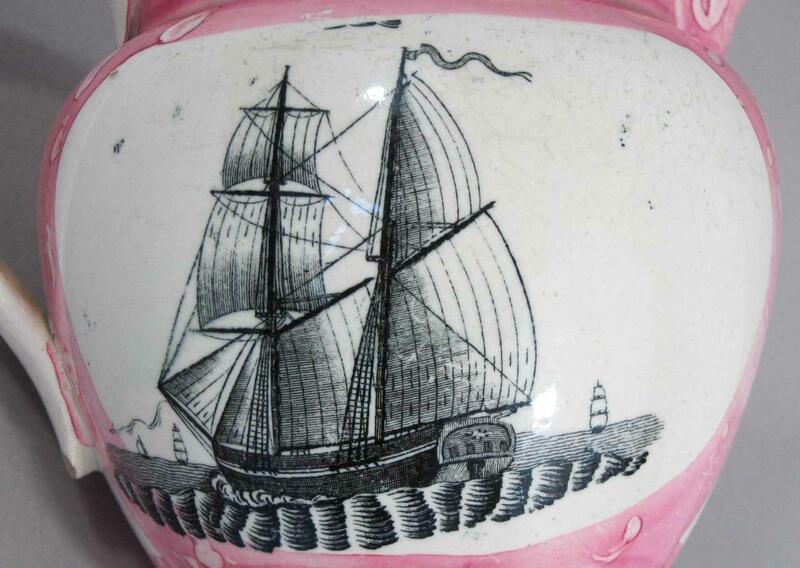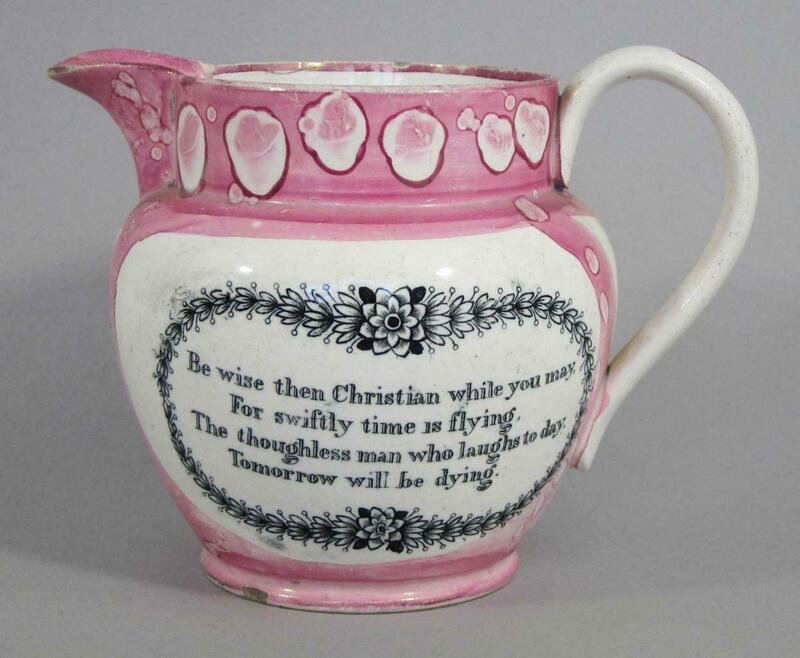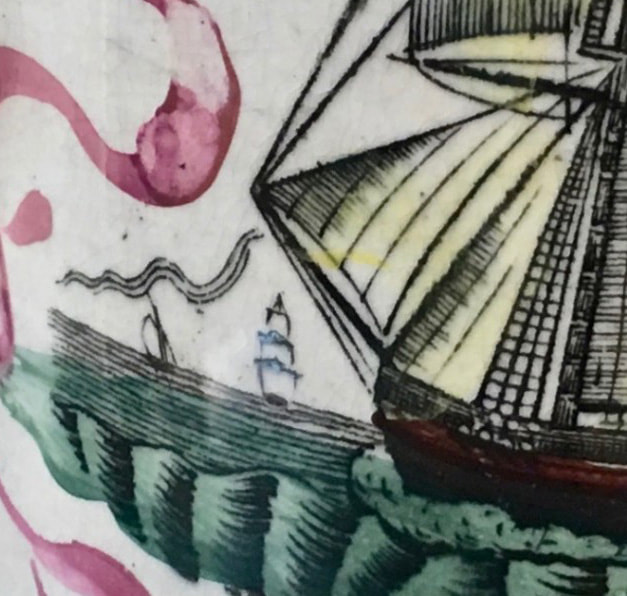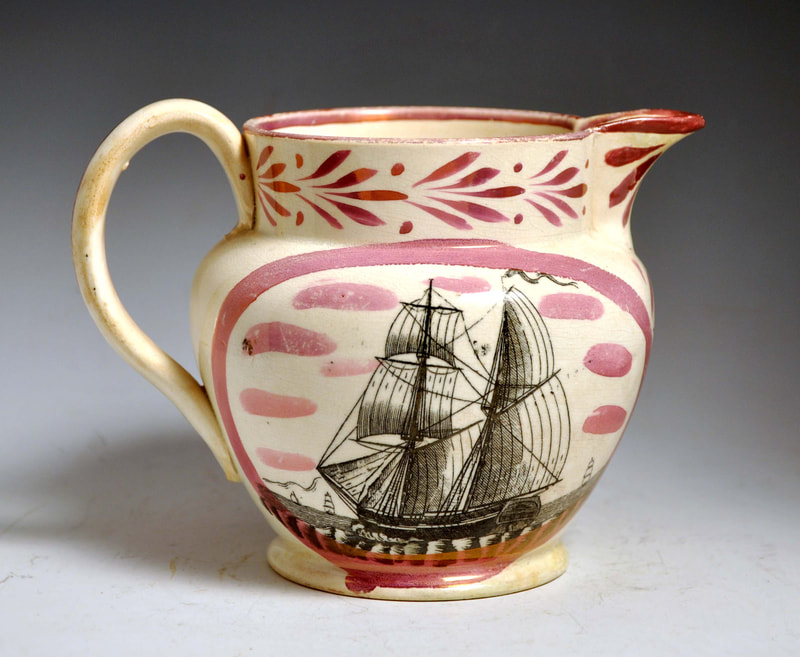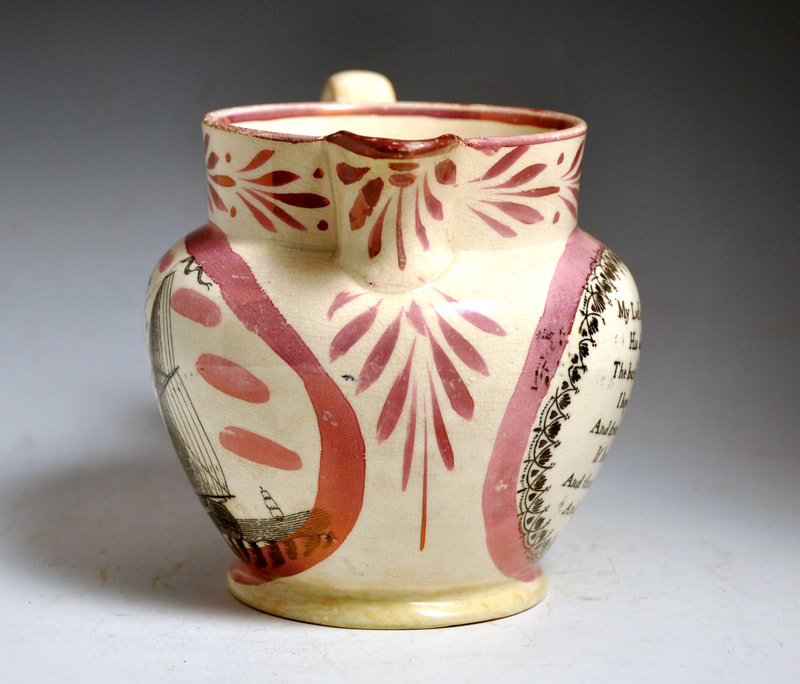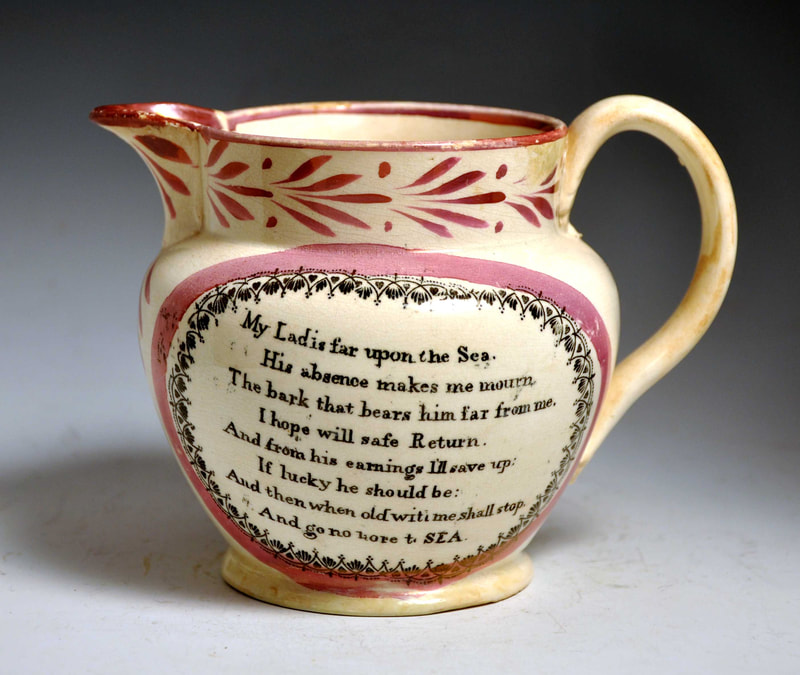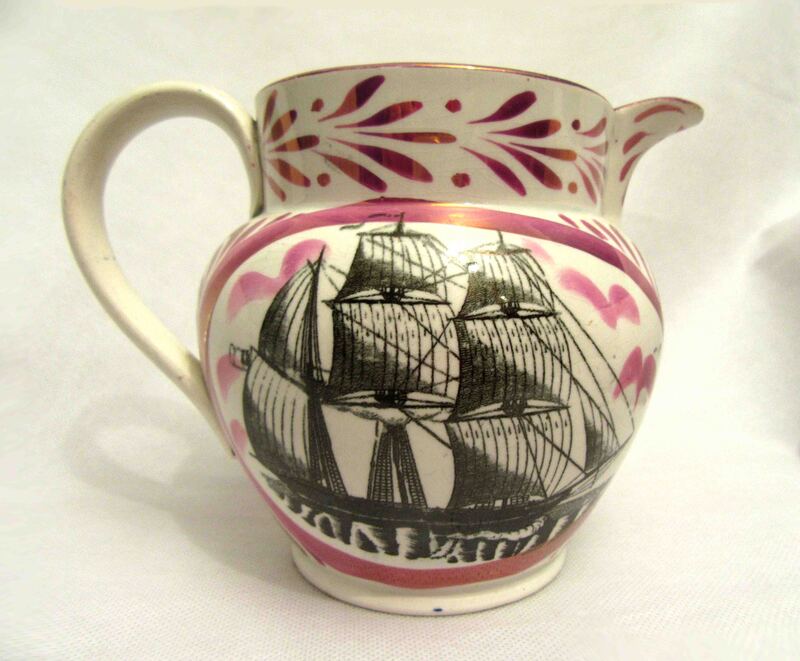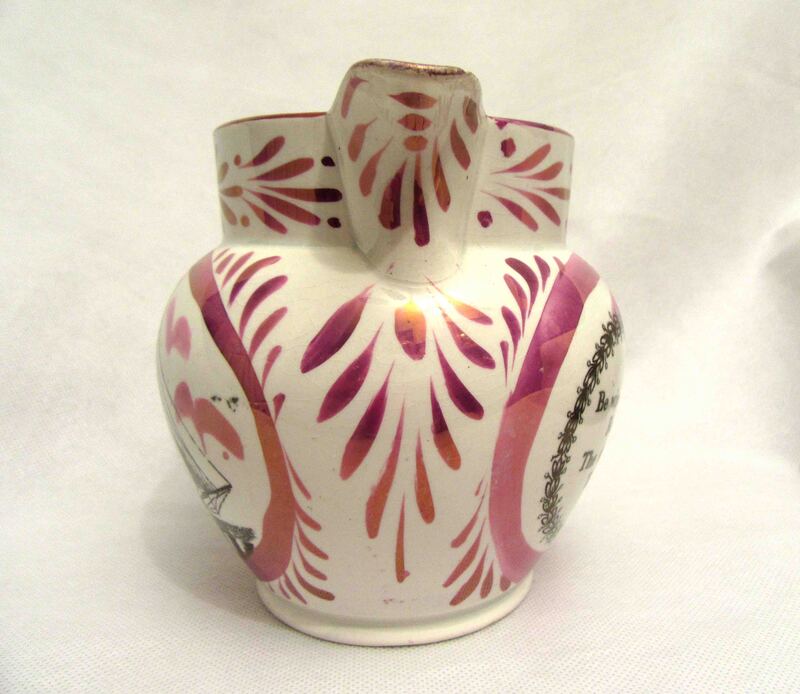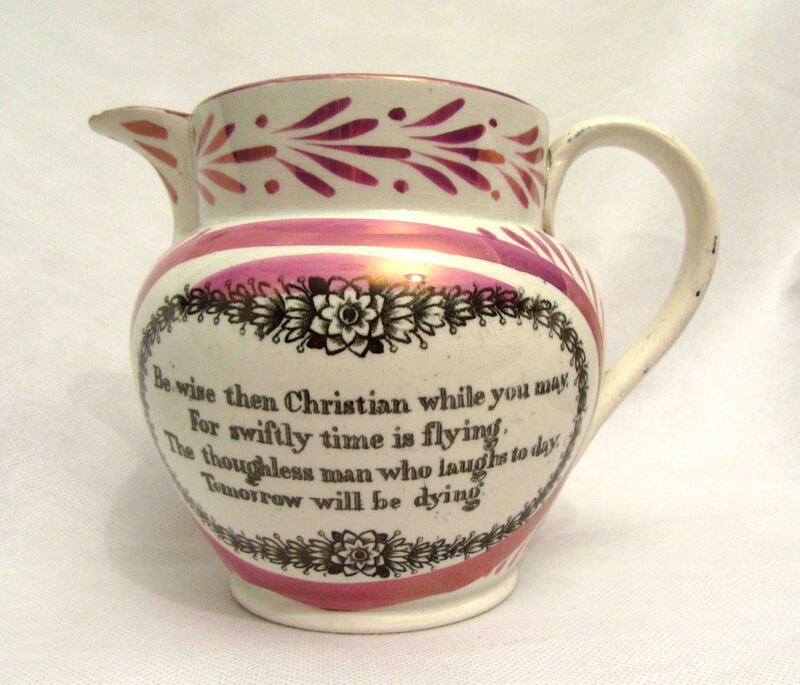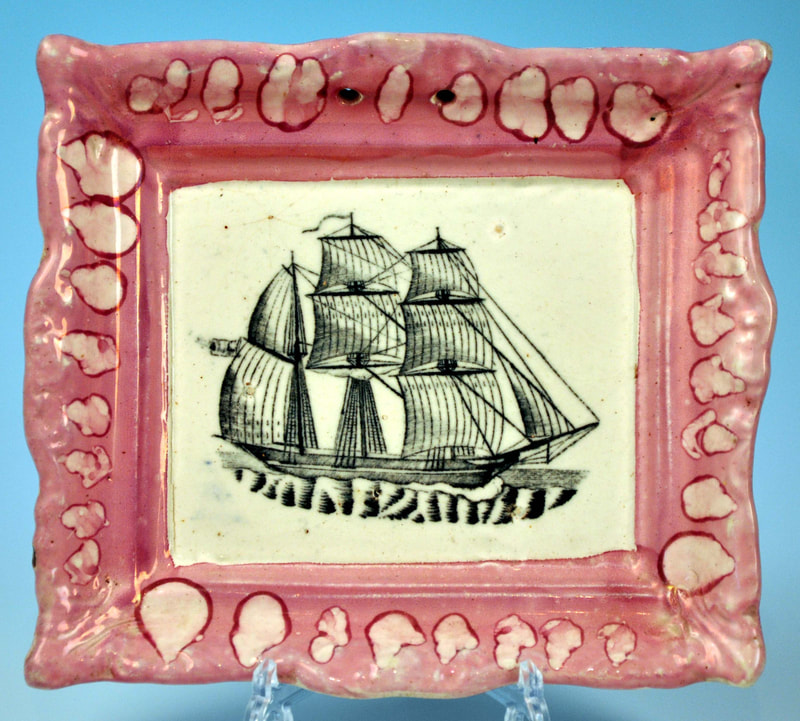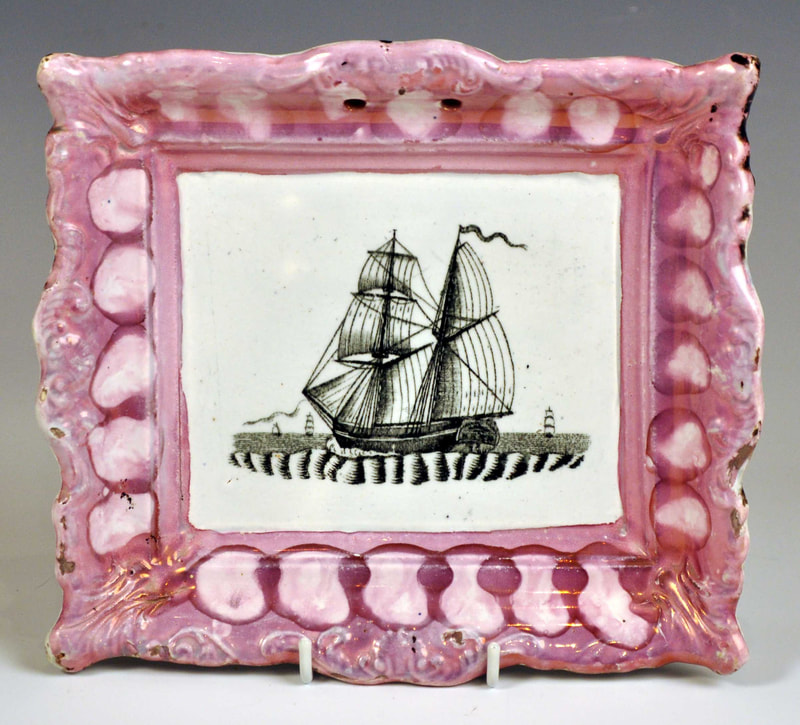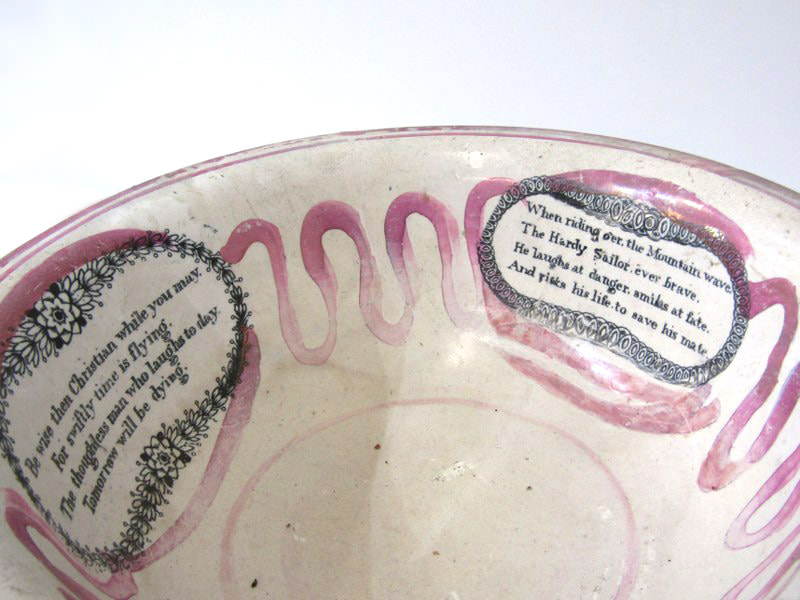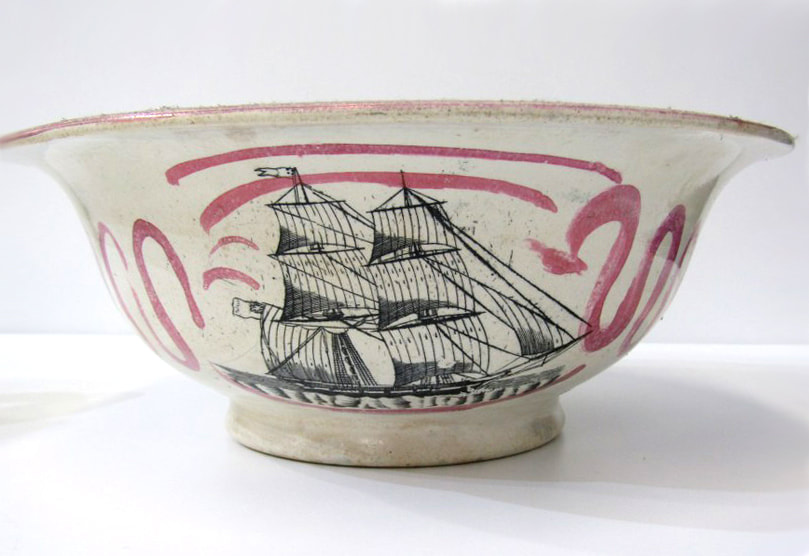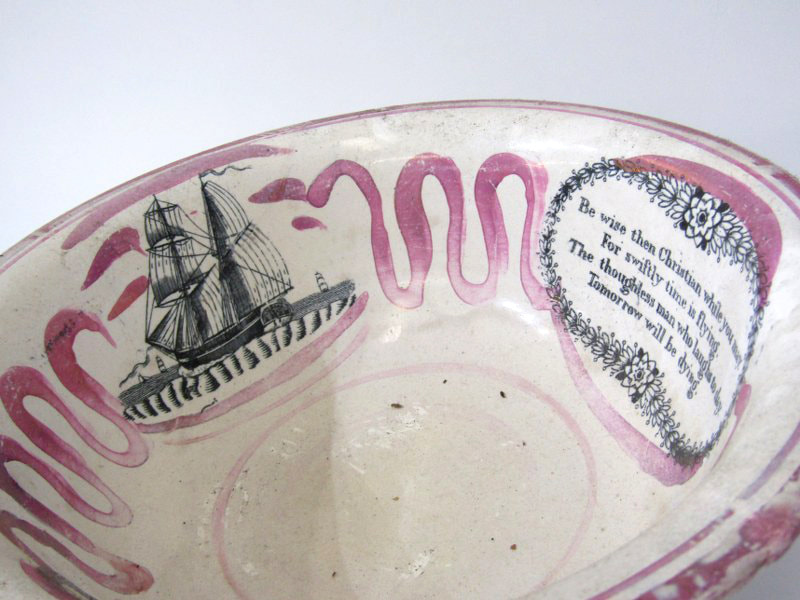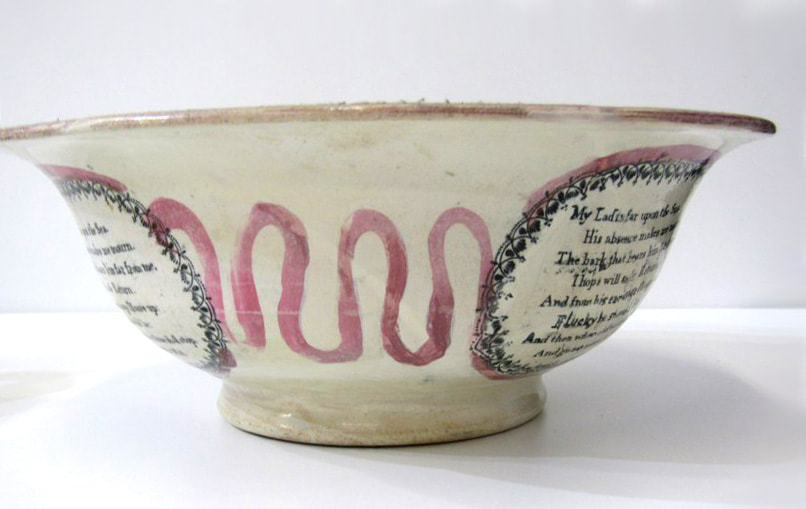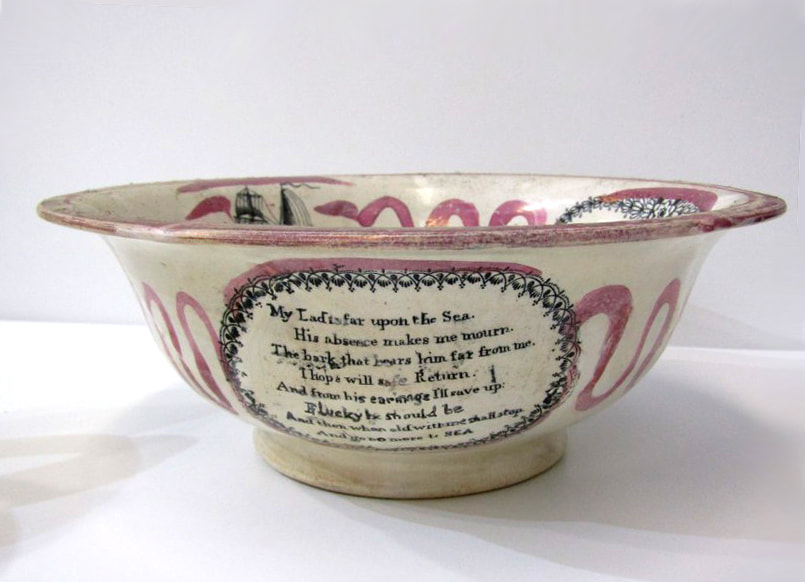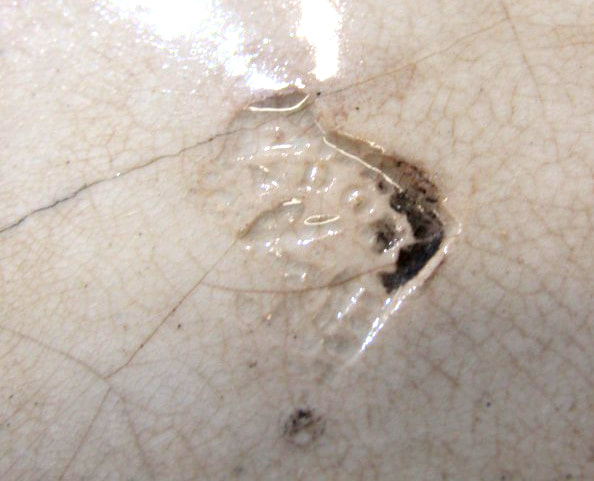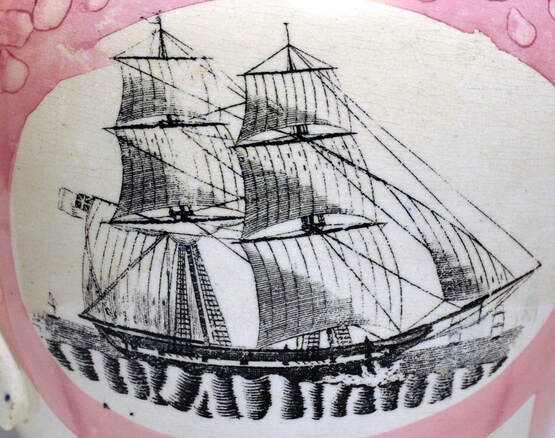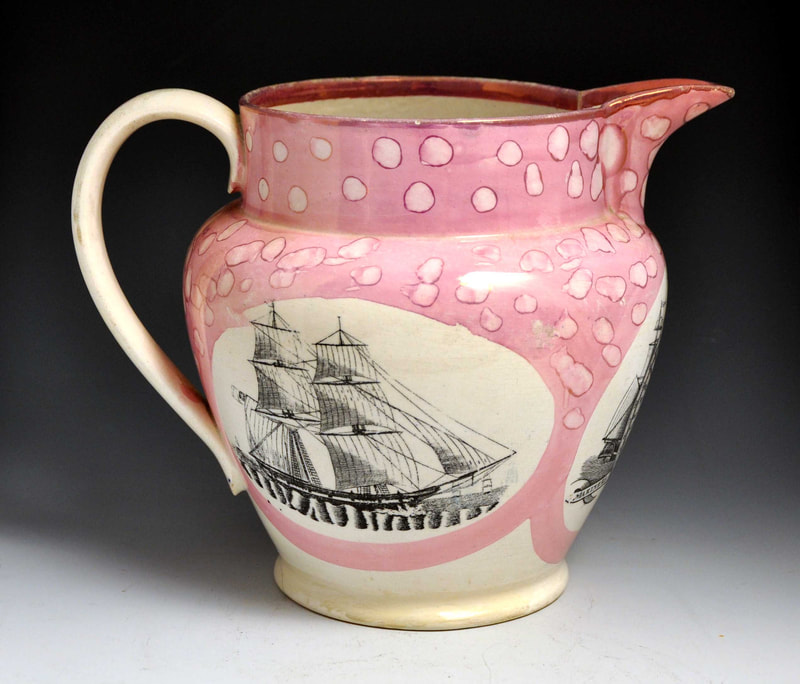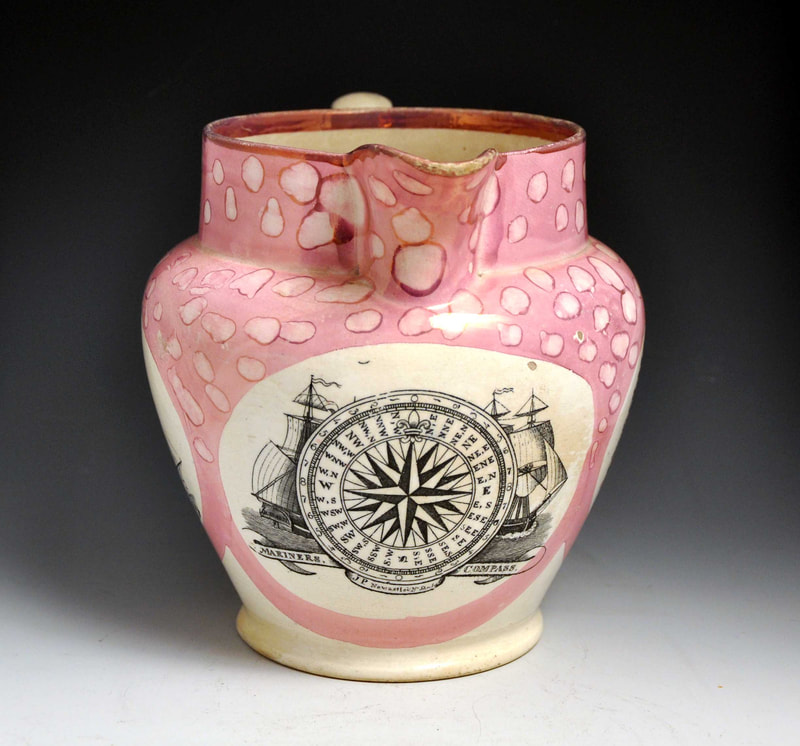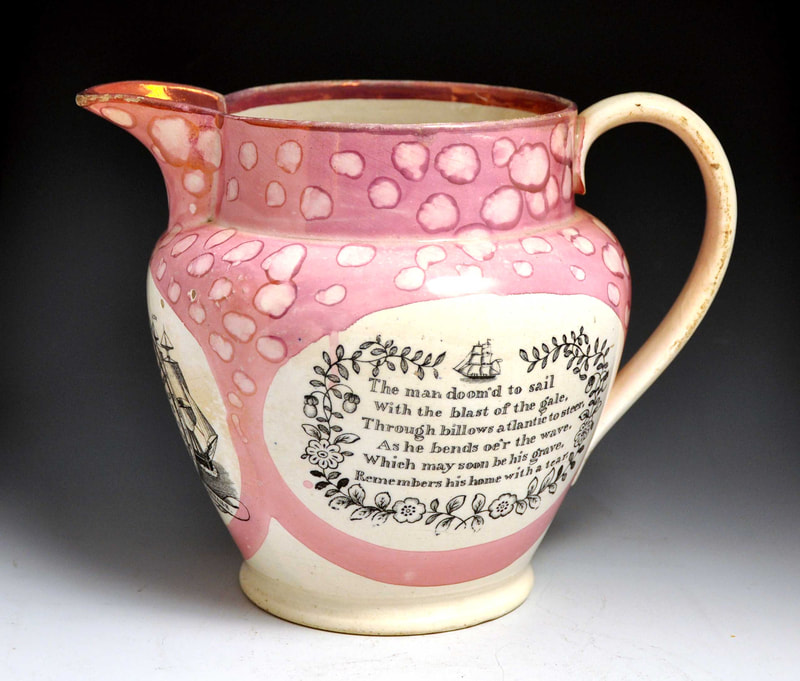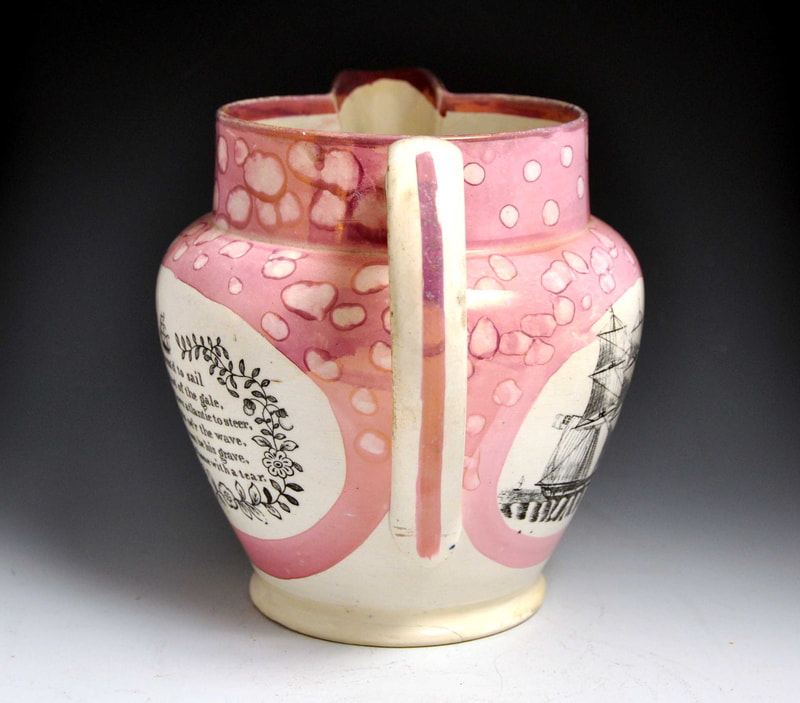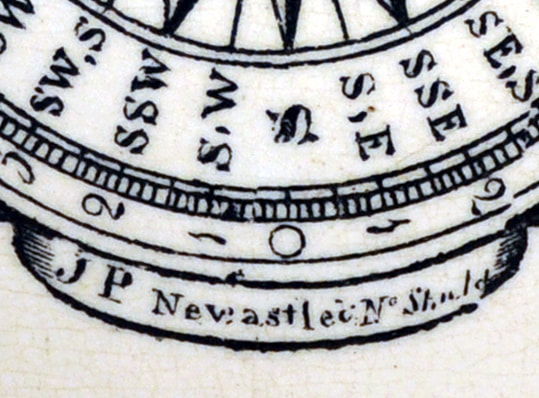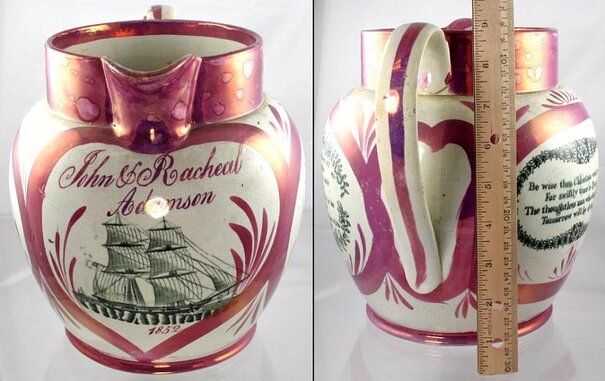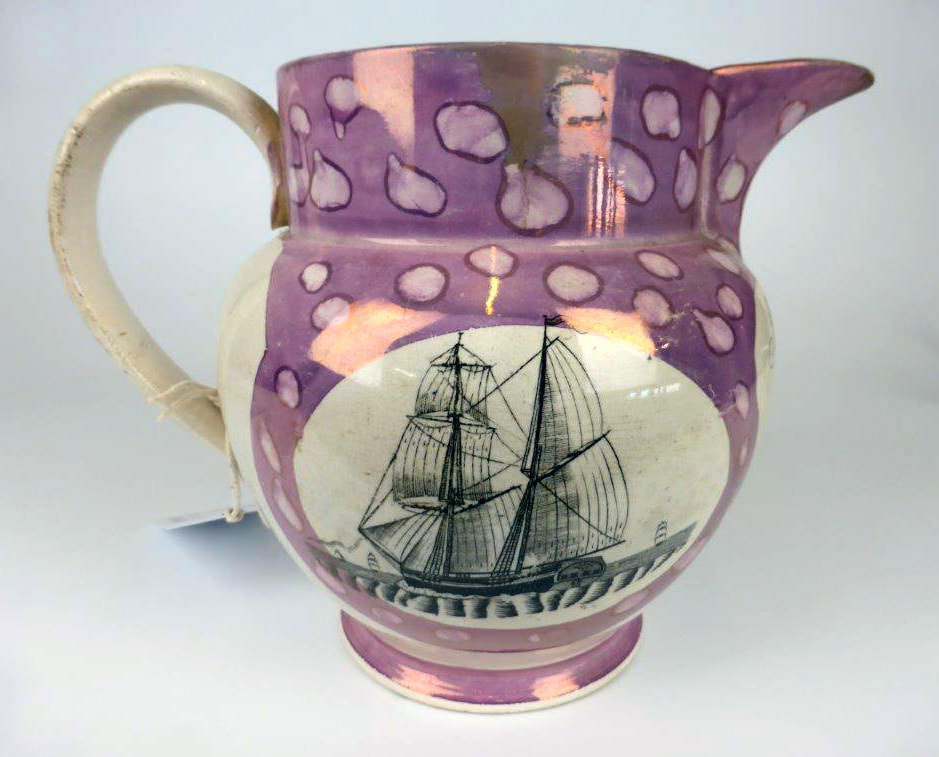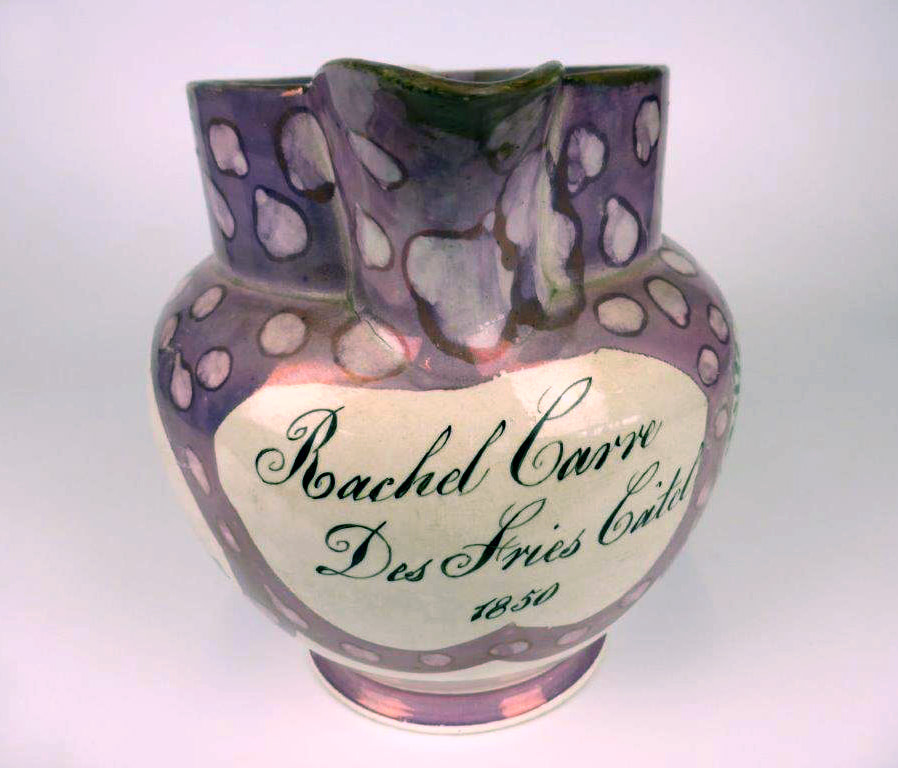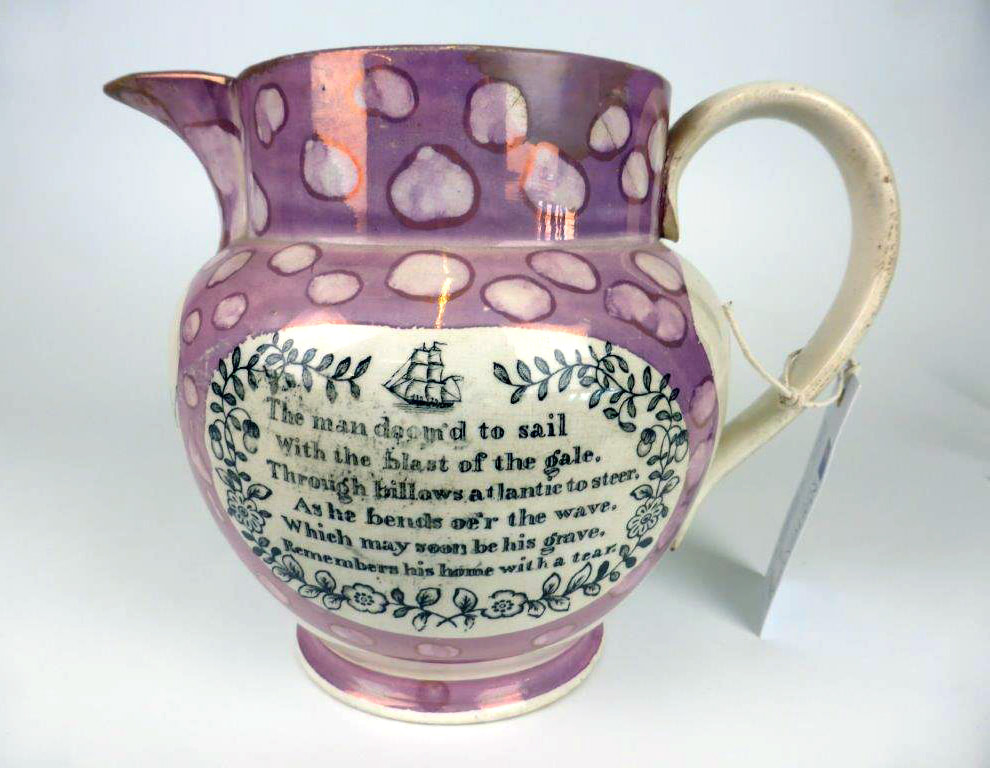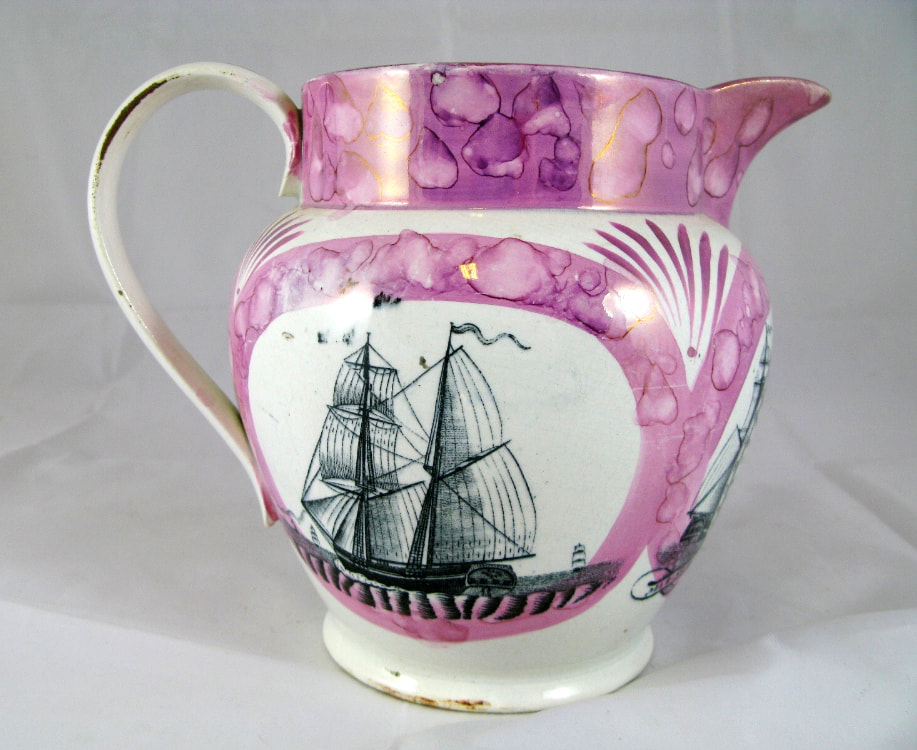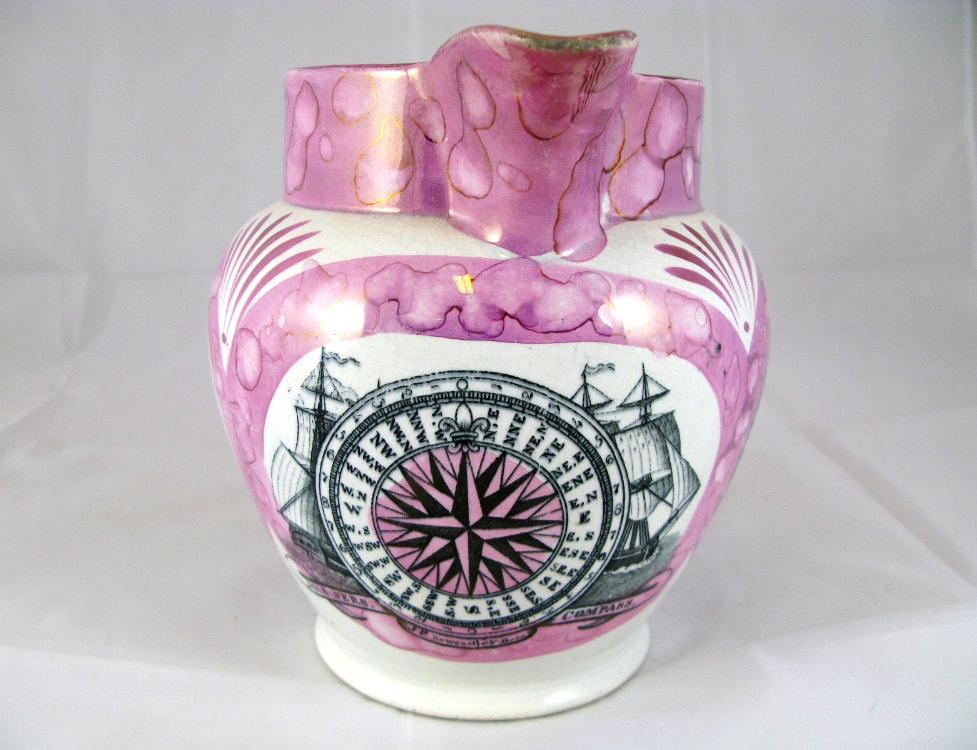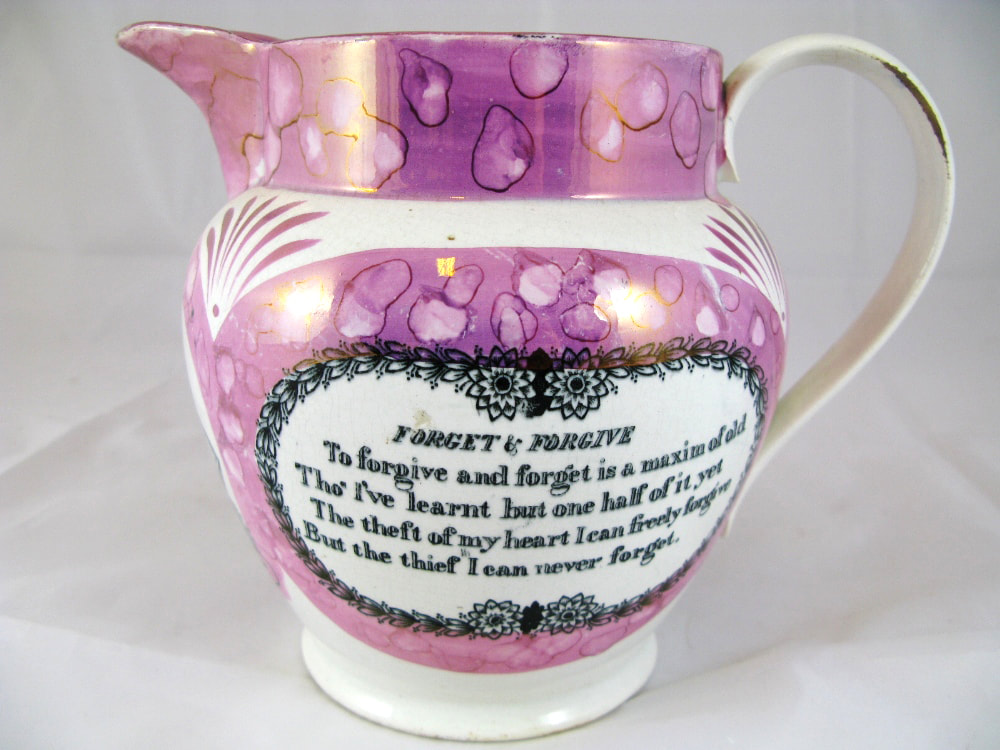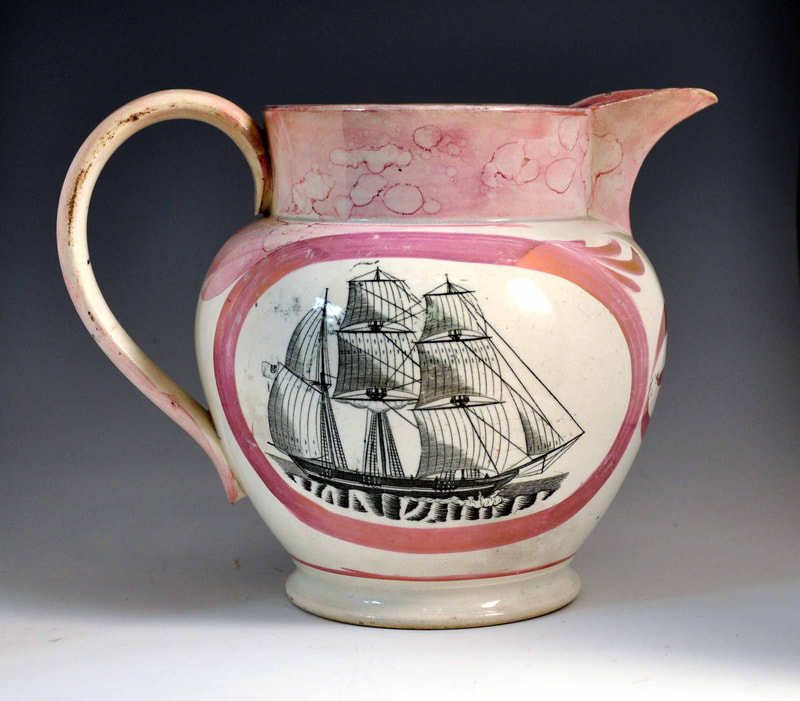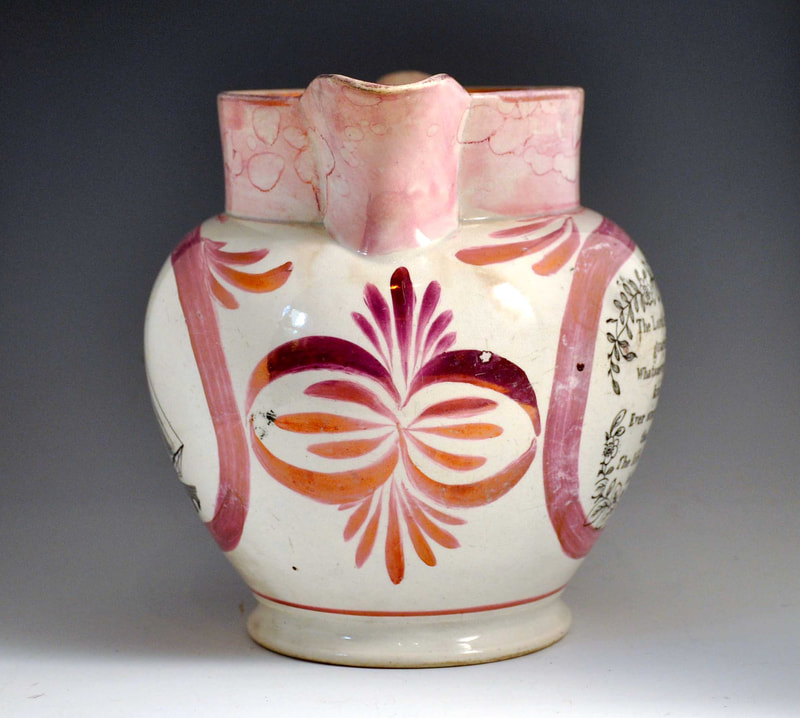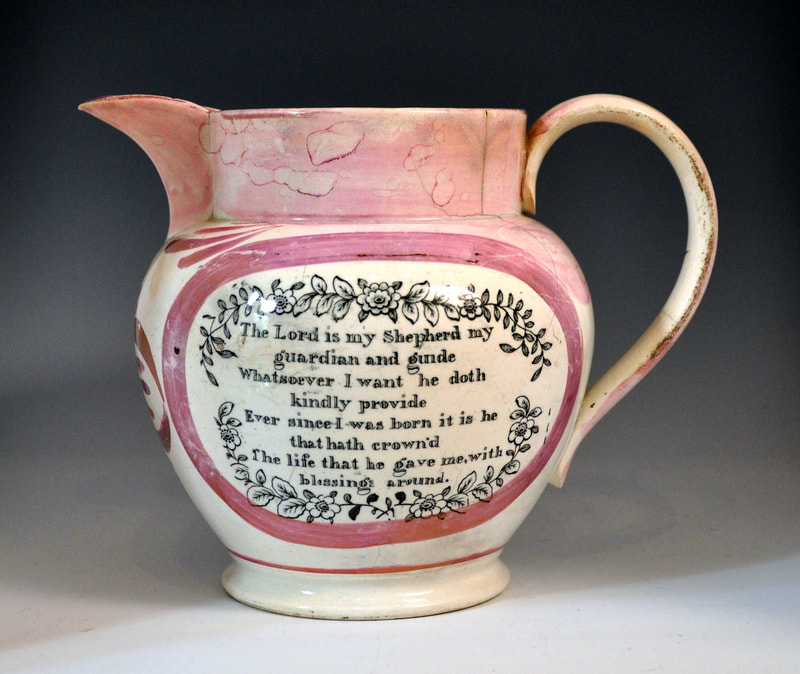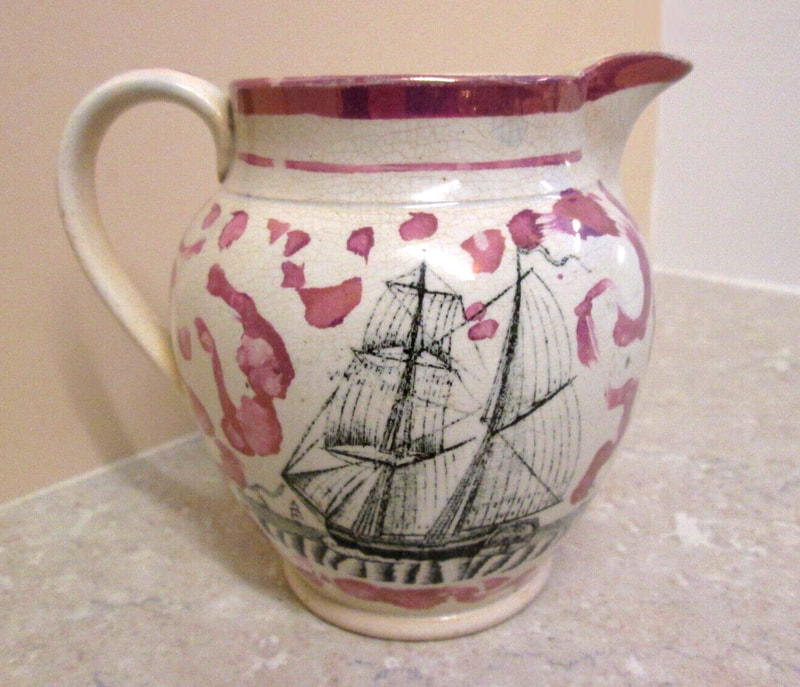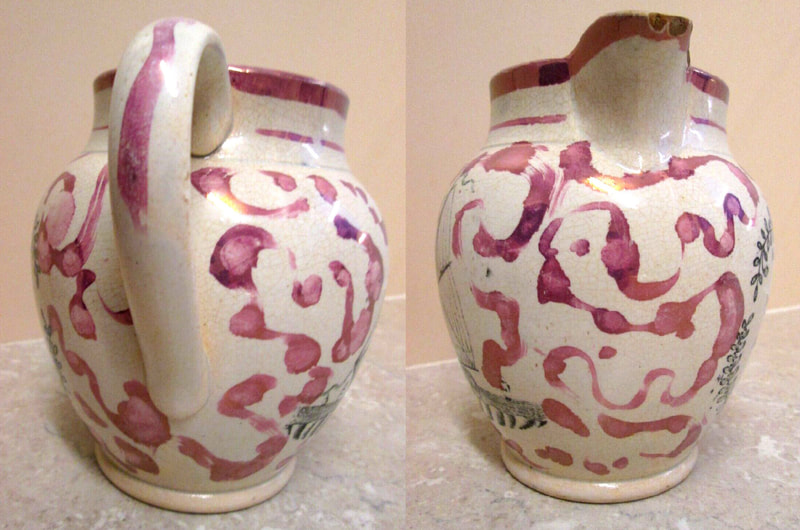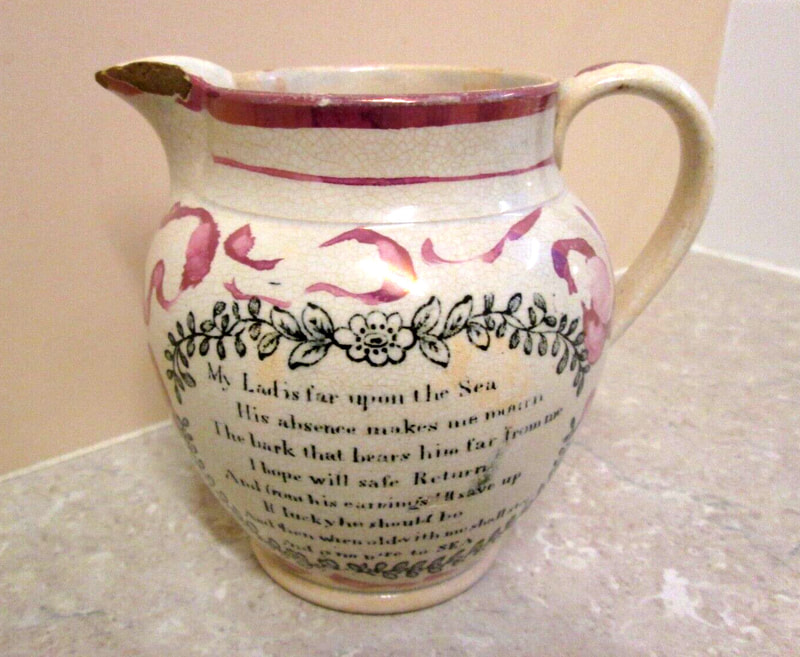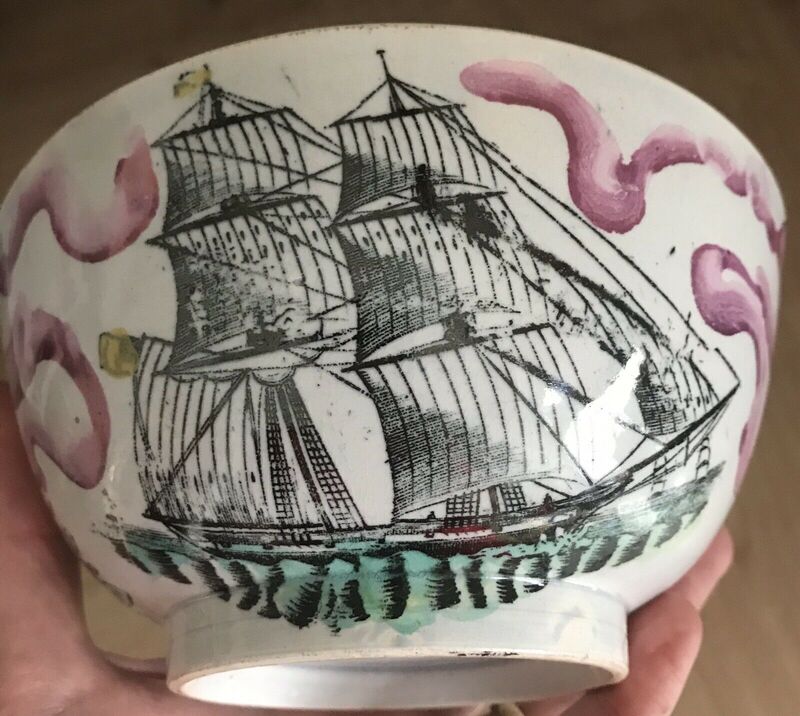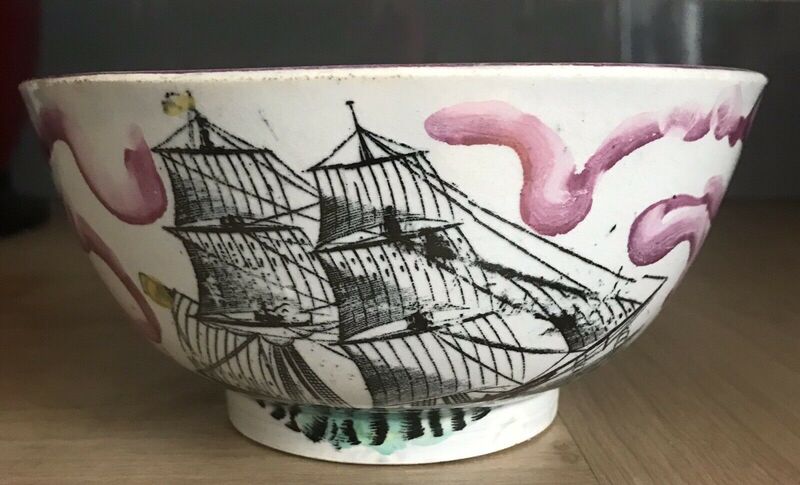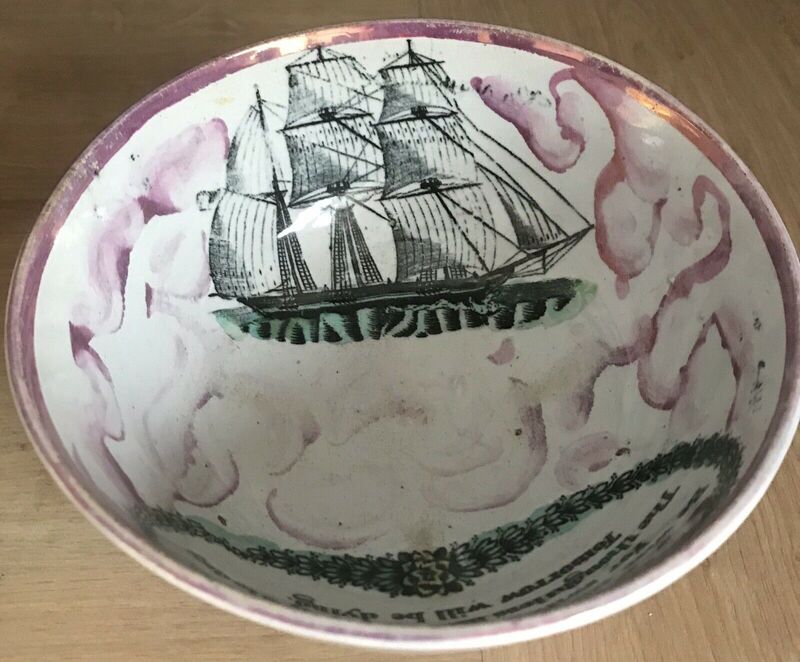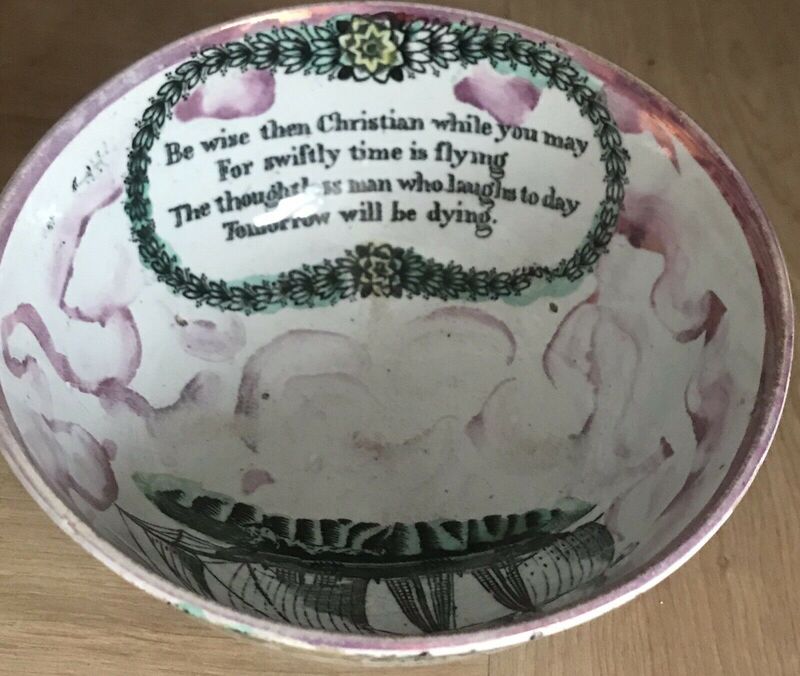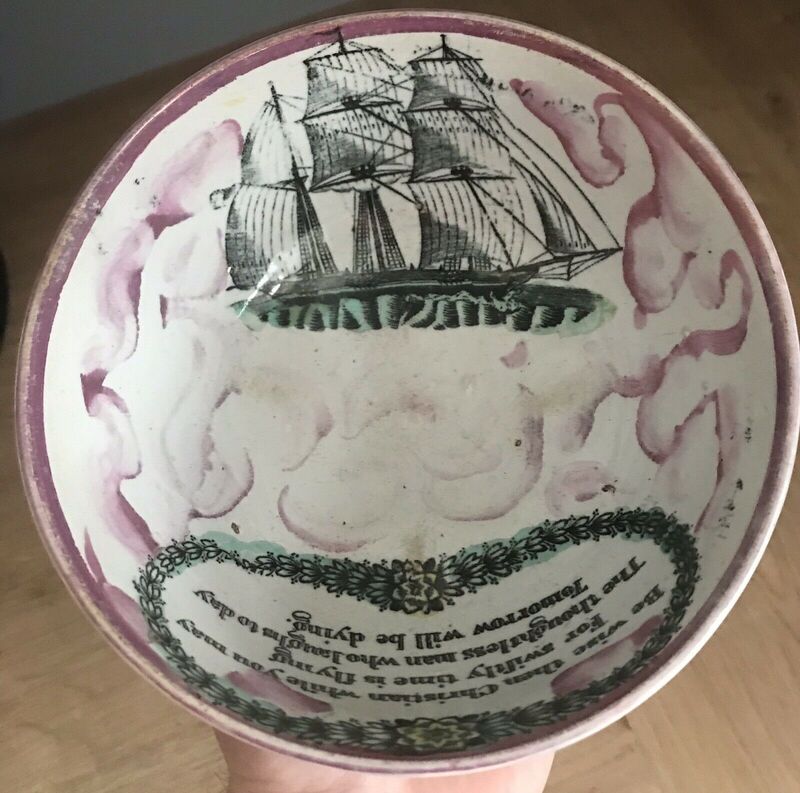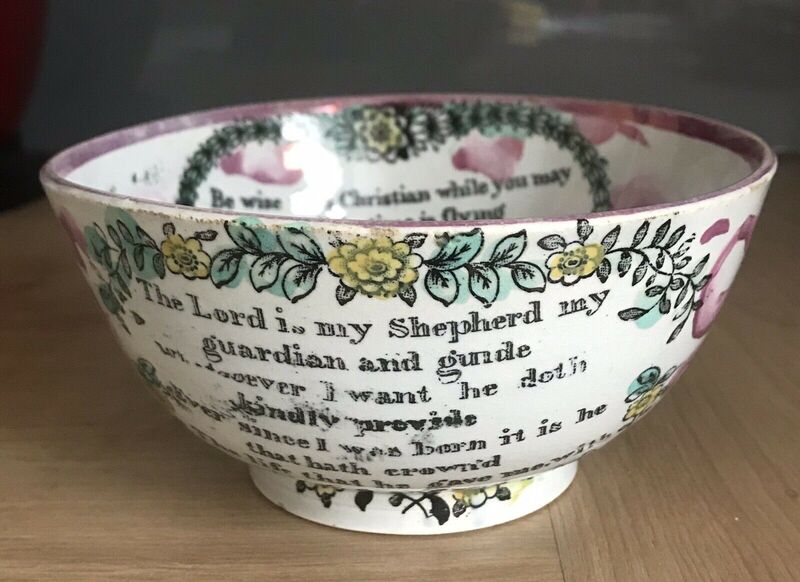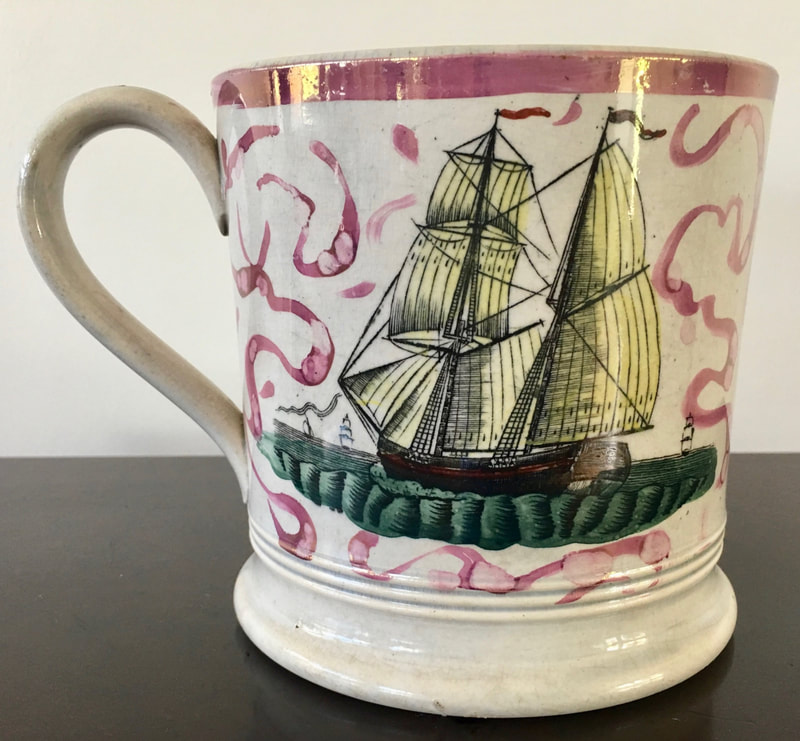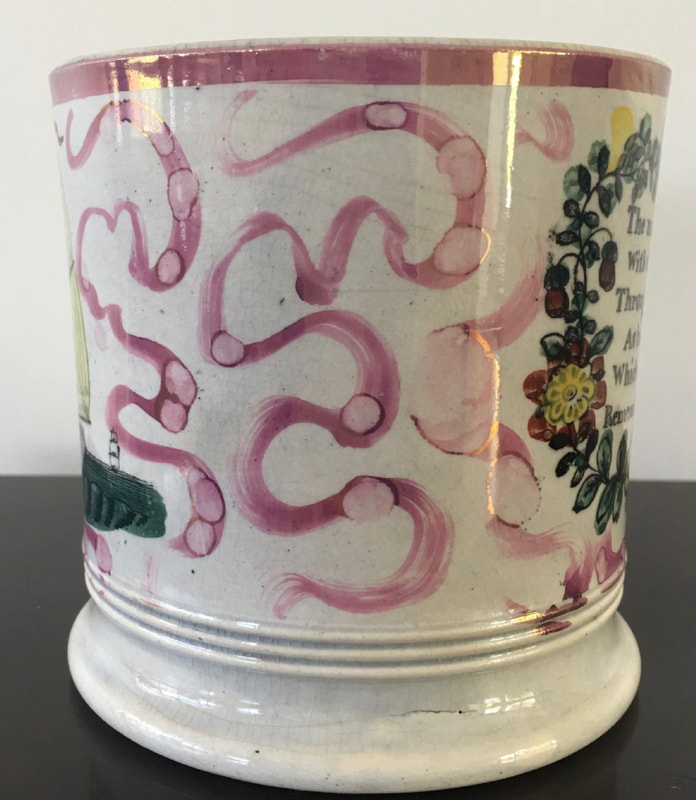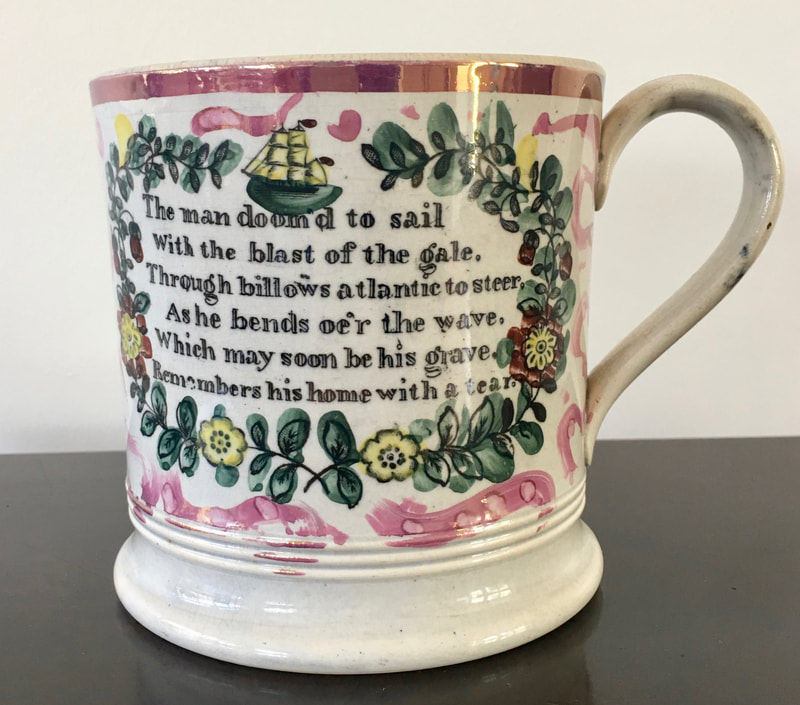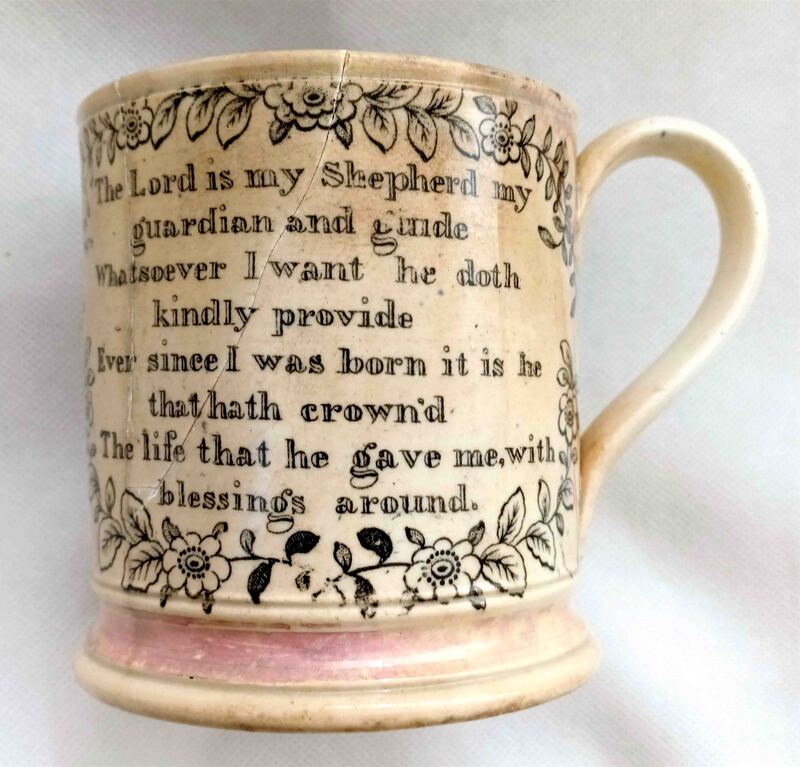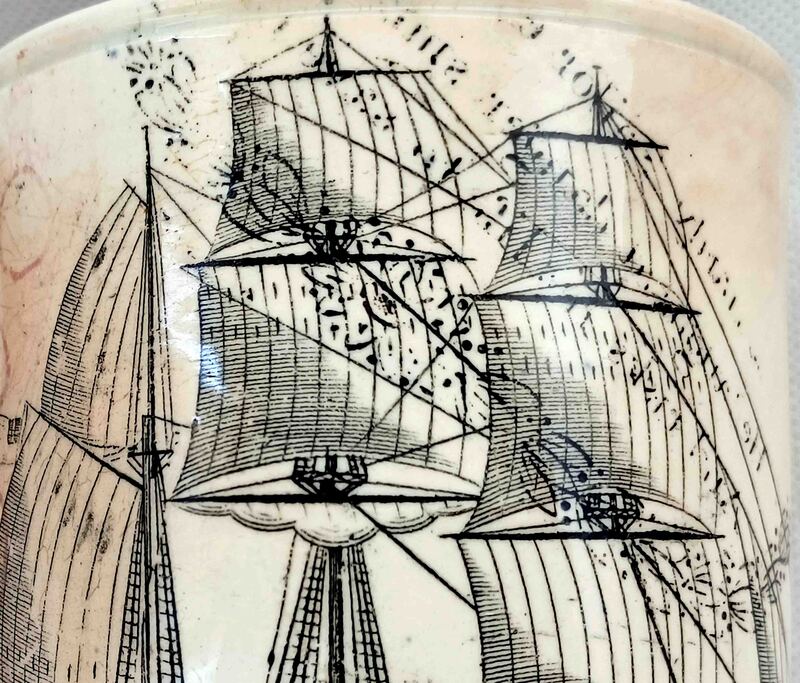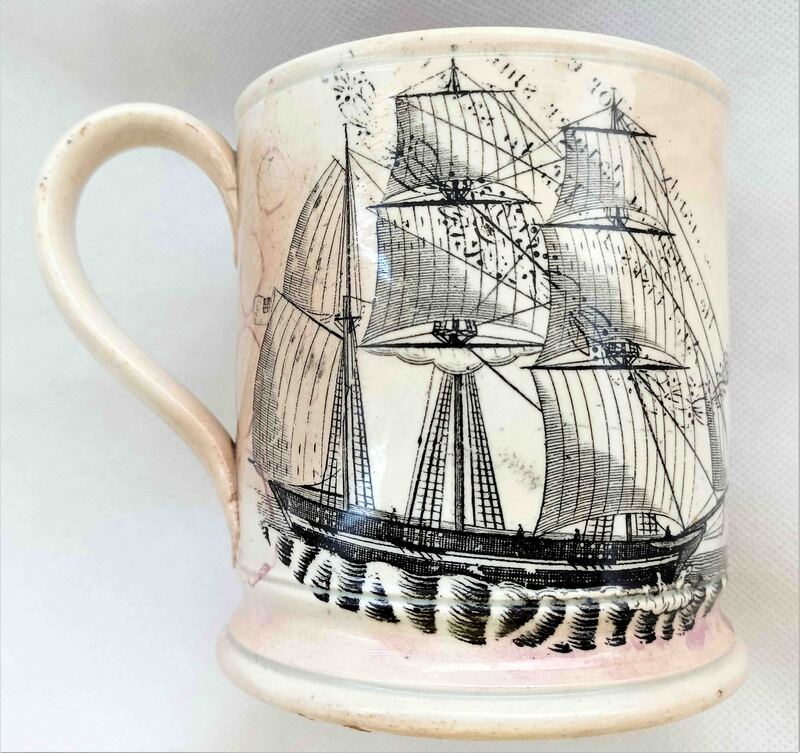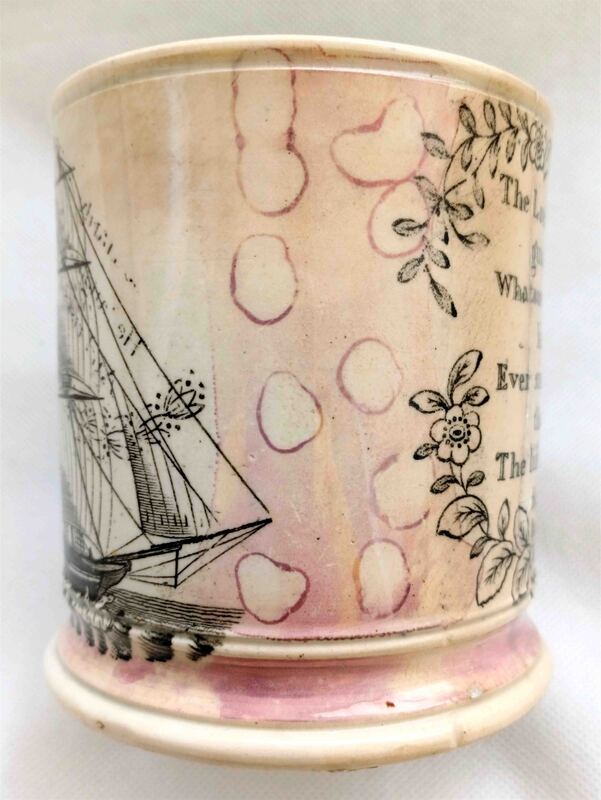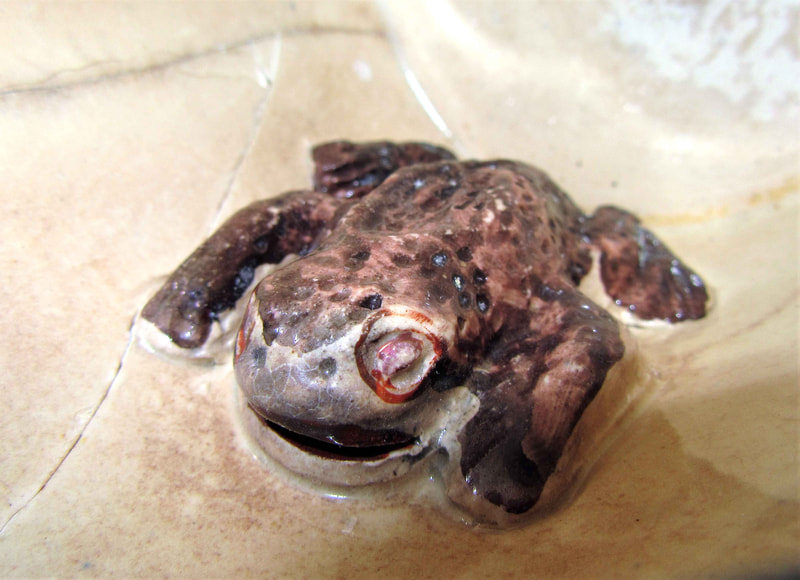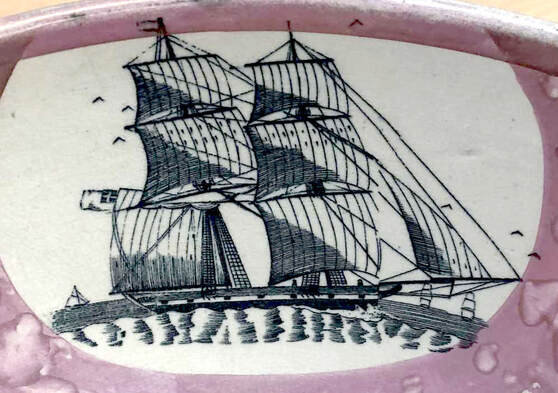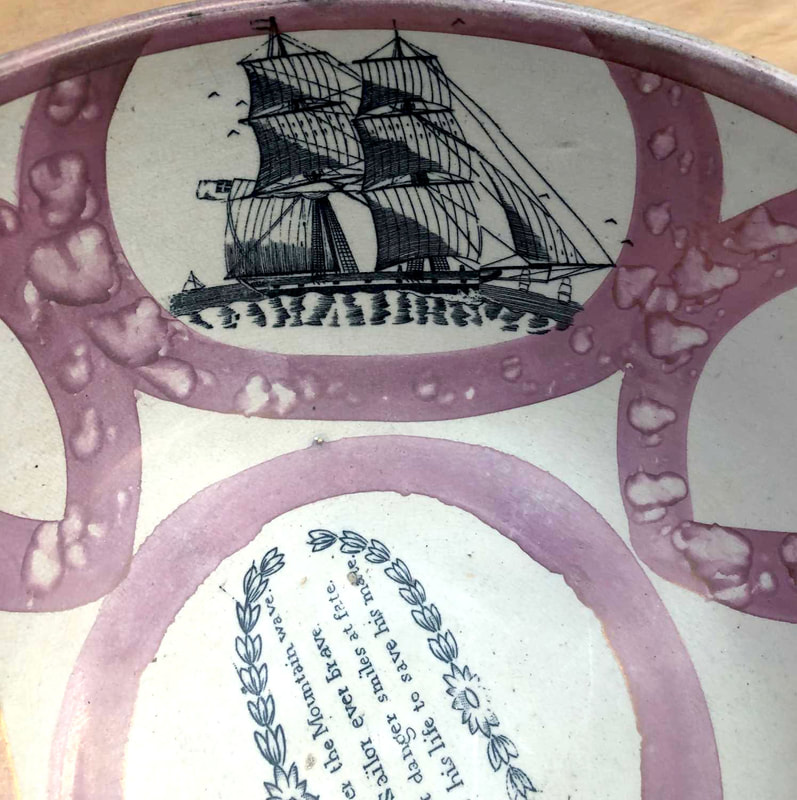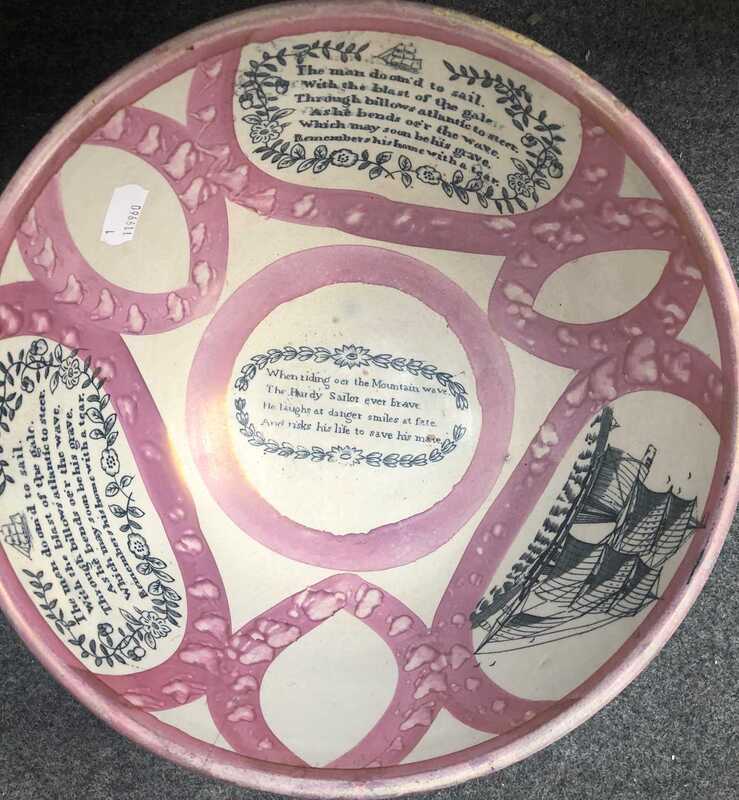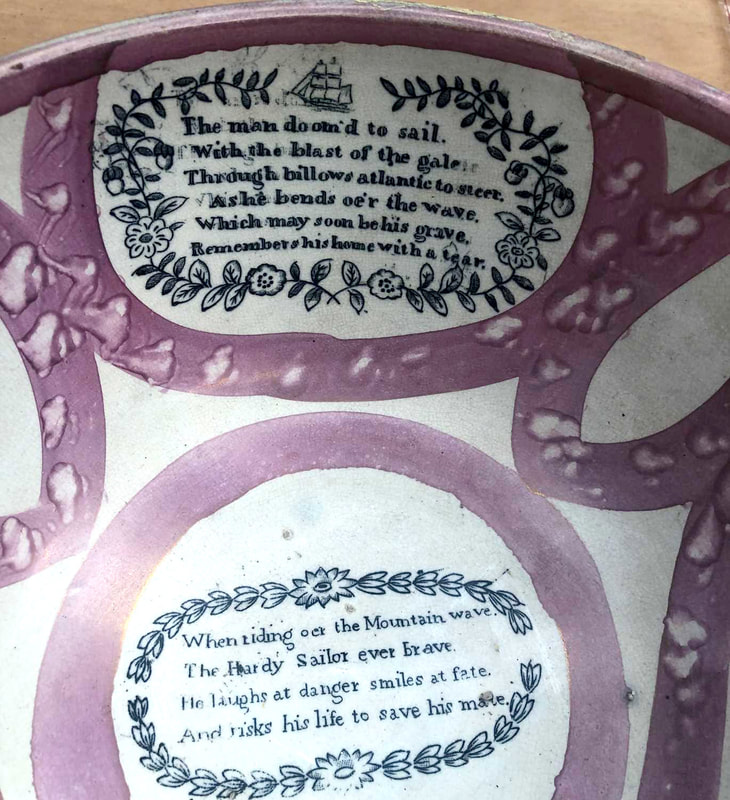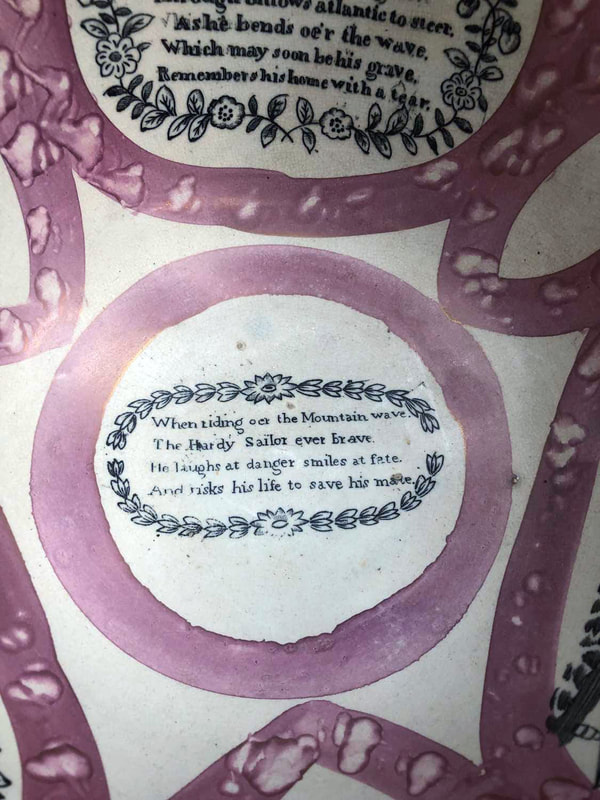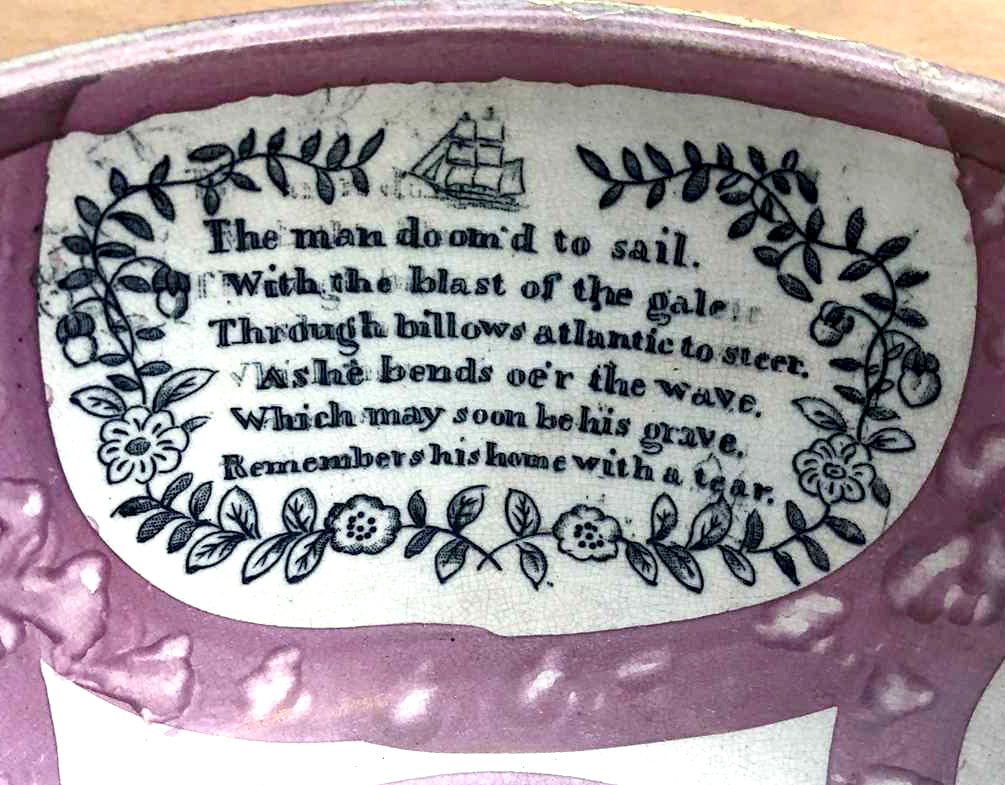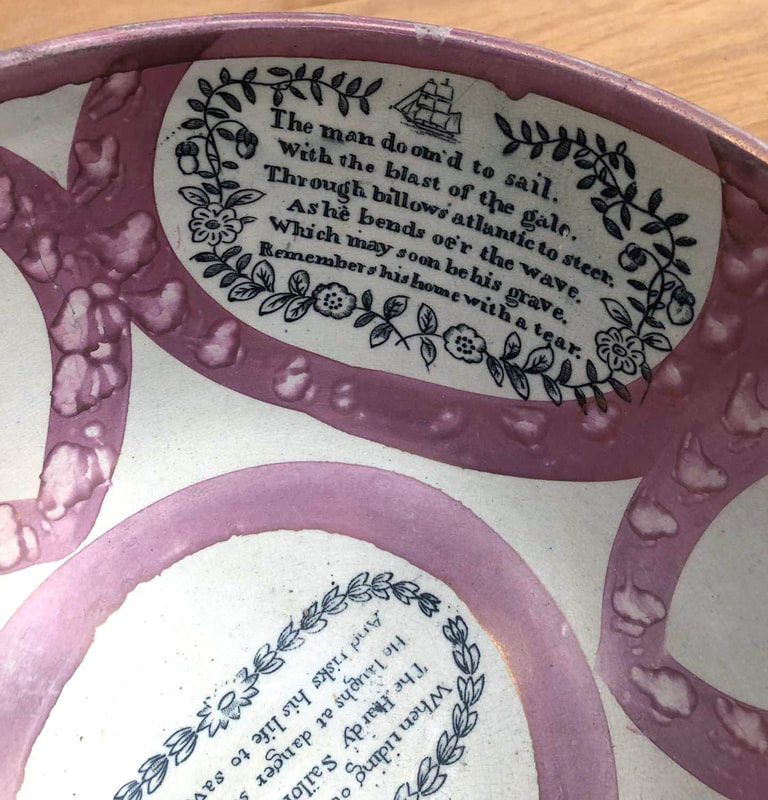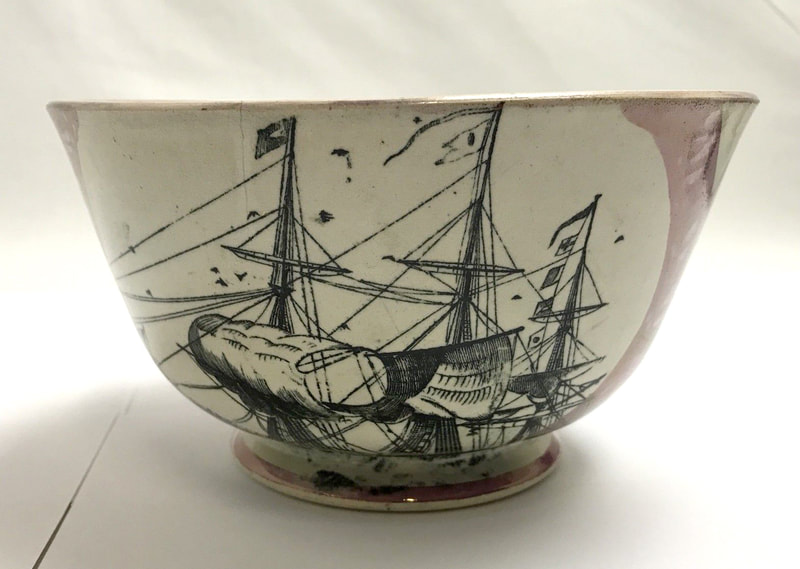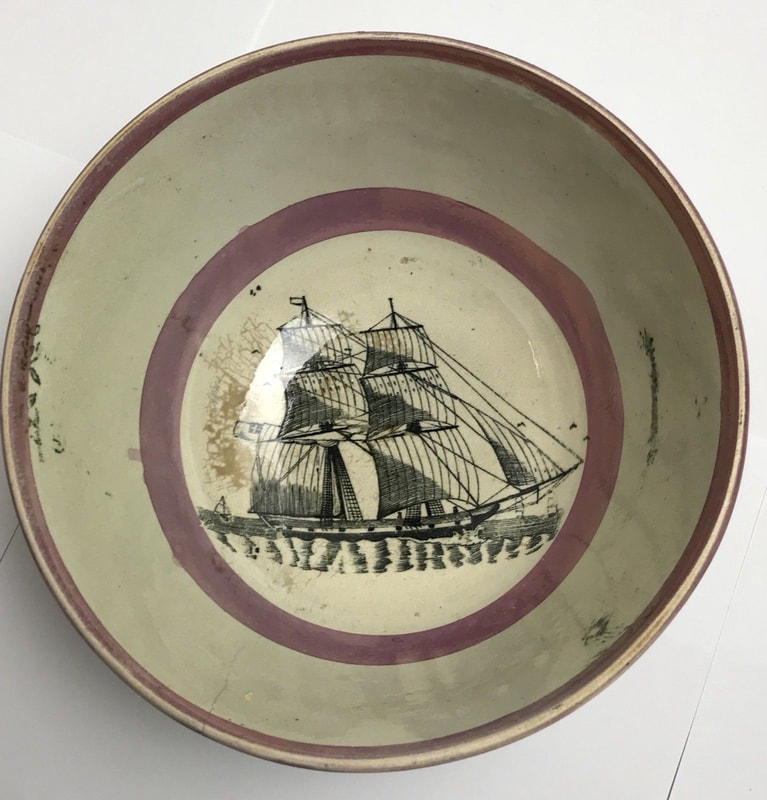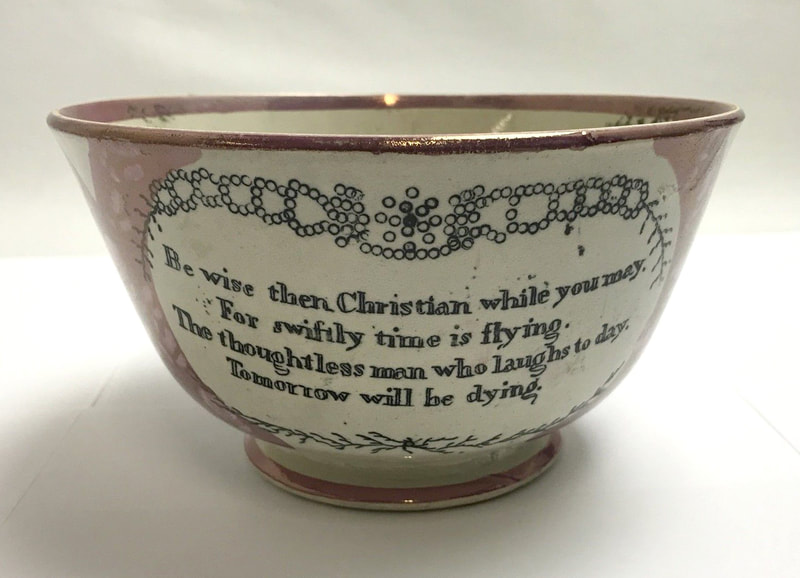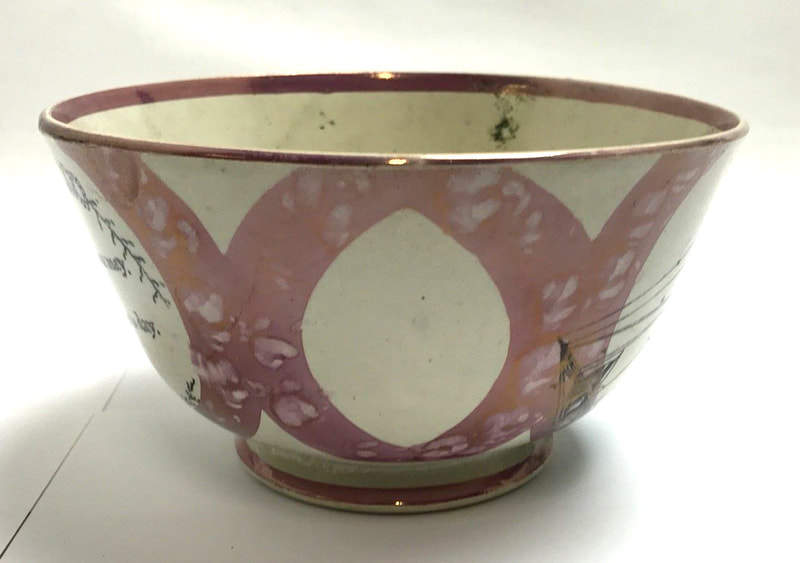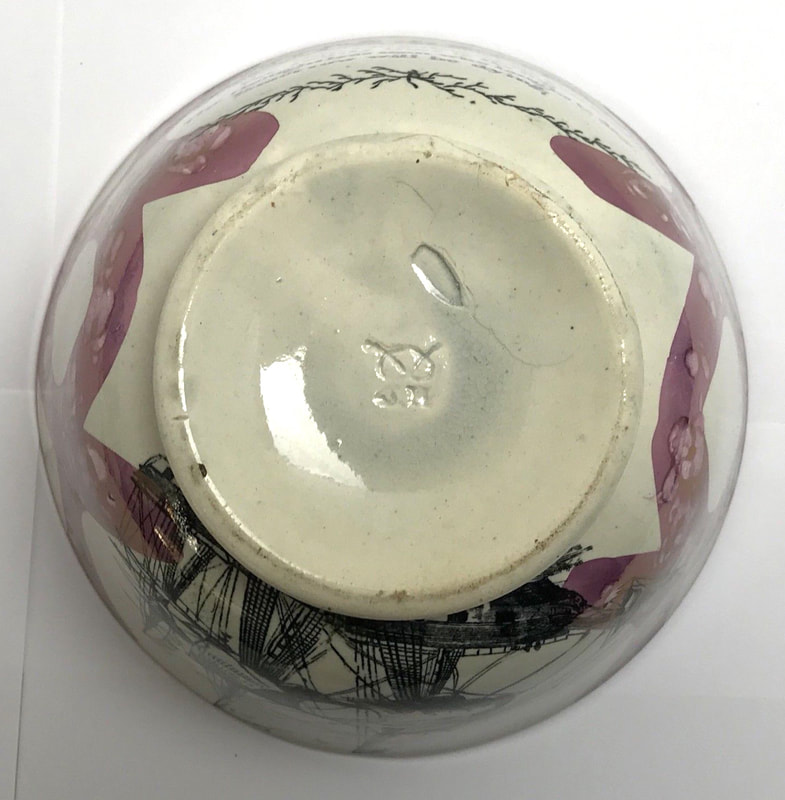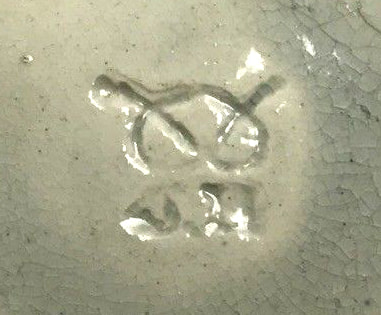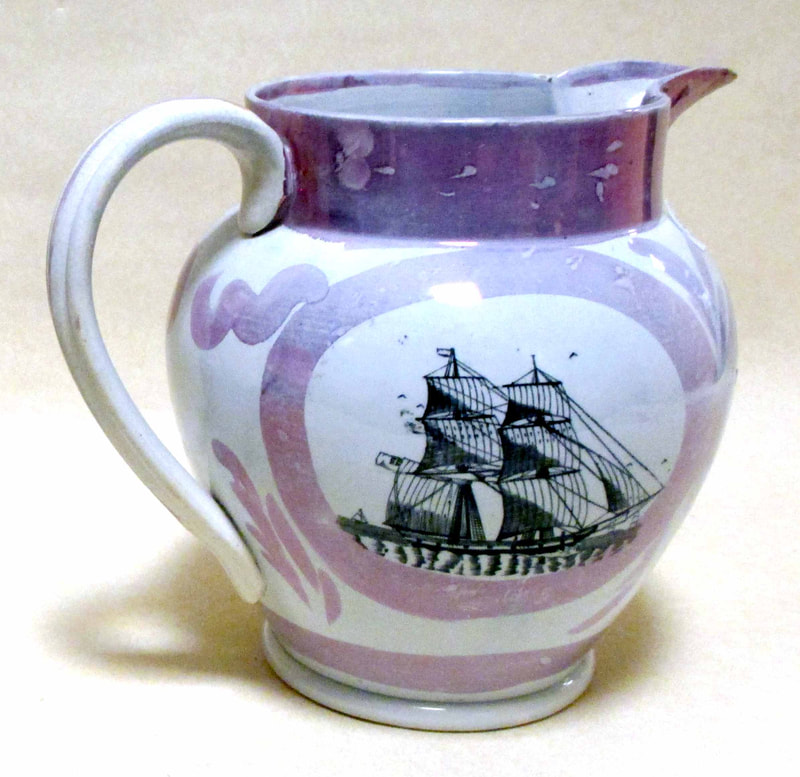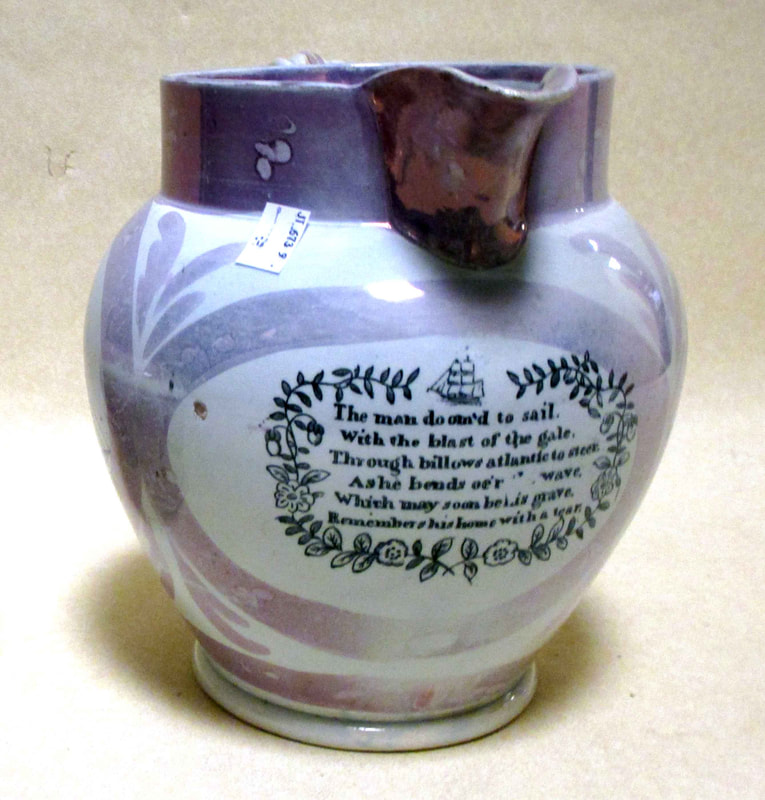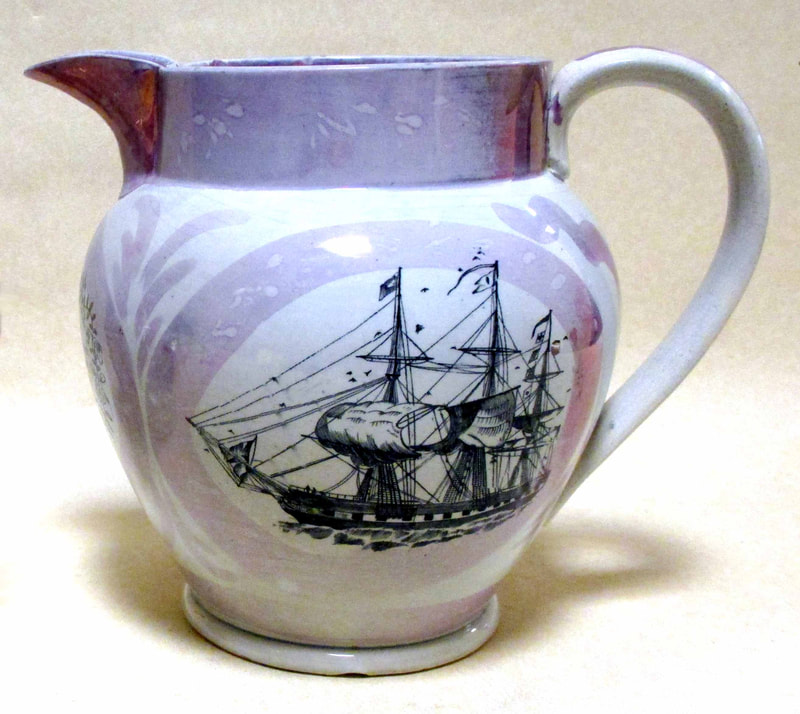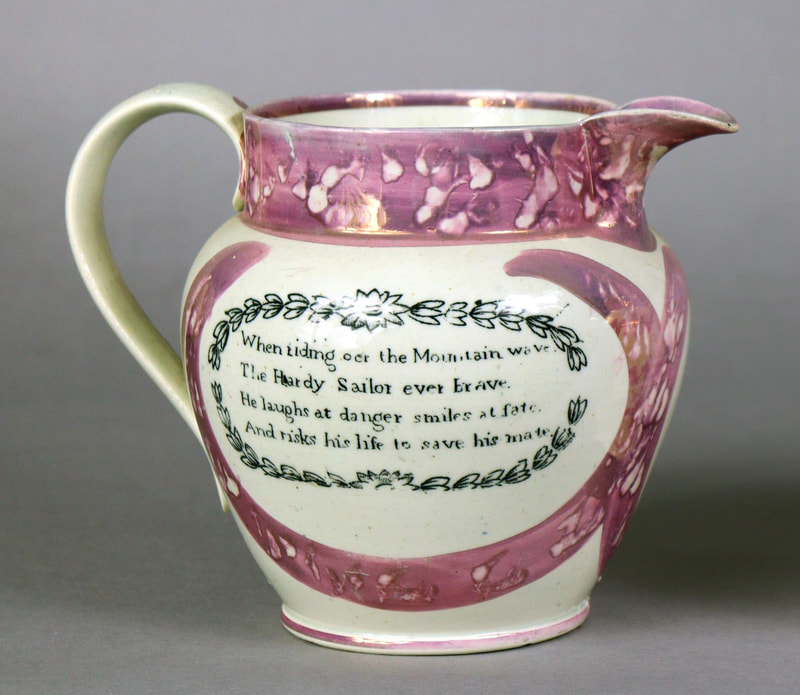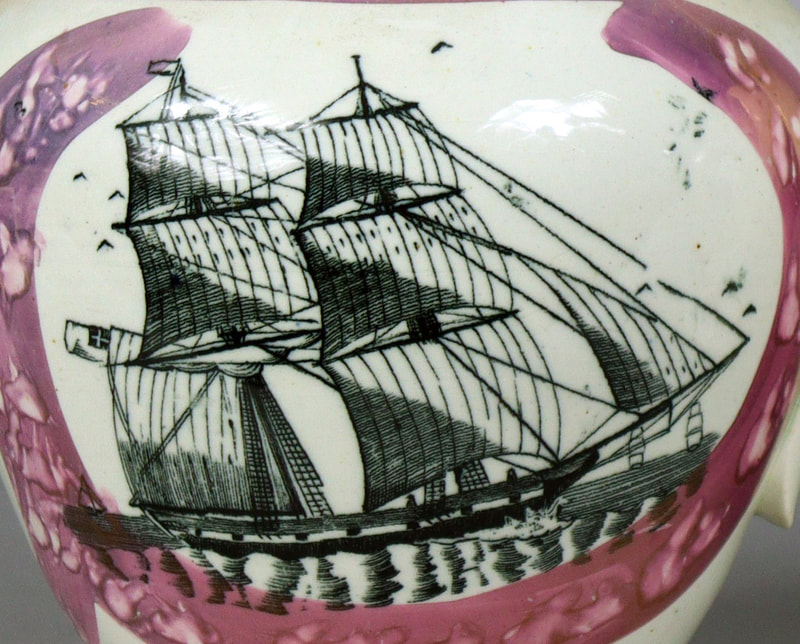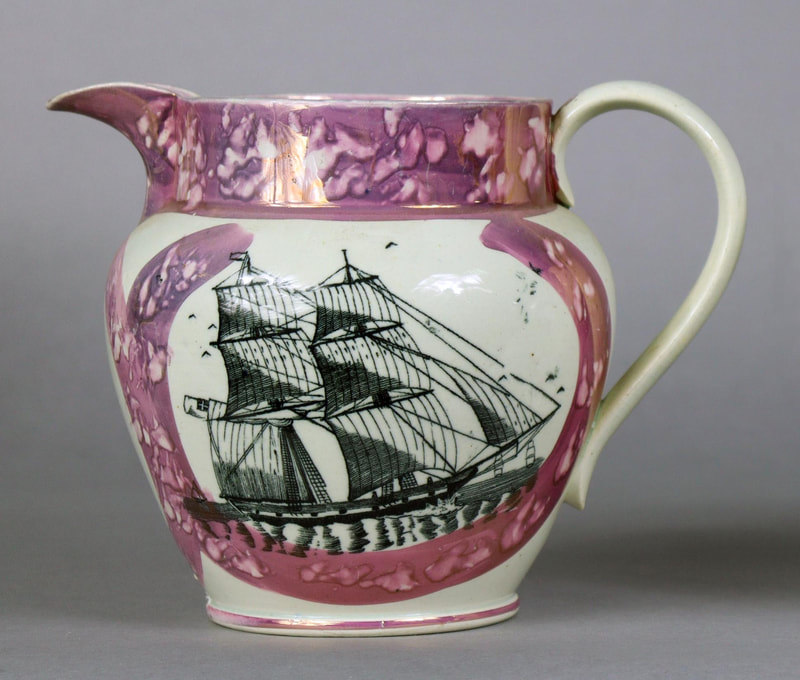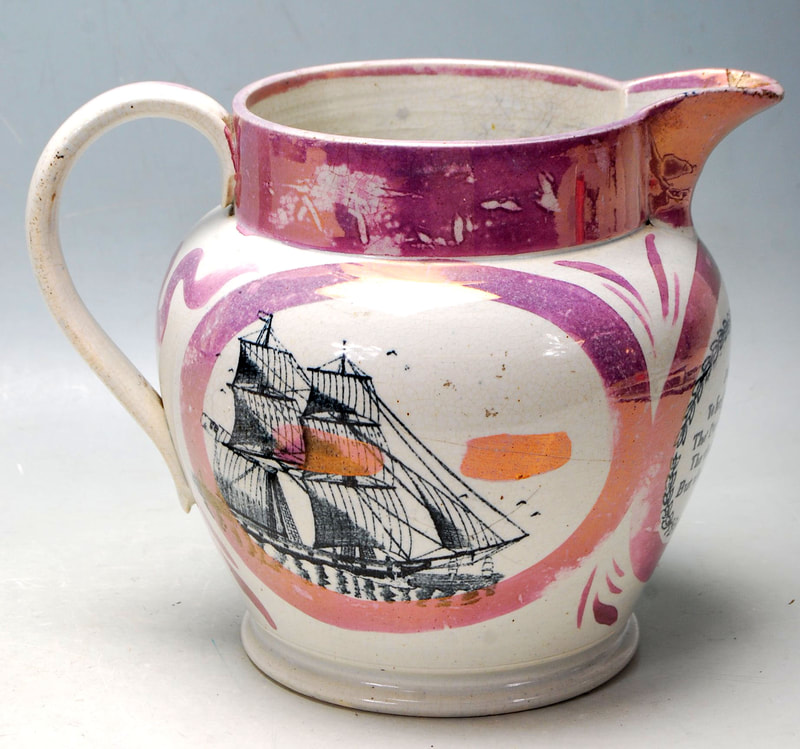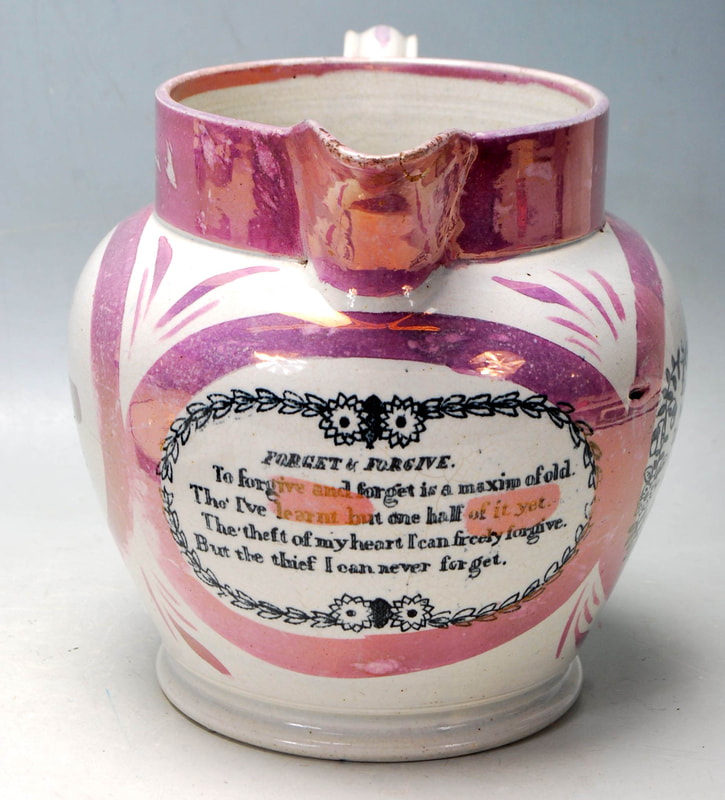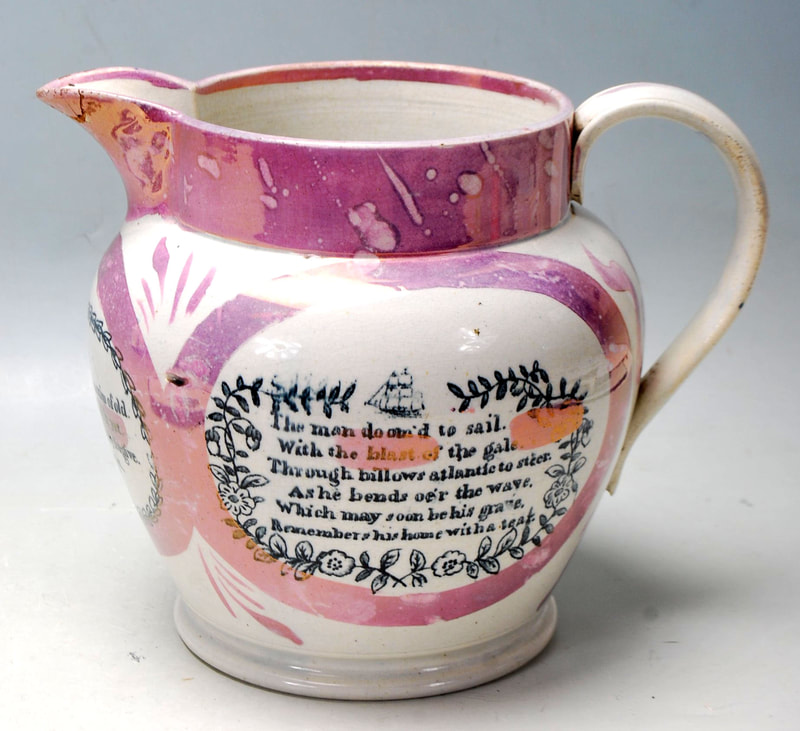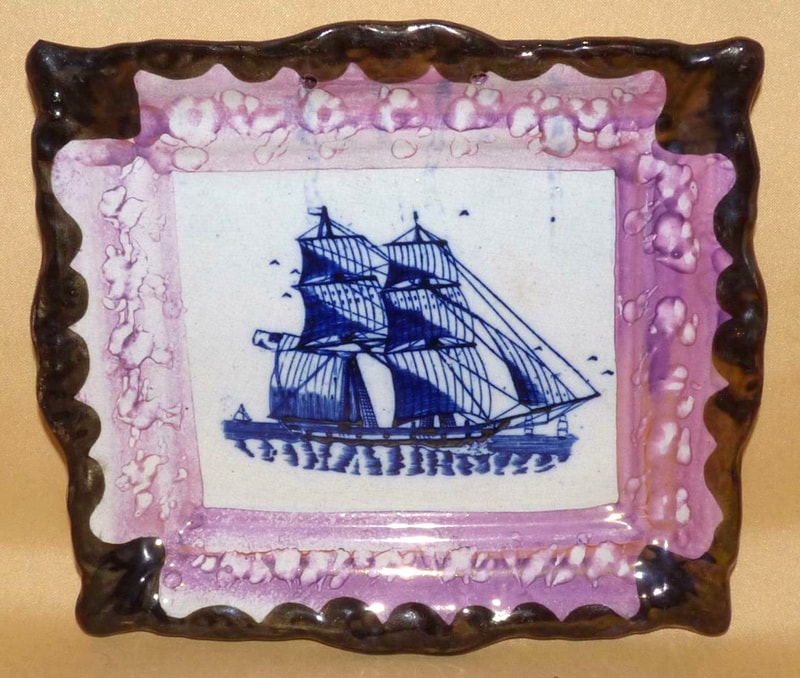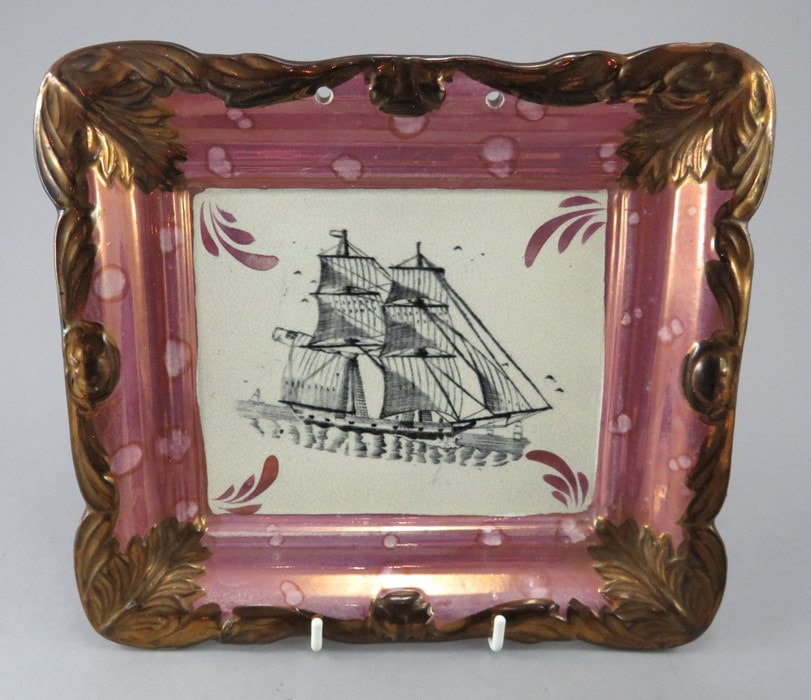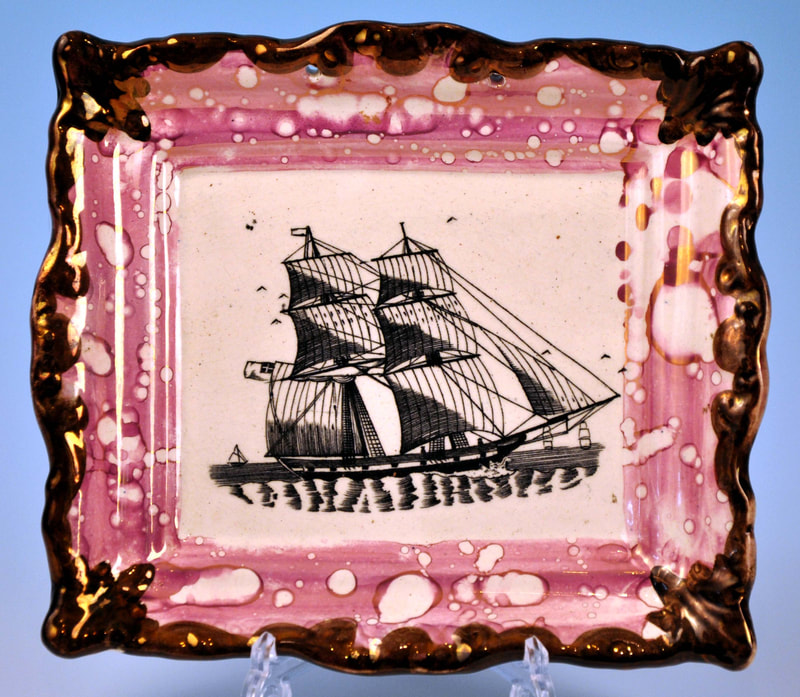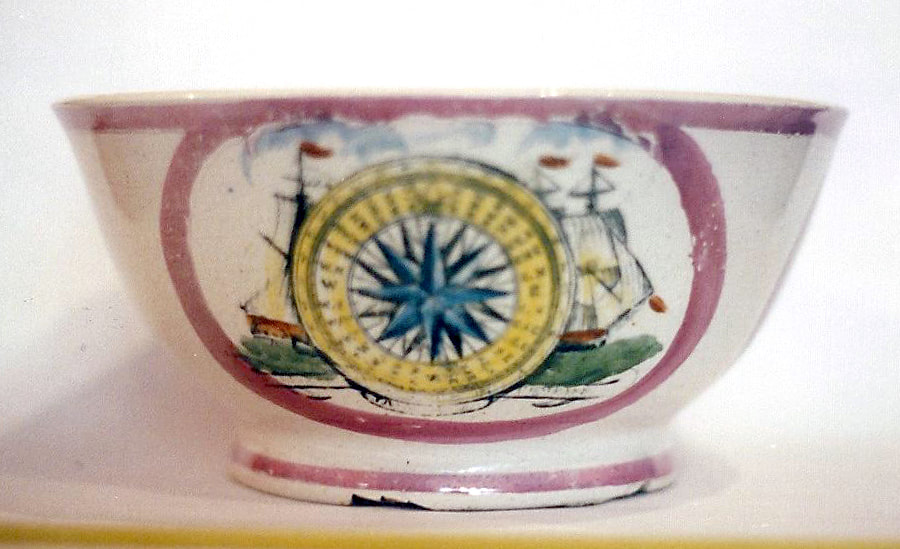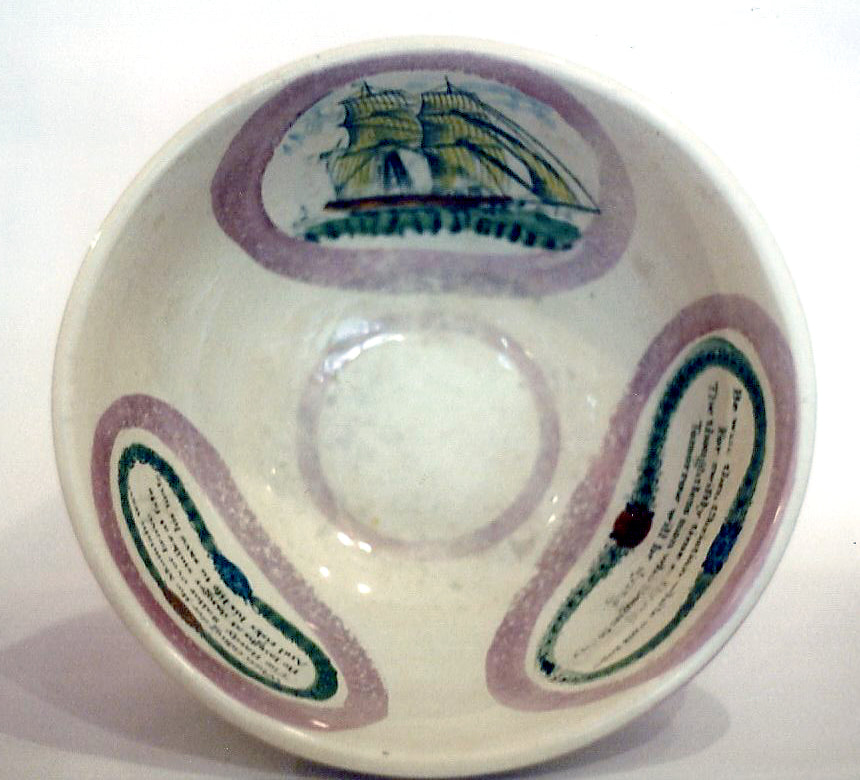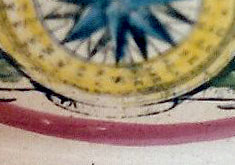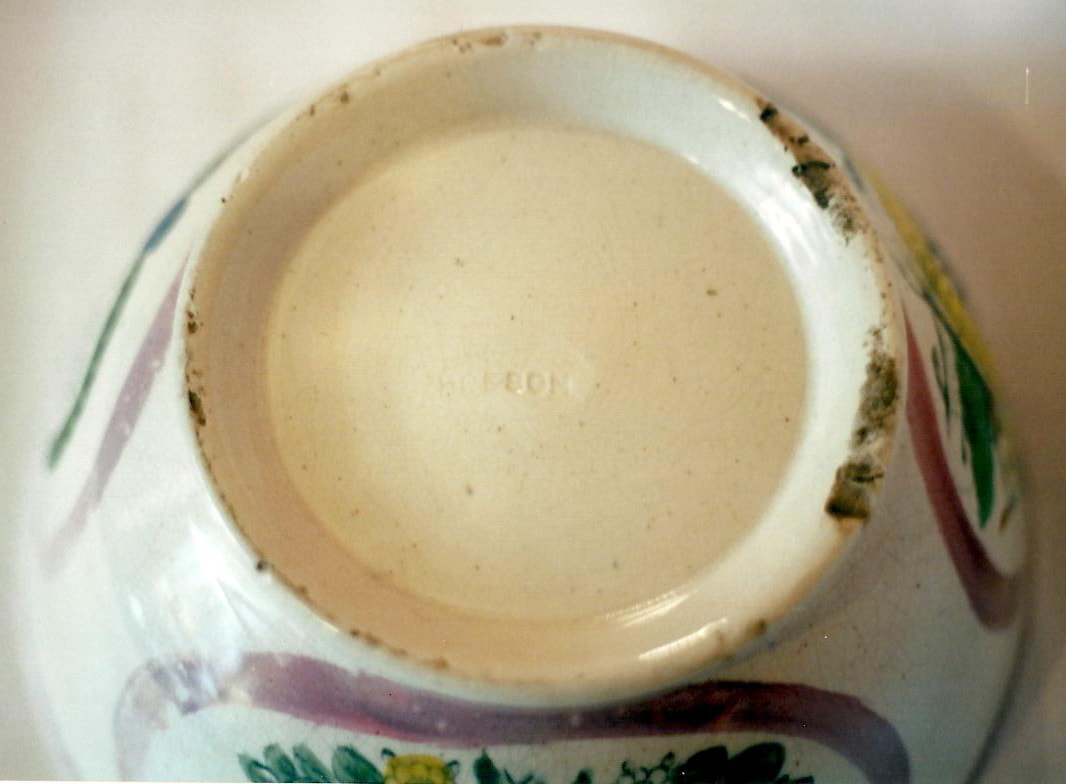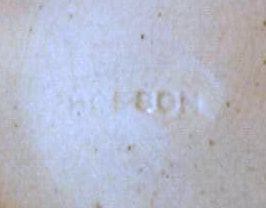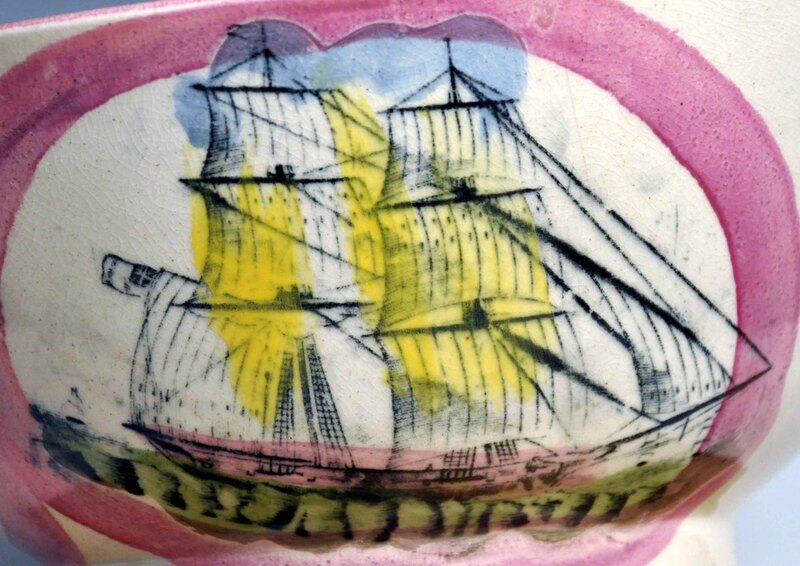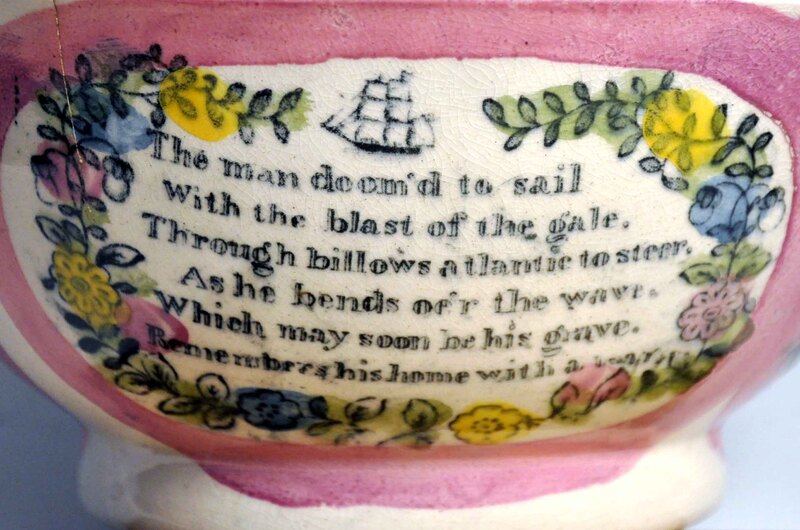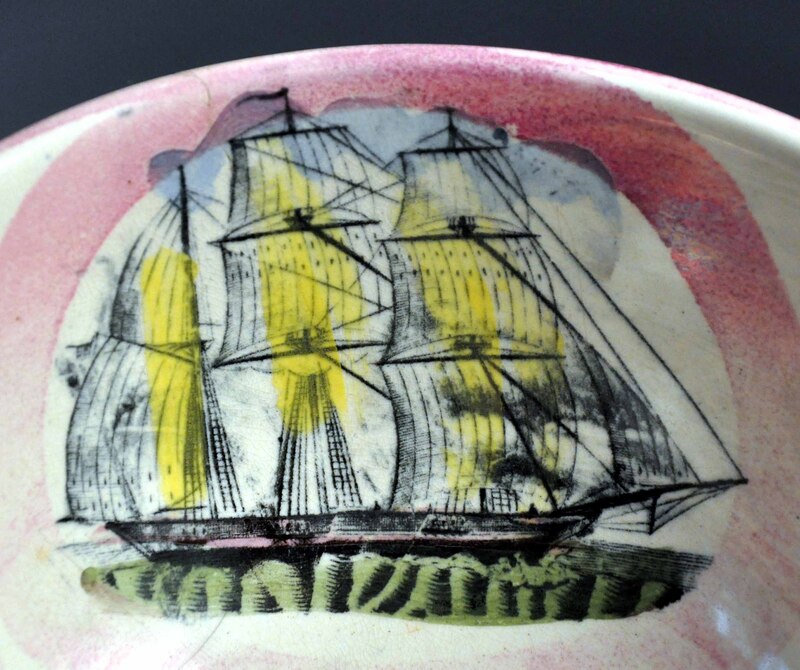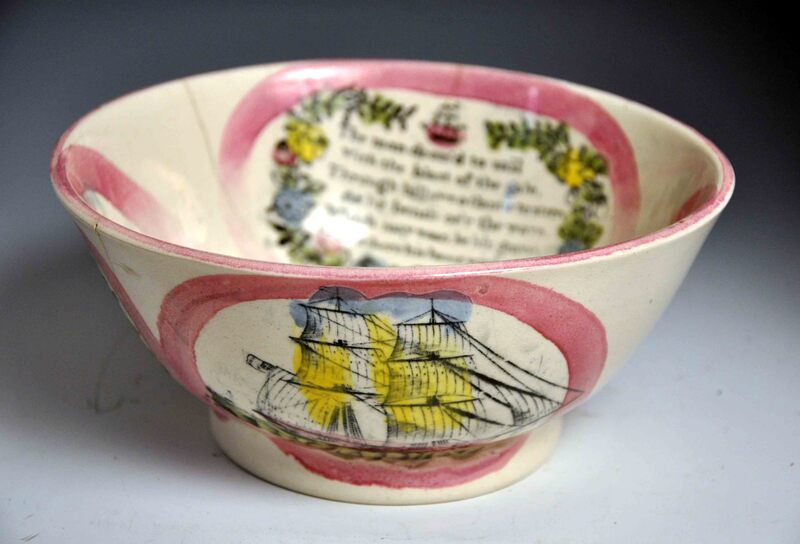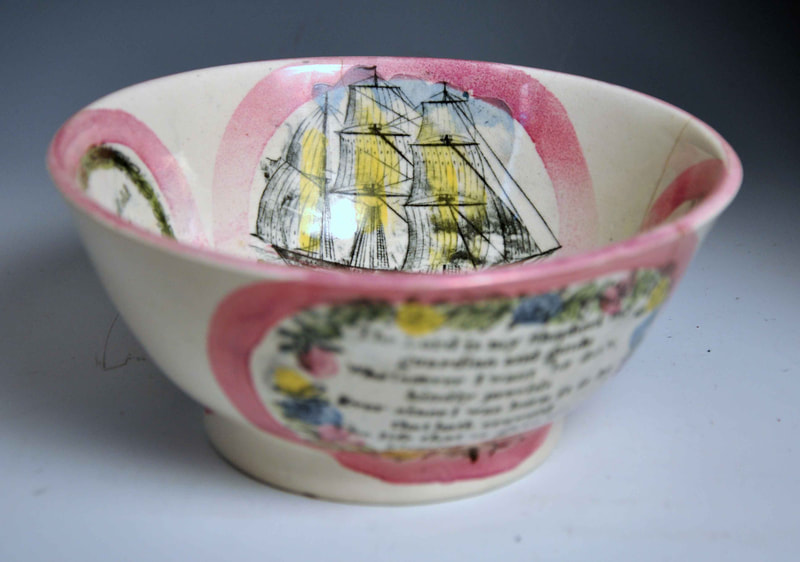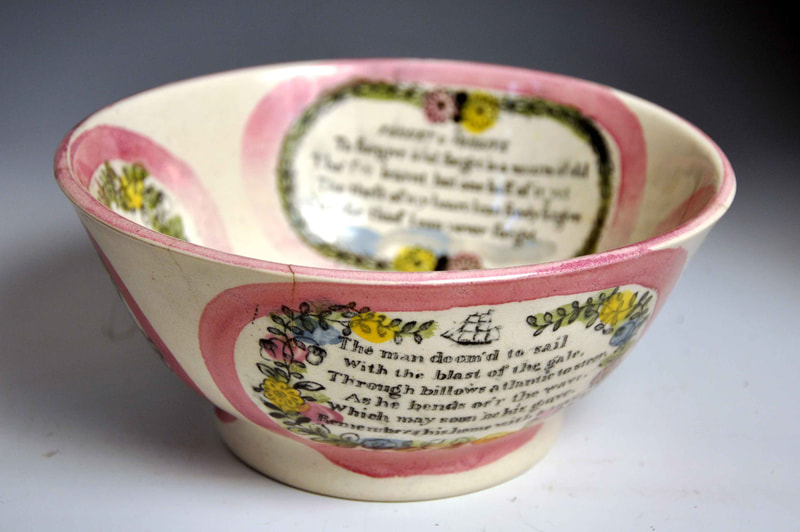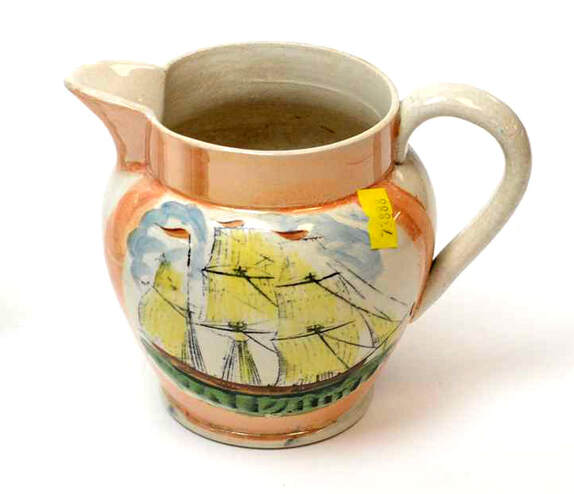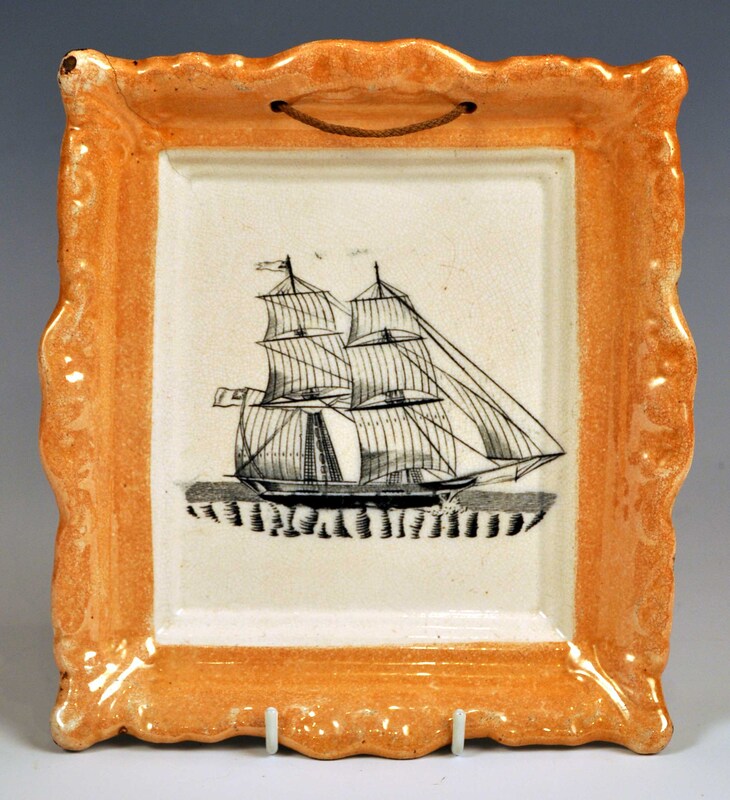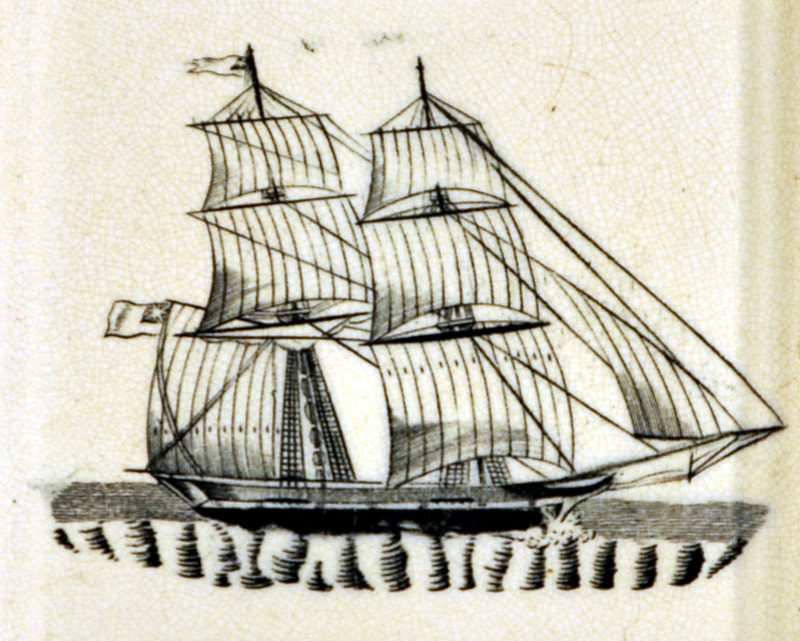Untitled ship (Gudrun type) – Sunderland
Images of an untitled square-rigged ship were used by both Wearside and Tyneside potteries. The Albion Pottery (c1864, Newcastle) produced a similar transfer titled 'Gudrun', which I have used as the generic title for this type of ship transfer. However, the earliest ship transfer of this type that I have found is on the c1850 jug below from the Garrison Pottery, Sunderland.
Dixon, Phillips & Co, Garrison Pottery, Sunderland
This transfer seems to have been particularly popular on these eel pots or butter dishes, again c1850.
A wash bowl, c1850, with an impressed mark 'Dixon Co' over the number '8'. Beneath it, a broad-footed bowl of similar age and with similar decoration.
Gudrun type – Tyneside
Galloway & Atkinson, Albion Pottery, Newcastle, c1864
Galloway and Atkinson produced the only titled version of this transfer during their short-lived partnership at the Albion Pottery (formerly owned by the Maling family and known as the Ouseburn Bridge Pottery).
Attributed to Thomas Fell, St Peter's Pottery, Newcastle
Until I found this impressed bowl, I attributed all these Tyneside bowls with wavy lustre decoration to North Shields. However, the impressed crown mark is known to have been used by Fell. There is one ship on the horizon on either side of the central ship.
Below, a willow pattern meat plate with the full array of Fell marks.
Two jugs with the 'Fell' version of the transfer.
Another large jug with the transfer but without coloured enamels (clobbering) to the transfer. Interestingly, it has a greyed out 'JH' for John Hobson, below the Mariners' Compass transfer (see below).
These plaques have what appears to be a degraded imprint from the 'Fell' transfer plate. Received wisdom is that this plaque form is firmly attributable to North Shields, so more research needs to be done. However, note the similarity of enamelling of the left plaque to the marked bowl above. Bell says that St Peter's Pottery closed in 1890.
Finally, a bowl with the Fell-attributed ship and May Peace and Plenty transfers, and an impressed London mark. Bowls with the John Carr & Sons impress appear with very similar wavy lustre decoration (see below).
Attributed to John Carr & Co, Low Lights Pottery, North Shields
In this version, there are no ships on the horizon. The first jug below has an inscription for 1846.
The mug below with strap handle has very similar horizontal brush strokes of lustre to the jug above.
Below an undecorated bowl with the 'Carr' version of all of the three ship transfers in this series.
|
The above right ship transfer, with a triangular sail at the back, is easily distinguishable from the Patton version. Note the rows of vertical dashes on the sails (reefing lines). On the Carr version (detail shown near right), there are two rows on the middle sails, and one row on the bottom sail. Whereas, the Patton version (detail shown far right) has no reefing lines on the bottom sail. More Carr examples with the other ships are shown below. |
|
Above, a well decorated wash ewer. Below, three typical North Shields jugs from the 1840s or 50s.
|
The Carr version of the ship transfer above has reefing lines on the triangular sails at the front of the ship (see near right detail). The Patton version has none (see far right detail).
Below two distinctive jugs with the Carr transfers. This form of lustre decoration around the collars of jugs appears to be unique to North Shields. |
Plaques with these two ships are hard to come by.
A bowl with the Carr transfers and an impressed 'LONDON' mark, known to have been used by several North East potteries, presumably on items destined for a London retailer. This version, with a number over a fouled anchor, appears to be specific to Carr. Note the wavy lustre decoration is not as fluid as on the Fell-attributed bowls above.
John Patton at the Phoenix Pottery, Newcastle
Below, a jug with a dated inscription for 1852.
A bowl with the Patton version of two of the three ships. Beneath it, a mug with the third ship and similar swirling lustre decoration.
The mug below has the Patton ship transfer accidentally over-printed with the 'When riding o'er the mountain wave' verse, but in mirror image. This may have happened in the water bath when the transfer tissue was soaked off the item after application. Sometimes fragments of other transfers appear on the back of plaques. The frog in this mug, with red eyes, is reminiscent of those used by the Sunderland (Garrison) Pottery in the 1820s and 30s.
Another frog mug with the transfer. The frog has pink lustre eyes.
Unidentified Tyne Pottery – John Hobson plate 1
Although this large bowl is unmarked, it has transfers associated with John Hobson (see below). There are two ships on the horizon to the right of the ship , and another on the left.
The bowl below has an imprint with a Staffordshire knot (sometime appropriated by the North East potters) and the initials 'JH', presumed to stand for John Hobson.
Below, three jugs with the transfer. It appears that John Hobson, like Fell, did not have versions of the other two ship transfers. This helps explain why this ship is more common than the other two.
Three plaques with the 'Hobson' version of the transfer.
Unidentified Tyne Pottery – John Hobson plate 2
This is the Patton version of the ship transfer without seagulls, which was apparently acquired by a potter named Hobson. See the relevant Mariners' Compass page for discussion about the bowl below with an old obliterated John Patton mark, and the 'HOBSON' impress.
This bowl, although unmarked, has degraded transfers and lustre and crude enamel decoration that are very similar to the bowl above.
A small orange lustre jug with the Patton version of the transfer. The crude enamelling is not dissimilar to the bowl above. Similar orange lustre jugs were produced in some quantity by Ball's Deptford Pottery.
Perhaps Ball's Deptford Pottery or one of the Staffordshire potteries
This is very similar to the Carr version above. However, there are no reefing lines on the two middle sails. The Staffordshire potteries are known to have produced green-bordered plaques in this portrait format.
